Text
Pink Lips: 5 Powerful Secrets for Naturally Smooth
I. Introduction
A. Brief Overview of the Importance of Lip Health:
The health of our lips often takes a back seat in our daily skincare routine, but it plays a crucial role in our overall well-being. Lips are not just a focal point of our facial aesthetics; they also serve functional purposes. Well-maintained lips contribute to a confident smile, effective communication, and even proper nutrition.
Key Points:
- Lips are a sensitive part of the body, with a thin layer of skin that lacks the protective outer layer found in other areas.
- The condition of our lips can be a reflection of our overall health and lifestyle.
B. Common Issues Affecting Lips (Dryness, Chapping, etc.):
Despite their importance, lips are often subjected to various environmental and lifestyle factors that can lead to common issues:
- Dryness:
- Lips lack oil glands, making them susceptible to drying out, especially in harsh weather conditions.
- Causes can include dehydration, exposure to wind or sun, and certain medications.
- Chapping:
- Dryness can progress to chapping, where the lips develop small, painful cracks.
- Frequent licking of the lips can exacerbate chapping, as saliva contains enzymes that can irritate the delicate skin.
- Sun Damage:
- Lips, like the rest of the skin, can suffer from sun damage, leading to premature aging and an increased risk of skin cancer.
- UV rays can cause collagen breakdown and contribute to the development of fine lines on the lips.
- Allergies:
- Ingredients in lip products, toothpaste, or certain foods can trigger allergic reactions, causing redness, swelling, or itching.
Examples:
- Imagine waking up to dry, cracked lips on a winter morning, a common scenario highlighting the importance of daily lip care.
- Lips exposed to prolonged sun exposure during outdoor activities without protection can experience noticeable damage over time.
Understanding these common issues sets the stage for exploring the comprehensive care routine and natural remedies to maintain optimal lip health.
II. Understanding Lip Health
A. Anatomy of the Lips:
The lips, though seemingly simple, have a complex structure that plays a vital role in both aesthetic and functional aspects:
- Thin Epidermis:
- The epidermis, or outer layer of the skin on the lips, is much thinner than in other areas of the body, making lips more susceptible to environmental factors.
- Lack of Sebaceous Glands:
- Unlike the skin on the rest of our body, lips lack sebaceous glands that produce natural oils. This absence contributes to their vulnerability to dryness.
- Vermilion Border:
- The distinct border between the red part of the lips (vermilion) and the surrounding skin is an essential aesthetic feature, often highlighted in lip health discussions.
- Blood Vessels:
- Lips have a rich blood supply, which is why they appear red. This vascularization is crucial for the quick healing of any injuries.
Example:
- When you look closely at your lips, you'll notice the delicate balance between the red and white areas, emphasizing the need for specialized care.
B. Factors Affecting Lip Health (Weather, Diet, Habits):
- Weather Conditions:
- Cold Weather: Low temperatures and dry air can strip the lips of moisture, leading to dryness and chapping.
- Hot Weather: Excessive sun exposure can cause sunburn on the lips, contributing to long-term damage.
- Dietary Habits:
- Hydration: Insufficient water intake can lead to dehydration, affecting the lips' moisture levels.
- Nutrient Deficiency: Lack of essential nutrients, especially vitamins like A and E, can impact the health of the lips.
- Lifestyle Habits:
- Smoking: Besides the general health risks, smoking can contribute to discoloration and wrinkles around the lips.
- Lip Biting/Licking: Constant biting or licking can lead to irritation and exacerbate issues like chapping.
Facts:
- Lips are particularly sensitive to dehydration, and they often reveal signs of dehydration before other parts of the body.
- The vermilion border, responsible for the distinct color of the lips, is more prone to sun damage due to its lack of melanin.
Understanding the intricate anatomy of the lips and recognizing the various factors influencing their health provides a solid foundation for implementing effective lip care practices.

III. Lip Care Routine
A. Daily Care Tips
- Hydration:
- Importance: Hydrated lips are less prone to dryness, cracking, and discomfort. Drinking an adequate amount of water ensures overall hydration, benefitting the lips as well.
- Tips:
- Carry a reusable water bottle to encourage consistent hydration throughout the day.
- Use hydrating lip balms with ingredients like hyaluronic acid or glycerin.
- Regular Exfoliation:
- Importance: Exfoliating removes dead skin cells, promoting smoother and healthier lips. It enhances the effectiveness of lip balms and treatments.
- Tips:
- Gently exfoliate the lips 2-3 times a week using a soft toothbrush or a homemade sugar scrub.
- Choose lip exfoliants with natural ingredients to avoid irritation.
- Sun Protection:
- Importance: Lips are susceptible to sun damage, which can lead to dryness, premature aging, and an increased risk of skin cancer.
- Tips:
- Use lip balms with SPF to protect against harmful UV rays.
- Reapply lip balm with SPF regularly, especially when spending extended periods outdoors.
Facts:
- Lips lack melanin, making them more vulnerable to UV damage, emphasizing the importance of sun protection.
- Dehydration can be a common cause of chapped lips, and maintaining optimal hydration levels helps prevent this issue.
Examples:
- Picture yourself sipping water throughout the day, not only benefiting your overall health but also contributing to plump, well-moisturized lips.
- Regularly incorporating a gentle exfoliation routine can be as simple as a quick, enjoyable step in your nightly skincare regimen.
Implementing these daily care tips ensures that your lips receive the attention they deserve, contributing to their overall health and a beautiful, comfortable appearance.
B. Nightly Care Routine
- Moisturizing Treatments:
- Importance: Nighttime is an opportune moment to provide intense moisture to the lips, aiding in their repair and rejuvenation.
- Tips:
- Use a rich, hydrating lip balm or treatment before bedtime.
- Look for ingredients like shea butter, jojoba oil, or vitamin E for deep nourishment.
- Overnight Remedies:
- Importance: Overnight remedies can address specific lip concerns and maximize the body's natural healing processes during sleep.
- Tips:
- Apply a thin layer of coconut oil to soothe and hydrate the lips overnight.
- Consider using a lip mask with ingredients like honey or aloe vera for added nourishment.
Facts:
- Nighttime is when the body focuses on repairing and regenerating cells, making it an ideal time to apply treatments for maximum effectiveness.
- Lips lose moisture more rapidly during sleep, making nightly care crucial for preventing dryness.
Examples:
- Imagine the luxurious sensation of applying a decadent lip treatment before bed, allowing the nourishing ingredients to work their magic while you sleep.
- Overnight remedies, like a simple honey-infused lip mask, can be a delightful addition to your bedtime routine, ensuring you wake up to soft and supple lips.
By incorporating moisturizing treatments and overnight remedies into your nightly routine, you provide your lips with the care they need to stay healthy and vibrant. This consistent care contributes to preventing issues and maintaining the overall well-being of your lips.
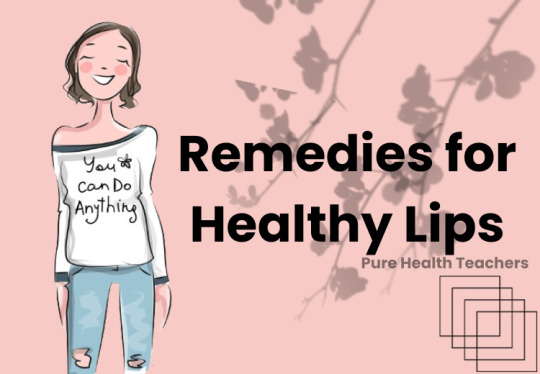
IV. Natural Remedies for Healthy Lips
A. Coconut Oil Benefits:
Introduction:
- Coconut oil has emerged as a popular natural remedy for lip care due to its versatile benefits and rich composition.
- Moisturization:
- How it Works: Coconut oil is a natural emollient, effectively moisturizing the lips and preventing dryness.
- Tips: Apply a small amount of virgin coconut oil to the lips, especially before bedtime, for deep overnight hydration.
- Antibacterial Properties:
- How it Works: The lauric acid in coconut oil possesses antibacterial properties, aiding in preventing infections or irritations on the lips.
- Tips: Use coconut oil to soothe and protect the lips, particularly in harsh weather conditions or after sun exposure.
- Vitamin E Content:
- How it Works: Rich in vitamin E, coconut oil supports skin health and helps in maintaining the youthful appearance of the lips.
- Tips: Look for lip products that contain coconut oil or create your DIY lip balm by combining coconut oil with beeswax and essential oils.
Facts:
- Coconut oil is easily absorbed by the skin, providing quick relief for dry or chapped lips.
- Regular use of coconut oil can contribute to the overall health and resilience of the lips.
Examples:
- Envision the tropical aroma of coconut oil as you apply it to your lips, experiencing instant relief and a pleasant fragrance.
- A simple coconut oil and sugar lip scrub can be both effective and indulgent, gently exfoliating and moisturizing simultaneously.
B. Honey and Its Healing Properties:
Introduction:
- Honey, a natural humectant, has been used for centuries for its healing and moisturizing properties.
- Humectant Properties:
- How it Works: Honey attracts and retains moisture, making it an excellent ingredient for keeping the lips hydrated.
- Tips: Mix honey with a bit of olive oil for a homemade lip mask or incorporate honey-infused lip balms into your routine.
- Antioxidant Benefits:
- How it Works: The antioxidants in honey can help protect the lips from oxidative stress and promote overall lip health.
- Tips: Choose raw, organic honey for maximum antioxidant benefits, either in DIY lip treatments or commercial products.
- Healing and Soothing:
- How it Works: Honey has natural healing properties that can soothe irritated or chapped lips.
- Tips: Apply a thin layer of honey to your lips and leave it on for a few minutes before gently wiping it off for smooth, conditioned lips.
Facts:
- Honey's antimicrobial properties can aid in preventing infections or inflammation on the lips.
- Regular use of honey in lip care routines can contribute to a plump and healthy appearance.
Examples:
- Imagine the luxurious feel of a honey-infused lip balm, providing not only sweetness but also a burst of natural healing.
- A honey and cinnamon lip mask, with the added benefit of cinnamon's circulation-boosting properties, can be a delightful treat for your lips.
Incorporating coconut oil and honey into your lip care routine provides a natural and effective way to keep your lips healthy, moisturized, and protected. These simple yet powerful remedies offer a holistic approach to lip care, combining hydration, protection, and healing properties.
C. Aloe Vera for Soothing and Moisturizing:
Introduction:
- Aloe vera, known for its cooling and healing properties, is a versatile natural ingredient that can benefit the delicate skin of the lips.
- Soothing Effect:
- How it Works: Aloe vera contains compounds that have anti-inflammatory properties, making it ideal for soothing irritated or chapped lips.
- Tips: Apply pure aloe vera gel to your lips for instant relief, especially after sun exposure or in harsh weather conditions.
- Hydration Boost:
- How it Works: Aloe vera is water-dense and helps in hydrating the skin, preventing dryness and flakiness.
- Tips: Look for lip balms or treatments that include aloe vera for a hydrating and soothing experience.
- Wound Healing:
- How it Works: Aloe vera promotes the healing of minor cuts or wounds on the lips, supporting their overall health.
- Tips: Consider using aloe vera in lip care after exposure to extreme weather or as part of a healing routine.
Facts:
- Aloe vera contains vitamins, minerals, and amino acids that contribute to its nourishing and healing properties.
- The gel from aloe vera leaves has been used for centuries in traditional medicine for its various skin benefits.
Examples:
- Imagine the refreshing sensation of applying aloe vera gel to your lips, providing instant relief and a subtle coolness.
- Aloe vera can be a hero ingredient in your DIY lip balm, offering a natural and effective solution for maintaining lip health.
D. DIY Lip Masks and Scrubs:
Introduction:
- Creating your own lip masks and scrubs allows for customization and ensures you're using natural ingredients tailored to your lips' specific needs.
- Honey and Brown Sugar Scrub:
- Ingredients: Mix honey and brown sugar to create a gentle exfoliating scrub.
- Benefits: Brown sugar exfoliates while honey moisturizes, leaving your lips soft and smooth.
- Coconut Oil and Coffee Grounds Scrub:
- Ingredients: Combine coconut oil and coffee grounds for a stimulating lip scrub.
- Benefits: Coffee grounds provide gentle exfoliation, and coconut oil adds moisture for revitalized lips.
- Aloe Vera and Green Tea Mask:
- Ingredients: Mix aloe vera gel with brewed green tea for a hydrating lip mask.
- Benefits: Aloe vera soothes, while green tea's antioxidants provide additional benefits for lip health.
Facts:
- DIY lip masks and scrubs allow you to control the ingredients, ensuring a natural and personalized approach to lip care.
- Regular exfoliation with DIY scrubs can enhance the absorption of lip treatments and balms.
Examples:
- Imagine indulging in a pampering evening routine with your homemade honey and brown sugar lip scrub, leaving your lips irresistibly soft.
- Creating a DIY lip mask with aloe vera and green tea can be a therapeutic experience, combining the soothing properties of aloe vera with the antioxidant benefits of green tea.
Incorporating aloe vera into your lip care routine and experimenting with DIY lip masks and scrubs not only enhances your lips' health but also adds a touch of self-care to your beauty regimen.

V. Dietary Tips for Lip Health
A. Importance of Hydration:
Introduction:
- While external care is crucial, maintaining lip health also involves paying attention to your diet, particularly the role of hydration in supporting the well-being of your lips.
- Cellular Hydration:
- How it Works: Adequate water intake is fundamental for cellular hydration, ensuring that the cells in your lips receive the moisture they need to function optimally.
- Tips: Aim for the recommended daily water intake, which can vary based on factors like age, sex, and climate.
- Preventing Dehydration:
- How it Works: Lips are particularly sensitive to dehydration, and inadequate water intake can lead to dryness, chapping, and a lackluster appearance.
- Tips: Carry a reusable water bottle with you throughout the day, creating a habit of sipping water regularly.
- Nutrient Absorption:
- How it Works: Hydration is essential for nutrient absorption, and the right nutrients contribute to the health and appearance of your lips.
- Tips: Include hydrating foods with high water content in your diet, such as watermelon, cucumber, and celery.
Facts:
- The body loses water through various processes like breathing, sweating, and digestion, underscoring the need for consistent hydration.
- Dehydration can manifest in the lips as increased dryness, flakiness, and a more pronounced appearance of fine lines.
Examples:
- Picture yourself enjoying a refreshing glass of water, knowing that each sip contributes to the overall health and hydration of your lips.
- Hydration isn't only about drinking water; incorporating hydrating foods like berries and leafy greens into your meals adds an extra layer of support for your lips.
By emphasizing the importance of hydration in your dietary habits, you not only enhance the health and appearance of your lips but also promote overall well-being. Consistent hydration from both water intake and hydrating foods is a foundational step in a comprehensive approach to lip care.
B. Nutrients Essential for Healthy Lips
- Hydration:
- Importance: Adequate hydration is crucial for overall skin health, including the delicate skin on your lips.
- Tips: Drink plenty of water throughout the day to prevent dehydration, which can lead to dry and chapped lips.
- Vitamins:
- Vitamin A:
- Role: Supports skin health and helps prevent dryness.
- Sources: Sweet potatoes, carrots, spinach, and kale.
- Vitamin C:
- Role: Promotes collagen production for firm and healthy lips.
- Sources: Citrus fruits, strawberries, and bell peppers.
- Essential Fatty Acids:
- Importance: Healthy fats contribute to the suppleness of lips and help prevent dryness.
- Sources: Include sources of omega-3 and omega-6 fatty acids like flaxseeds, chia seeds, walnuts, and fatty fish in your diet.
- Iron:
- Role: Iron deficiency can lead to pale and dry lips.
- Sources: Incorporate iron-rich foods such as lean meats, beans, and leafy green vegetables.
- Zinc:
- Role: Supports skin healing and helps prevent inflammation.
- Sources: Nuts, seeds, legumes, and whole grains are good sources of zinc.
- B Vitamins:
- Biotin (B7):
- Role: Supports overall skin health, preventing dryness and cracking.
- Sources: Eggs, nuts, and whole grains.
- Riboflavin (B2):
Read the full article
0 notes
Text
Proteins Prowess: 9 Secrets to Harnessing the Body's Vital Building Blocks

I. Introduction
A. Definition of Protein: Proteins are large, complex molecules composed of amino acids, which are the building blocks of life. These amino acids are linked together in specific sequences, forming unique structures that serve a multitude of functions in the body. Proteins play a crucial role in the structure, function, and regulation of tissues and organs.
- Example: Hemoglobin, a crucial protein found in red blood cells, transports oxygen from the lungs to all parts of the body. This exemplifies the diverse functions of proteins, from oxygen transport to immune defense.
- What is protein?
Proteins are large, complex molecules that play essential roles in the structure and function of living organisms. They are one of the three major macronutrients, alongside carbohydrates and fats, and are crucial for the growth, maintenance, and repair of cells and tissues. Proteins consist of smaller units known as amino acids, connected together in precise sequences.
The 20 amino acids that the body uses to create proteins are categorized into two main types: essential amino acids and non-essential amino acids. Essential amino acids, crucial for the body, must be acquired through the diet as they cannot be produced internally, whereas non-essential amino acids are synthesized by the body.
- Essential Amino Acids (9):
1. Histidine
2. Isoleucine
3. Leucine
4. Lysine
5. Methionine
6. Phenylalanine
7. Threonine
8. Tryptophan
9. Valine
Non-Essential Amino Acids (11):
1. Alanine
2. Arginine
3. Asparagine
4. Aspartic Acid
5. Cysteine
6. Glutamine
7. Glutamic Acid
8. Glycine
9. Proline
10. Serine
11. Tyrosine
While the non-essential amino acids can be synthesized by the body, it's important to obtain essential amino acids from the diet because the body cannot produce them on its own. Consuming a variety of protein sources from both animal and plant origins helps ensure that the body receives an adequate balance of all essential amino acids. This is particularly important for individuals following vegetarian or vegan diets, as some plant-based sources may lack certain essential amino acids.
- Here are key features of proteins:
1. Amino Acids: Amino acids serve as the fundamental building blocks of proteins. There are 20 different amino acids that can combine in various ways to form a wide array of proteins. These amino acids are categorized into essential and non-essential groups. Essential amino acids must be obtained from the diet, as the body cannot produce them in sufficient quantities.
2. Structure: Proteins have a unique three-dimensional structure that determines their function. The specific sequence of amino acids in a protein chain dictates its folding and shape, which, in turn, influences its role in the body.
3. Functions: Proteins have diverse functions in the body, including:
• Structural Support: Proteins provide structural support to cells, tissues, and organs. For example, collagen is a protein that forms the structural framework of connective tissues like skin, tendons, and bones.
• Enzymes: Proteins act as enzymes, facilitating and accelerating biochemical reactions in the body. Enzymes are crucial for processes such as digestion and metabolism.
• Transport: Proteins can transport substances, such as oxygen (hemoglobin in red blood cells) or nutrients across cell membranes.
• Immune Response: Antibodies, which are proteins, play a key role in the immune system by recognizing and neutralizing foreign invaders like bacteria and viruses.
4. Sources: Proteins are obtained from various dietary sources, including:
• Animal sources: Meat, poultry, fish, eggs, dairy products.
• Plant sources: Legumes (beans and lentils), nuts, seeds, tofu, and certain grains like quinoa.
5. Digestion: Proteins from the diet are broken down into amino acids during the process of digestion. Subsequently, these amino acids are absorbed into the bloodstream and employed by the body for the construction and repair of tissues.
In summary, proteins are essential macromolecules with diverse functions, and they play a critical role in the structure and function of living organisms, including humans.
- What does protein do in the body?
Proteins play a multitude of crucial roles in the body, contributing to various physiological functions and maintaining overall health. Here are some key functions of proteins in the body:
1. Structural Support:
• Proteins serve as the building blocks of cells, tissues, and organs, providing structural support and integrity. Collagen, for example, is a structural protein that forms the framework for connective tissues like skin, tendons, and bones.
2. Enzymatic Functions:
• Enzymes are specialized proteins that catalyze biochemical reactions in the body. These reactions are essential for various physiological processes, including digestion, metabolism, and energy production. Examples include amylase, which breaks down carbohydrates, and protease, which breaks down proteins.
3. Transport of Substances:
• Certain proteins act as carriers, facilitating the transport of substances across cell membranes and throughout the body. Hemoglobin, found in red blood cells, is a protein that transports oxygen from the lungs to tissues and organs.
4. Immune Response:
• Proteins are integral to the immune system. Antibodies, which are specialized proteins, recognize and neutralize foreign invaders such as bacteria and viruses. Immunoglobulins, a class of proteins, play a crucial role in adaptive immunity.
5. Hormones:
• Some proteins act as hormones, which are signaling molecules that regulate various physiological processes. For example, insulin is a protein hormone that regulates blood sugar levels by facilitating the uptake of glucose into cells.
6. Muscle Contraction and Movement:
• Proteins play a crucial role in facilitating muscle function and supporting bodily movement. Actin and myosin, two proteins, are key components of muscle fibers and are responsible for muscle contraction.
7. Maintaining Fluid Balance:
• Specific proteins, like albumin, contribute to preserving fluid balance within the body. They contribute to oncotic pressure, which regulates the movement of fluids between blood vessels and tissues.
8. pH Regulation:
• Proteins can act as buffers, helping to regulate the pH balance in body fluids. This is important for maintaining the optimal environment for biochemical reactions.
9. Cell Signaling:
• Proteins play a role in cell signaling, transmitting signals within and between cells. Receptor proteins on cell membranes, for example, facilitate the response of cells to hormones and other signaling molecules.
10. Energy Source:
• While not the primary role, proteins can be used as an energy source. When the body lacks sufficient carbohydrates and fats, it may break down proteins to obtain energy.
In summary, proteins are versatile molecules that contribute to the structure, function, and regulation of virtually every aspect of the body. Their diverse roles underscore the importance of consuming an adequate and balanced amount of protein in the diet for overall health and well-being.
B. Importance of Protein in the Body: Protein is a fundamental component of every cell, tissue, and organ in the body. It is essential for growth, repair, and maintenance of body structures. Proteins are involved in various physiological processes, including enzymatic reactions, immune response, and the transport of nutrients.
- Example: During periods of growth, such as childhood or pregnancy, the body's demand for protein increases to support the development of new tissues and organs.
- How much protein does a person need age GroupWise?
The recommended daily protein intake can vary based on factors such as age, sex, activity level, and overall health. Here are general guidelines for protein intake based on different age groups:
1. Infants (0-12 months):
• Infants typically receive their protein from breast milk or formula. Breast milk or formula provides the necessary protein for growth and development during this stage.
2. Children (1-3 years):
• Recommended daily protein intake: About 13 grams per day.
• Sources: Milk, yogurt, cheese, eggs, lean meats, poultry, fish, beans, and nuts.
3. Children (4-8 years):
• Recommended daily protein intake: About 19 grams per day.
• Sources: Similar to the previous age group, including a variety of protein-rich foods from both animal and plant sources.
4. Children and Adolescents (9-13 years):
• Recommended daily protein intake: About 34 grams per day for girls, and about 38 grams per day for boys.
• Sources include lean meats, poultry, fish, dairy products, eggs, legumes, nuts, and seeds.
5. Adolescents (14-18 years):
• Recommended daily protein intake: About 46 grams per day for girls, and about 52 grams per day for boys.
• Sources: Similar to the previous age groups, with an emphasis on meeting the increased nutritional needs during the growth spurt of adolescence.
6. Adults (19-70 years and older):
• Recommended daily protein intake: About 46 grams per day for women, and about 56 grams per day for men. These are general recommendations; individual needs may vary based on factors such as activity level and overall health.
• Sources: Lean meats, poultry, fish, dairy products, eggs, legumes, nuts, seeds, and plant-based protein sources.
It's important to note that these are general recommendations, and individual protein needs can vary. Athletes, pregnant or lactating women, and individuals with certain health conditions may have higher protein requirements. Seeking guidance from a healthcare professional or a registered dietitian can offer personalized advice tailored to individual circumstances.
- How much calories does a person need age GroupWise?
Caloric needs vary significantly based on factors such as age, sex, weight, height, activity level, and overall health. Here are general guidelines for estimated daily calorie needs based on different age groups and activity levels:
1. Infants (0-12 months):
• Caloric needs: Infants are typically fed on-demand and receive their caloric needs from breast milk or formula.
2. Children (1-3 years):
• Estimated daily caloric needs: About 1,000 to 1,400 calories.
• Note: The range is wide due to variations in individual growth rates and activity levels.
3. Children (4-8 years):
• Estimated daily caloric needs: About 1,200 to 1,800 calories.
• Again, this range accommodates differences in growth and activity.
4. Children and Adolescents (9-13 years):
• Estimated daily caloric needs: About 1,400 to 2,200 calories for girls, and about 1,600 to 2,600 calories for boys.
• These ranges consider variations in physical activity and growth rates during adolescence.
5. Adolescents (14-18 years):
• Estimated daily caloric needs: About 1,800 to 2,400 calories for girls, and about 2,200 to 3,200 calories for boys.
• The wide range reflects the diversity in growth, physical activity, and maturation during adolescence.
6. Adults (19-70 years and older):
• Estimated daily caloric needs vary widely based on factors like activity level and metabolism.
• For sedentary adults: About 1,800 to 2,200 calories for women, and about 2,200 to 2,800 calories for men.
• For moderately active adults: About 2,000 to 2,400 calories for women, and about 2,400 to 3,000 calories for men.
• For active adults: About 2,200 to 2,400 calories for women, and about 2,800 to 3,200 calories for men.
It's crucial to note that these are general estimates, and individual caloric needs can vary. Factors such as muscle mass, metabolism, and overall health also play a role. Consulting with a healthcare professional or a registered dietitian can provide more accurate and personalized information based on individual circumstances.
C. Overview of Protein's Role in Health and Nutrition: The role of protein extends beyond mere structural support. It is integral to maintaining a healthy immune system, preserving muscle mass, and regulating various biochemical processes. In the realm of nutrition, understanding the sources and types of protein is vital for crafting a balanced and nourishing diet.
- Example: A diet rich in high-quality proteins can contribute to weight management by promoting a feeling of fullness and aiding in the preservation of lean muscle mass.
In summary, proteins are the molecular workhorses of the body, contributing to its structure, function, and overall well-being. Recognizing the significance of protein in health and nutrition is paramount for making informed dietary choices and maintaining optimal bodily functions.

II. Types of Proteins
A. Complete Proteins:
Complete proteins contain all essential amino acids in sufficient quantities, making them particularly valuable for the body. These proteins are typically derived from animal sources and are considered high-quality proteins. Consuming complete proteins ensures that the body has the necessary building blocks for various physiological functions.
- Example: Eggs are an excellent example of a complete protein, as they provide all essential amino acids in a balanced proportion. This makes them a valuable and easily digestible protein source.
B. Incomplete Proteins:
Incomplete proteins lack one or more essential amino acids, requiring the combination of different food sources to create a complete amino acid profile. Most plant-based proteins fall into this category. While each incomplete protein source contributes certain amino acids, combining different plant-based foods ensures a comprehensive array of essential amino acids.
- Example: Legumes, such as beans and lentils, are often low in one or more essential amino acids. However, when combined with grains like rice, a complementary amino acid profile is formed, making the overall protein intake complete.
C. Animal vs. Plant-Based Proteins:
Animal and plant-based proteins differ not only in their amino acid profiles but also in associated nutrients and potential health impacts. Animal proteins tend to be complete and rich in essential nutrients like iron and B vitamins, while plant-based proteins contribute dietary fiber, antioxidants, and phytochemicals.
- Example: Fish, a common animal protein source, not only provides complete proteins but also contains omega-3 fatty acids, contributing to heart health. On the other hand, quinoa, a plant-based complete protein, offers a nutrient-dense alternative with additional benefits like fiber and minerals.
Understanding the distinctions between complete and incomplete proteins, as well as the nuances between animal and plant-based sources, allows individuals to make informed dietary choices that align with their nutritional needs and preferences.

III. Functions of Proteins
A. Building Blocks of Cells and Tissues:
Proteins serve as the fundamental building blocks of cells and tissues, playing a crucial role in the structural integrity and function of the human body. Collagen, for example, is a structural protein that provides strength and elasticity to connective tissues, including skin, tendons, and ligaments.
- Example: Keratin, a protein found in hair and nails, provides strength and rigidity to these structures, contributing to their durability and function.
B. Enzymes and Metabolic Functions:
Enzymes, specialized proteins, catalyze biochemical reactions in the body, facilitating processes such as digestion, energy production, and cellular repair. Digestive enzymes, like amylase and protease, break down carbohydrates and proteins into smaller molecules for absorption and utilization.
- Example: The enzyme insulin regulates blood sugar levels by facilitating the uptake of glucose into cells. This exemplifies the critical role proteins play in metabolic homeostasis.
C. Immune System Support:
Proteins are essential for a robust immune system. Antibodies, a type of protein, recognize and neutralize foreign invaders like bacteria and viruses. Additionally, proteins contribute to the production of immune cells, such as white blood cells, which defend the body against infections.
- Example: Immunoglobulins, a class of proteins, play a key role in adaptive immunity by recognizing and binding to specific antigens, marking them for destruction by immune cells.
Understanding the diverse functions of proteins emphasizes their significance in maintaining the structural integrity of the body, regulating biochemical processes, and supporting the immune system. This knowledge underscores the importance of a balanced and protein-rich diet for overall health and well-being.

IV. Dietary Sources of Protein
A. Meat and Poultry:
Meat and poultry are rich sources of high-quality, complete proteins. They provide essential amino acids, iron, zinc, and B vitamins. Lean cuts of meat, such as chicken breast or turkey, offer protein without excessive saturated fat.
- Example: Chicken breast is not only a lean source of protein but also contains selenium, a mineral important for immune function.
B. Fish and Seafood:
Fish and seafood are excellent sources of protein and offer additional benefits such as omega-3 fatty acids, which promote heart health. Fatty fish like salmon, mackerel, and sardines are particularly rich in both protein and omega-3s.
- Example: Salmon is not only a great source of protein but also provides omega-3 fatty acids that support brain health and reduce inflammation.
C. Dairy Products:
Dairy products are rich in protein, calcium, and other essential nutrients. Specifically, Greek yogurt stands out as a favored option, thanks to its elevated protein content in comparison to traditional yogurt.
- Example: Greek yogurt is not only a delicious dairy product but is also packed with probiotics that support gut health in addition to its protein content.
D. Plant-Based Sources (Legumes, Nuts, Seeds, etc.):
Read the full article
0 notes
Text
Wellness Wonders 365: Women's Health Revolution through Nutrition and Balance
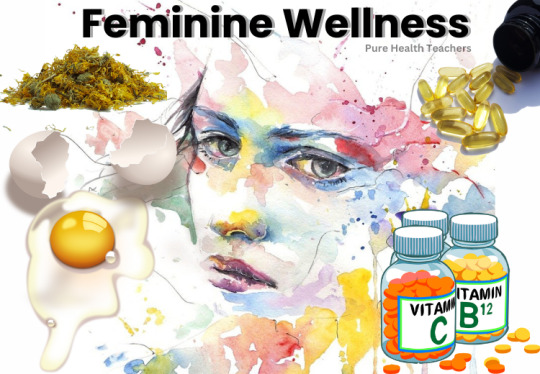
I. Introduction
Nutrition stands as the bedrock of women's health, an intricate dance between sustenance and vitality that shapes every stage of their lives. Far beyond a mere means of sustenance, proper nutrition is a potent force influencing hormonal balance, reproductive health, and disease prevention. The female body, undergoing a remarkable journey from puberty through various life stages like pregnancy, lactation, and menopause, demands a tailored and diverse set of nutrients. These nutrients act as the silent architects of a woman's resilience and health, addressing unique needs at every turn.
In this comprehensive guide, we embark on an exploration of the profound impact of nutrition on women's health. Our focus will be on an array of essential nutrients, each playing a pivotal role in sustaining and enhancing the well-being of women across diverse phases of life.
II. Mention of Various Essential Nutrients Crucial for Optimal Well-being
- Protein Powerhouses
Protein transcends its muscle-building stereotype to become the fundamental building block for cells, tissues, and organs. Our guide unravels the significance of diverse protein sources - Whey, Rice, Pea, Soya, and Milk Protein. Each offers a unique spectrum of amino acids, addressing varied bodily needs.
For instance, Whey protein, derived from milk, emerges as an ideal post-workout companion, ensuring swift muscle recovery due to its complete amino acid profile.
- Carbohydrates and Fats
Carbohydrates take center stage as the primary fuel for the body, while fats play a nuanced role in hormone production and the absorption of fat-soluble vitamins. A balanced approach to healthy fats and complex carbohydrates emerges as a cornerstone for sustained energy.
Consider the avocado, a treasure trove of monounsaturated fats - a delectable addition ensuring both satiety and nutritional richness.
- Essential Vitamins
Vitamins emerge as the catalysts orchestrating myriad biochemical reactions. The guide delves into the roles of Vitamin A for vision, Vitamin D2 for calcium absorption, Vitamin C for immune support, Vitamin E as a skin health ally, and the B-complex vitamins for energy metabolism and nervous system function.
Citrus fruits, like oranges and grapefruits, not only tantalize the taste buds but also fortify the body with Vitamin C and digestive-friendly fiber.
- Minerals for Women's Well-being
Iron steps onto the stage to combat anemia, calcium fortifies bones, magnesium supports muscles and nerves, while trace minerals - manganese, copper, selenium, and zinc - silently contribute to vital enzymatic processes.
Leafy greens, such as kale, emerge as a nutritional powerhouse, offering a calcium-rich option to fortify bone health.
This intricate tapestry of nutrients forms the foundation of our exploration, underscoring the nuanced importance of a diverse and balanced diet in championing the holistic health of women at every juncture of life.
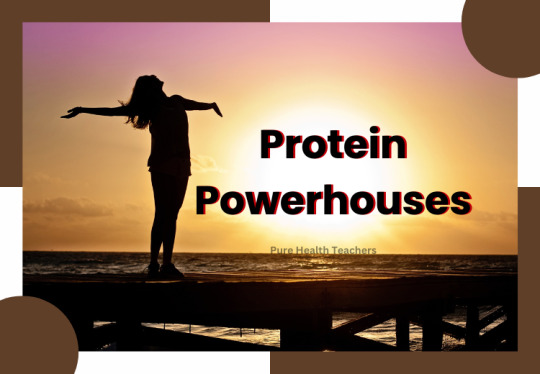
A. Protein Powerhouses
1. Whey Protein
Whey protein, a byproduct of cheese production, has become a staple in the fitness and nutrition world for good reason. It boasts a complete amino acid profile, containing all nine essential amino acids crucial for various bodily functions.
- Muscle Recovery: Whey protein is rapidly absorbed, making it an ideal post-workout supplement. Its quick digestion provides amino acids to muscles, aiding in repair and growth.
- Immunoglobulins and Antioxidants: Whey contains immunoglobulins and antioxidants that support the immune system, promoting overall health.
- Weight Management: Studies suggest that whey protein can aid in weight loss by promoting feelings of fullness and preserving lean muscle mass.
2. Rice Protein
Emerging as an excellent plant-based alternative, rice protein is hypoallergenic and easily digestible. It suits individuals with dietary restrictions and offers a unique nutrient profile.
- Digestibility: Rice protein is gentle on the stomach and easy to digest, making it suitable for those with sensitive digestive systems.
- Allergy-Friendly: It is a great option for individuals allergic to common protein sources like dairy or soy.
- Rich in BCAAs: Rice protein contains branched-chain amino acids (BCAAs), essential for muscle repair and growth.
3. Pea Protein
Extracted from yellow peas, pea protein has gained popularity, especially among those with dietary restrictions. It's a rich source of plant-based protein with notable benefits.
- Highly Digestible: Pea protein is easily digestible, and unlike some animal-based proteins, it doesn't cause bloating.
- Rich in Iron: An excellent source of iron, crucial for oxygen transport in the blood and preventing anemia.
- Satiety: Pea protein can promote a feeling of fullness, making it a valuable addition to weight management diets.
- Environmentally Friendly: Peas are nitrogen-fixing plants, contributing to soil health, making pea protein a more sustainable choice compared to some animal-based proteins.
Incorporating a variety of proteins, including whey, rice, and pea protein, into a diet can provide a diverse range of essential amino acids and cater to different dietary needs and preferences. These protein powerhouses play pivotal roles in muscle health, immune function, and overall well-being.
4. Soya Protein
Soya protein, derived from soybeans, is a versatile and nutritionally dense plant-based protein. Its popularity stems from its complete amino acid profile and various health benefits.
- Isoflavones and Hormonal Health: Soya contains isoflavones, plant compounds that mimic estrogen. Some studies suggest that these compounds may contribute to hormonal balance in women, potentially alleviating symptoms of menopause.
- Heart Health: Soya protein has been associated with heart health benefits, such as lowering LDL cholesterol levels. This cardiovascular advantage makes it a heart-friendly protein option.
- Muscle Building: Rich in essential amino acids, soya protein supports muscle maintenance and growth, making it an excellent choice for vegetarians and vegans.
5. Milk Protein
Milk protein encompasses two main types: whey and casein. Both offer unique benefits and are rich sources of essential amino acids.
- Whey Protein: As mentioned earlier, whey protein is quickly absorbed, making it an excellent post-workout choice. It's a complete protein, providing all essential amino acids, and supports muscle recovery and immune function.
- Casein Protein: This slow-digesting protein is often consumed before bedtime. It provides a steady release of amino acids throughout the night, promoting muscle protein synthesis during sleep.
- Calcium Content: Milk proteins are also rich in calcium, vital for bone health and preventing osteoporosis, particularly relevant for women, who are more prone to bone-related issues.
6. Importance of Adequate Protein Intake for Women's Health
Adequate protein intake is crucial for women of all ages due to its multifaceted impact on health.
- Muscle Health: Protein is essential for building and maintaining muscle mass, and it becomes increasingly important as women age to prevent muscle loss.
- Hormonal Balance: Proteins play a role in hormone production and regulation, influencing various aspects of women's health, including menstrual cycles and menopausal symptoms.
- Weight Management: Protein-rich diets can aid in weight management by promoting feelings of fullness and supporting fat loss while preserving lean muscle mass.
- Bone Health: Some proteins, like milk protein, contribute to calcium intake, crucial for maintaining strong and healthy bones, especially important for women who are at a higher risk of osteoporosis.
- Pregnancy and Lactation: During pregnancy and lactation, women's protein needs increase to support the growth and development of the fetus and the nutritional demands of breastfeeding.
In conclusion, understanding and meeting protein needs are vital for promoting overall health and addressing specific concerns related to women's well-being at different life stages. Incorporating a variety of protein sources, both plant and animal-based, ensures a comprehensive intake of essential amino acids and associated health benefits.
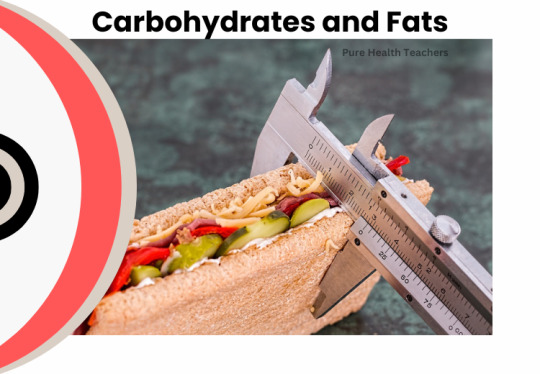
III. Carbohydrates and Fats for women's health
A. Carbohydrates: The Body's Primary Energy Source
Carbohydrates are the body's preferred and most efficient energy source, fueling vital functions and physical activities. It's essential to understand the types of carbohydrates for a balanced and sustainable energy supply.
- Complex vs. Simple Carbohydrates: Complex carbohydrates, found in whole grains, fruits, and vegetables, provide sustained energy due to their slow digestion and release of glucose. Simple carbohydrates, like those in candies and sugary beverages, offer a quick energy spike but lack the sustaining power of complex carbs.
- Dietary Fiber: Many carbohydrate-rich foods, particularly fruits, vegetables, and whole grains, are rich in dietary fiber. Fiber not only aids in digestion but also promotes feelings of fullness and helps regulate blood sugar levels.
- Energy Storage: Excess carbohydrates are stored as glycogen in the liver and muscles, ready to be converted back into energy when needed. This storage system is crucial for maintaining energy levels between meals and during physical activities.
B. Sugar: Moderation and Healthier Alternatives
While sugars are a natural component of many foods, excessive added sugar intake has been linked to various health issues. Moderation and choosing healthier alternatives can significantly impact overall well-being.
- Hidden Sugars: Processed foods often contain hidden sugars, contributing to excessive calorie intake without providing essential nutrients. Learning to identify and limit hidden sugars is crucial for a healthy diet.
- Natural Sugars vs. Added Sugars: Natural sugars, found in fruits and dairy, come with additional nutrients like fiber and vitamins. Added sugars, prevalent in many processed foods, contribute empty calories without nutritional benefits.
- Healthier Alternatives: Opting for healthier sugar alternatives, such as honey, maple syrup, or natural sweeteners like stevia, can satisfy the sweet tooth without the negative health effects associated with excessive sugar consumption.
- Impact on Health: High sugar intake is linked to obesity, type 2 diabetes, and cardiovascular diseases. By reducing added sugar intake, individuals can mitigate these health risks and support overall well-being.
- Mindful Consumption: Being mindful of sugar intake involves reading food labels, understanding different names for sugar (corn syrup, sucrose, fructose), and making informed choices to limit unnecessary sugar consumption.
By embracing complex carbohydrates, incorporating fiber-rich foods, and adopting mindful sugar consumption practices, individuals can optimize their energy levels, support digestive health, and reduce the risk of chronic health conditions associated with excessive sugar intake.
C. Healthy Fats vs. Saturated Fats
Understanding the distinction between healthy fats and saturated fats is crucial for maintaining cardiovascular health and overall well-being.
- Healthy Fats (Unsaturated Fats):
- Sources: Found in avocados, nuts, seeds, olive oil, and fatty fish like salmon.
- Benefits: These fats are heart-healthy and can help lower bad cholesterol levels (LDL cholesterol). They also provide essential fatty acids, such as omega-3 and omega-6, which are vital for brain function and inflammation control.
- Saturated Fats:
- Sources: Typically found in animal products like red meat, full-fat dairy, and tropical oils like coconut and palm oil.
- Concerns: High consumption of saturated fats is associated with elevated LDL cholesterol levels, which increases the risk of cardiovascular diseases. Limiting intake is recommended to maintain heart health.
- Trans Fats:
- Sources: Often found in processed and fried foods.
- Health Impact: Trans fats increase bad cholesterol levels while decreasing good cholesterol, leading to an increased risk of heart disease. Many health authorities advise minimizing trans fat consumption.
- Balance Approach: While limiting saturated and trans fats is advisable, incorporating a variety of healthy fats into the diet is crucial. For instance, replacing butter with olive oil or opting for fatty fish instead of red meat contributes to a heart-healthy balance.
D. Balancing Fat Intake for Hormonal Health
Dietary fats play a pivotal role in hormonal regulation, and maintaining a balanced fat intake is essential for overall hormonal health in women.
- Essential Fatty Acids: Omega-3 and omega-6 fatty acids are crucial for the production of hormones. Fatty fish, flaxseeds, chia seeds, and walnuts are rich sources of these essential fatty acids.
- Cholesterol and Hormone Synthesis: Cholesterol, often demonized, is a precursor for hormone synthesis, including estrogen and progesterone. Adequate intake of healthy fats supports the production of these vital hormones.
- Fat-Soluble Vitamins: Vitamins A, D, E, and K are fat-soluble and require dietary fat for absorption. These vitamins play roles in immune function, bone health, and antioxidant protection.
- Hormonal Imbalance Risks: Insufficient healthy fat intake can contribute to hormonal imbalances, potentially leading to irregular menstrual cycles, fertility issues, and mood swings.
- Moderation is Key: While fat is crucial for hormonal health, moderation is key. Balancing fat intake with other macronutrients and choosing healthy fat sources is essential to reap the benefits without excess calorie consumption.
By being mindful of the types of fats consumed and ensuring a balanced intake, individuals can support their hormonal health, optimize essential fatty acid levels, and reduce the risk of chronic health issues associated with an imbalance in fat consumption.
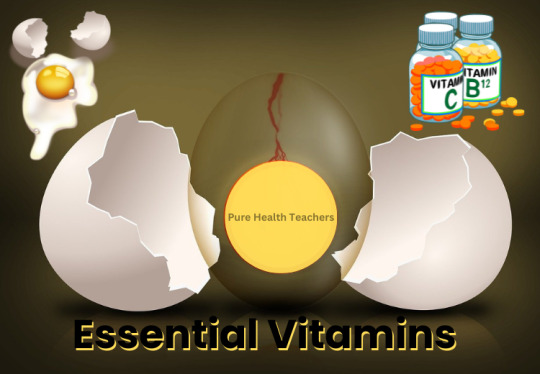
IV. Essential Vitamins
A. Vitamin A: Vision, Skin, and Immune Support
Vitamin A is a fat-soluble vitamin with multifaceted roles in maintaining health.
- Vision Support: Vitamin A is essential for the proper functioning of the retina, contributing to low-light and color vision. A deficiency can lead to night blindness and other vision impairments.
- Skin Health: It promotes skin integrity and regeneration, playing a crucial role in the maintenance of healthy skin. Vitamin A is often used in skincare products for its anti-aging properties.
- Immune Support: Vitamin A is vital for the proper functioning of the immune system. It helps in the production and functioning of white blood cells, contributing to the body's defense against infections.
- Sources: Vitamin A is found in foods like carrots, sweet potatoes, spinach, kale, and liver.
B. Vitamin D2: Bone Health and Immune Function
Vitamin D2, also known as ergocalciferol, is crucial for various physiological functions.
- Bone Health: Vitamin D plays a pivotal role in calcium absorption, essential for maintaining strong and healthy bones. Insufficient levels may result in issues such as the development of osteoporosis.
- Immune Function: Adequate vitamin D levels are associated with a reduced risk of infections and improved immune function. It modulates the immune response and helps the body defend against pathogens.
- Sunlight Synthesis: The body can produce vitamin D when exposed to sunlight. However, factors like location, season, and sunscreen use can affect this natural synthesis.
- Sources: Besides sunlight exposure, dietary sources include fortified foods like milk, orange juice, and certain types of fish.
C. Vitamin C: Collagen Formation and Immunity Boost
Vitamin C, also known as ascorbic acid, is a water-soluble vitamin with diverse roles in the body.
- Collagen Synthesis: Vitamin C is essential for the synthesis of collagen, a protein that provides structure to connective tissues, skin, and blood vessels. It contributes to skin elasticity and wound healing.
- Antioxidant Properties: As an antioxidant, vitamin C helps neutralize free radicals, protecting cells from oxidative stress and reducing the risk of chronic diseases.
- Immune System Support: Vitamin C supports the immune system by stimulating the production of white blood cells and aiding in their function. It is often recommended during cold and flu seasons.
- Sources: Citrus fruits (oranges, lemons), strawberries, bell peppers, and broccoli are rich sources of vitamin C.
Understanding the roles of these essential vitamins and incorporating a variety of vitamin-rich foods into the diet is crucial for overall health and well-being. Balanced nutrition ensures that the body receives the necessary nutrients for optimal functioning and disease prevention.
D. Vitamin E: Antioxidant Protection for Skin
Vitamin E, a fat-soluble antioxidant, is renowned for its protective role in maintaining skin health.
- Antioxidant Properties: Vitamin E serves as a powerful antioxidant, shielding the skin from oxidative stress caused by free radicals. This protection helps prevent premature aging and the formation of wrinkles.
- Skin Repair: Vitamin E aids in the repair of damaged skin cells and promotes skin elasticity. It is often used in skincare products to address scars, burns, and other skin imperfections.
- UV Radiation Defense: The antioxidant nature of vitamin E provides a level of defense against the harmful effects of ultraviolet (UV) radiation, helping to reduce the risk of sun damage.
- Sources: Foods rich in vitamin E include nuts (almonds, hazelnuts), seeds (sunflower seeds), spinach, and vegetable oils (sunflower oil, wheat germ oil).
E. Vitamin K: Blood Clotting and Bone Health
Vitamin K, a fat-soluble vitamin, plays essential roles in blood clotting and bone metabolism.
Read the full article
0 notes
Text
Unlock the 7 Secret to Luscious Locks: Vitamin Therapy’s Positive Impact on Hair Health
I. Introduction
A. Brief Overview of the Importance of Nutrition for Hair Health: In the pursuit of luscious locks and a vibrant mane, the significance of nutrition should not be underestimated. Hair, being a non-essential tissue, often receives nutrients last after other vital organs. This makes a well-balanced diet essential for ensuring that your locks receive the nourishment they need to shine and thrive. Nutritional deficiencies can lead to a myriad of hair issues, including dullness, breakage, and even hair loss.
The hair follicles, like any other part of the body, require a steady supply of nutrients to function optimally. Proteins, vitamins, and minerals play a pivotal role in maintaining the health of the scalp and promoting robust hair growth. As we explore the realms of hair health, it becomes evident that what we consume has a direct impact on the vitality of our locks.
B. Introduction to the Concept of Vitamin Therapy for Promoting Strong and Vibrant Hair: Amidst various hair care approaches, the concept of Vitamin Therapy emerges as a beacon of natural nourishment. Vitamin Therapy for hair is not merely a cosmetic fix but a holistic approach that targets the root of the issue — quite literally. Essential vitamins, each with its unique role, contribute to the strength, resilience, and overall health of your hair.
Embarking on the journey of Vitamin Therapy involves harnessing the distinctive capabilities of specific vitamins, celebrated for fortifying hair follicles, preventing oxidative stress, and cultivating an ideal environment for a scalp in optimal health. This proactive approach is not confined to external applications but encompasses a dietary strategy that ensures your body has the necessary building blocks for luxurious locks.
As we embark on this exploration of Vitamin Therapy for hair, envision a regimen that goes beyond superficial treatments, diving deep into the cellular level to invigorate your hair from within. The journey to strong, vibrant hair begins with understanding how vitamins act as catalysts for the natural beauty that lies in each strand.
II. Understanding Hair Nutrition
A. Explanation of How Vitamins Play a Crucial Role in Maintaining Healthy Hair: To comprehend the intricate dance between vitamins and healthy hair, it's imperative to envision the hair follicle as a dynamic ecosystem. Each strand of hair is a product of the nourishment it receives from the bloodstream, and vitamins serve as the architects of this intricate process.
Vitamins act as catalysts, orchestrating various biochemical reactions that contribute to the strength, texture, and growth of hair. Take vitamin A, for example, orchestrating the creation of sebum—an oily elixir that hydrates the scalp, leaving hair pliant. Then, the B-complex vitamins, with Biotin (B7) at the forefront, choreograph a vital dance in amino acid metabolism, the elemental building blocks for proteins essential to hair structure. Vitamin C steps in as the vigilant antioxidant, shielding hair follicles from oxidative stress. Simultaneously, vitamin E takes center stage by enhancing blood circulation to the scalp, establishing a fertile ground rich in nutrients for robust hair growth.
Think of vitamins as the backstage crew working tirelessly to ensure the spotlight shines on your hair's natural brilliance. From nourishing the roots to enhancing the overall texture, each vitamin plays a unique and indispensable role in maintaining healthy, resilient hair.
B. Exploration of Crucial Vitamins Vital for Hair Health, Encompassing A, B-Complex, C, D, and E:
- Vitamin A:
- Role: Promotes the production of sebum, preventing a dry scalp.
- Sourcing from: Carrots, sweet potatoes, spinach, and kale.
- B-Complex Vitamins:
- Biotin, also known as B7, facilitates the metabolism of amino acids, fostering the synthesis of proteins crucial for hair strength and structure.
- B5 (Pantothenic Acid): Enhances hair flexibility and strength.
- Origins: Eggs, nuts, whole grains, and verdant leafy greens.
- Vitamin C:
- Role: Acts as an antioxidant, protecting hair follicles from oxidative stress.
- Origins: Citrus fruits, strawberries, bell peppers, and broccoli.
- Vitamin D:
- Role: Supports hair follicle cycling and prevents hair shedding.
- Origins: Sunlight exposure, omega-3-rich fatty fish, and fortified dairy products.
- Vitamin E:
- Role: Improves blood circulation to the scalp, promoting nutrient delivery.
- Sources: Nuts, seeds, spinach, and broccoli.
Understanding the synergy of these vitamins provides a roadmap for crafting a diet that not only benefits your overall health but also nourishes your hair from root to tip. Incorporating a variety of vitamin-rich foods ensures a holistic approach to hair nutrition, laying the foundation for a vibrant and resilient mane.
III. Benefits of Vitamin Therapy for Hair
A. Highlighting the Specific Benefits of Each Key Vitamin for Hair Health:
- Vitamin A:
- Benefit: Promotes a Healthy Scalp.
- Explanation: Vitamin A aids in the production of sebum, the natural oil that keeps the scalp moisturized. A well-hydrated scalp translates to reduced dandruff and enhanced hair health.
- B-Complex Vitamins:
- Biotin (B7) Benefit: Supports Hair Protein Synthesis.
- Explanation: Biotin plays a crucial role in the metabolism of amino acids, the foundation of hair proteins. This translates to improved hair strength and reduced brittleness.
- B5 (Pantothenic Acid) Benefit: Enhances Hair Flexibility.
- Explanation: Pantothenic Acid contributes to hair flexibility, preventing breakage and promoting a lustrous, resilient texture.
- Vitamin C:
- Benefit: Protects Hair Follicles from Oxidative Stress.
- Explanation: Vitamin C's antioxidant properties shield hair follicles from oxidative damage, preserving their health and vitality.
- Vitamin D:
- Benefit: Supports Hair Follicle Cycling.
- Explanation: Adequate Vitamin D levels facilitate proper hair follicle cycling, reducing the risk of hair shedding and promoting continuous growth.
- Vitamin E:
- Benefit: Improves Scalp Circulation.
- Explanation: Vitamin E enhances blood circulation to the scalp, ensuring that essential nutrients reach hair follicles, fostering optimal growth and health.
B. Discussing How a Deficiency in These Vitamins Can Impact Hair Quality:
- Vitamin A Deficiency:
- Impact on Hair: Dry, Itchy Scalp; Increased Hair Brittleness.
- Explanation: Insufficient vitamin A can lead to decreased sebum production, resulting in a dry scalp and brittle hair prone to breakage.
- B-Complex Vitamins Deficiency:
- Biotin Deficiency Impact: Hair Thinning and Loss.
- Explanation: Biotin deficiency can contribute to hair thinning and loss, emphasizing the importance of this vitamin in maintaining hair density.
- B5 Deficiency Impact: Increased Hair Breakage.
- Explanation: A deficiency in Pantothenic Acid may result in decreased hair flexibility, leading to increased breakage and reduced overall hair quality.
- Vitamin C Deficiency:
- Impact on Hair: Weakened Hair Structure.
- Explanation: Without sufficient Vitamin C, the hair structure may weaken, making it more susceptible to damage and hindering healthy growth.
- Vitamin D Deficiency:
- Impact on Hair: Increased Hair Shedding.
- Explanation: Inadequate Vitamin D levels can disrupt the natural hair growth cycle, leading to increased shedding and a decrease in overall hair volume.
- Vitamin E Deficiency:
- Impact on Hair: Reduced Blood Circulation to the Scalp.
- Explanation: Insufficient Vitamin E may impair blood flow to the scalp, limiting the delivery of essential nutrients and affecting overall hair health.
Grasping the precise advantages and potential repercussions of vitamin deficiencies highlights the essential role of Vitamin Therapy in preserving the vibrancy and health of your hair. By addressing these nutritional needs, individuals can proactively support their hair from the inside out, promoting resilience and radiance.
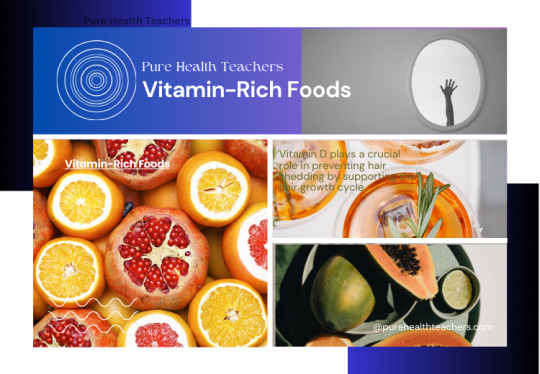
IV. Vitamin-Rich Foods for Healthy Hair
A. Detailed List of Foods Rich in Essential Vitamins for Hair:
- Vitamin A Sources:
- Food Options: Sweet potatoes, carrots, spinach, kale, butternut squash.
- Explanation: These vibrant, orange and green vegetables are rich in beta-carotene, a precursor to Vitamin A, crucial for a well-moisturized scalp.
- B-Complex Vitamins Sources:
- Biotin (B7) Sources: Eggs, almonds, avocados, salmon.
- Pantothenic Acid (B5) Sources: Mushrooms, whole grains, peanuts, sunflower seeds.
- Explanation: Including these foods ensures a balance of B-complex vitamins, essential for hair strength, flexibility, and protein synthesis.
- Vitamin C Sources:
- Food Options: Oranges, strawberries, bell peppers, broccoli.
- Explanation: Citrus fruits and colorful vegetables provide a burst of Vitamin C, supporting collagen production and protecting hair follicles from oxidative stress.
- Vitamin D Sources:
- Food Options: Fatty fish (salmon, mackerel), fortified dairy products, egg yolks.
- Explanation: Incorporating these sources ensures an adequate supply of Vitamin D, vital for regulating hair follicle cycling and minimizing hair shedding.
- Vitamin E Sources:
- Food Options: Nuts (almonds, sunflower seeds), spinach, broccoli, avocado.
- Explanation: These antioxidant-rich foods contribute to improved scalp circulation, enhancing the delivery of nutrients to hair follicles.
B. Suggestions for Incorporating These Foods into a Balanced Diet:
- Create Colorful Salads:
- Combine leafy greens (rich in Vitamin A and E) with bell peppers and strawberries (high in Vitamin C) for a nutrient-packed salad.
- Nutty Smoothie Bowls:
- Craft a delightful smoothie bowl by combining almonds for Biotin, spinach for Vitamin E, and berries for Vitamin C. This flavorful blend not only satisfies your taste buds but also provides a nourishing boost for your hair health. This wholesome combination not only tantalizes your taste buds but also supports the health of your hair.
- Salmon Dinner:
- Opt for grilling or baking salmon for a dinner abundant in Vitamin D, and complement it with a side of sautéed mushrooms (B5) to enhance the nutritional benefits.
- Vegetarian Protein Bowls:
- Incorporate vegetarian protein sources like lentils or quinoa along with vitamin-rich vegetables to create a balanced bowl.
- Snack on Avocado Toast:
- Indulge in the delightful combination of avocado on whole-grain toast for a snack rich in Biotin and Vitamin E, working together to promote healthy hair from the inside out.
- Egg Breakfasts:
- Incorporate eggs into your breakfast routine to harness the power of Biotin, crucial for preventing hair thinning and loss.
- Fortified Dairy Products:
- Opt for fortified dairy products like yogurt or milk to ensure a consistent intake of Vitamin D.
Through the integration of a diverse range of these nutrient-packed foods into daily meals, individuals can craft a comprehensive and well-balanced diet that not only fosters overall health but also enhances the vitality of their hair.

Buy Now $$
V. Supplements and Hair Nutriment Products
A. Insight into Vitamin Supplements for Those with Specific Dietary Restrictions:
- Vitamin B12 Supplements for Vegans:
- Insight: Individuals following a vegan diet may lack Vitamin B12 found predominantly in animal products. Incorporating a B12 supplement into your routine can help ensure that you meet your nutritional needs for maintaining healthy hair.
- Iron Supplements for Anemic Individuals:
- Insight: Iron deficiency, common in those with anemia, can lead to hair loss. Iron supplements provide a targeted solution for individuals struggling with low iron levels.
- Multivitamins for Comprehensive Support:
- Insight: Those with diverse dietary restrictions or limited access to specific foods may benefit from multivitamin supplements that provide a spectrum of essential vitamins for overall health, including hair.
- Omega-3 Fatty Acid Supplements:
- Insight: Individuals with dietary restrictions limiting fish consumption may consider omega-3 supplements. These support scalp health and contribute to shiny, well-nourished hair.
- Vitamin D Supplements for Limited Sun Exposure:
- Insight: People with limited sun exposure, such as those living in northern latitudes, may require Vitamin D supplements to maintain optimal levels for hair health.
B. Recommendations for Hair Nutriment Products Enriched with Essential Vitamins:
- Biotin-Enriched Shampoos and Conditioners:
- Recommendation: Look for hair care products containing biotin, known for strengthening hair. These products promote external nourishment for improved hair texture.
- Vitamin E-Infused Hair Oils:
- Recommendation: Incorporate vitamin E-enriched oils, like almond or argan oil, into your hair care routine. These oils nourish the scalp, enhance blood circulation, and contribute to overall hair health.
- Vitamin C-Infused Leave-In Conditioners:
- Recommendation: Choose leave-in conditioners containing Vitamin C to protect hair from environmental damage and oxidative stress while providing ongoing hydration.
- Collagen-Boosting Hair Masks:
- Recommendation: Collagen is vital for hair structure. Opt for hair masks enriched with collagen-boosting ingredients to improve elasticity and resilience.
- Vitamin-Enriched Dietary Supplements:
- Recommendation: Explore dietary supplements explicitly designed for hair health, often combining a range of vitamins, minerals, and herbs to support overall nourishment.
- Vitamin-Rich Nutritional Drinks:
- Recommendation: Nutritional drinks formulated with essential vitamins, minerals, and proteins offer a convenient way to supplement your diet for healthier hair.
- Vitamin-Infused Hair Serums:
- Recommendation: Incorporate vitamin-infused serums into your hair care routine. These targeted products can penetrate the hair shaft, providing intensive nourishment.
When choosing supplements or hair nutriment products, it's crucial to consult with a healthcare professional or dermatologist, especially if you have specific health conditions or concerns. Tailoring these products to individual needs ensures a holistic approach to hair care that complements dietary efforts for optimal results.

VI. Lifestyle Habits for Optimal Hair Health
A. Discussion on Lifestyle Factors Affecting Hair, such as Stress and Sleep:
- The Impact of Stress on Hair Health:
- Insight: Chronic stress triggers the release of hormones like cortisol, which can disrupt the hair growth cycle. Experiencing stress-related hair loss, also identified as telogen effluvium, may lead to an upsurge in hair shedding.
- The Role of Sleep in Hair Regeneration:
- Insight: During deep sleep, the body undergoes repair and regeneration, including the renewal of hair cells. Poor sleep quality or insufficient sleep duration may impede this regenerative process, affecting hair health.
- Nutrient Absorption and Lifestyle Choices:
- Insight: Lifestyle habits such as smoking and excessive alcohol consumption can hinder nutrient absorption, impacting the availability of essential vitamins and minerals crucial for healthy hair.
B. Tips for Incorporating Healthy Habits to Support Overall Hair Well-Being:
- Stress Management Techniques:
- Tip: Incorporate stress-reducing practices into your routine, such as meditation, yoga, or deep breathing exercises. These activities can help regulate cortisol levels and minimize stress-related hair issues.
- Prioritize Quality Sleep:
- Tip: Establish a consistent sleep schedule and create a conducive sleep environment. Aim for 7-9 hours of quality sleep each night to support optimal hair regeneration.
- Balanced Nutrition:
- Tip: Adopt a well-rounded diet that includes a variety of nutrient-dense foods. Prioritize fruits, vegetables, lean proteins, and whole grains to ensure a diverse range of vitamins and minerals essential for hair health.
- Stay Hydrated:
- Tip: Ensuring proper hydration is crucial for overall health, and it significantly contributes to the well-being of your hair. Ensure you consume an adequate amount of water daily to keep your scalp and hair hydrated.
- Regular Exercise:
- Tip: Engage in regular physical activity to promote good circulation, which contributes to a healthy scalp. Exercise also helps in stress reduction, positively impacting hair health.
- Scalp Care:
- Tip: Practice gentle scalp care by using mild shampoos and avoiding excessive heat styling. Incorporate regular scalp massages into your routine to stimulate blood flow, enhancing nutrient delivery to the hair follicles for optimal hair health.
- Limit Smoking and Alcohol Consumption:
- Tip: If applicable, consider reducing or quitting smoking, and moderate alcohol intake. These lifestyle changes can positively impact nutrient absorption and overall well-being.
- Protect Hair from Environmental Damage:
- Tip: Shield your hair from harsh environmental factors such as sun exposure, pollution, and extreme weather conditions. To minimize damage, consider wearing hats or using protective hair products as a proactive measure in your hair care routine.
- Regular Haircuts:
- Tip: Make it a habit to schedule regular haircuts to prevent split ends and encourage healthy hair growth.
Read the full article
0 notes
Text
Revitalize Your Skin: Unlocking the 7 Secrets of Skin Repair with Natural Magic
I. Introduction
A. Brief Overview of the Importance of Skin Health
The skin, our body's largest organ, serves as a protective barrier against external elements and plays a crucial role in maintaining overall well-being. Beyond its aesthetic significance, the health of our skin is paramount for several reasons:
- Protection: The skin acts as a shield, safeguarding the body from harmful pathogens, environmental pollutants, and ultraviolet (UV) radiation. It forms the first line of defense against infections and external stressors.
- Regulation: Skin regulates body temperature through processes like perspiration, ensuring that our internal systems operate within optimal conditions. This ability is vital for maintaining homeostasis.
- Sensation: Nerve endings in the skin enable us to perceive and respond to various stimuli, fostering our connection with the external environment. This sensory function enhances our ability to interact with the world around us.
- Synthesis of Vitamin D: Exposure to sunlight prompts the skin to produce vitamin D, an essential nutrient for bone health, immune function, and various physiological processes.
In recognizing the multifaceted role of the skin, prioritizing its health is not merely a cosmetic concern but a fundamental aspect of holistic well-being.
B. Introduction to Natural Remedies for Skin Repair
As we navigate a world filled with environmental stressors and pollutants, maintaining the health of our skin becomes increasingly challenging. While a plethora of skincare products flood the market, a growing interest in natural remedies stems from a desire to harness the power of nature in promoting skin repair.
- Holistic Approach: Natural remedies for skin repair embrace a holistic approach that addresses not only the symptoms but also the underlying causes of skin issues. This approach aims to restore balance and vitality to the skin.
- Minimizing Chemical Exposure: Unlike some commercial skincare products laden with synthetic ingredients, natural remedies often rely on botanical extracts, essential oils, and other organic components. This minimizes exposure to potentially harsh chemicals that may exacerbate skin conditions.
- Historical Wisdom: Many natural remedies have roots in traditional practices, passed down through generations. Drawing from the wisdom of ancient cultures, these remedies often integrate time-tested ingredients renowned for their skin-nourishing properties.
In the following sections, we will explore specific natural ingredients, do-it-yourself (DIY) remedies, and lifestyle habits that contribute to effective skin repair, emphasizing a return to simplicity and nature in our skincare routines.
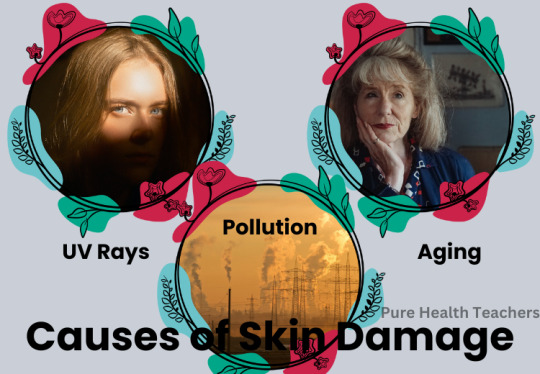
Skin Repair
II. Understanding Skin Damage
A. Causes of Skin Damage
- UV Rays:
- Fact: Prolonged exposure to ultraviolet (UV) rays from the sun is a leading cause of skin damage.
- Impact: UV rays penetrate the skin, triggering the production of free radicals that damage cellular structures. This damage can lead to premature aging, fine lines, and an increased risk of skin cancers.
- Example: Spending long hours outdoors without adequate sun protection can result in sunburn, a visible sign of immediate skin damage caused by UV radiation.
- Pollution:
- Fact: Environmental pollutants, including particulate matter and toxins, contribute to skin damage.
- Impact: Airborne pollutants can penetrate the skin, leading to oxidative stress. This process accelerates aging, causes inflammation, and may exacerbate skin conditions such as acne and eczema.
- Example: Individuals living in urban areas may experience heightened skin damage due to increased exposure to pollutants from vehicle emissions and industrial activities.
- Aging:
- Fact: Intrinsic aging, also known as chronological aging, is a natural process influenced by genetics. Extrinsic aging, caused by external factors, exacerbates the aging process.
- Impact: Over time, collagen and elastin production decreases, leading to sagging skin, wrinkles, and a loss of skin elasticity.
- Example: Fine lines around the eyes and mouth, often referred to as "crow's feet" and "laugh lines," are common signs of aging and collagen depletion.
B. Common Signs of Damaged Skin
- Sunspots (Solar Lentigines):
- Description: Darkened areas on the skin caused by prolonged exposure to UV rays.
- Significance: Sunspots indicate sun damage and an uneven distribution of melanin, often appearing on sun-exposed areas like the face and hands.
- Wrinkles and Fine Lines:
- Description: Creases and lines on the skin, especially in areas prone to repetitive movement or sun exposure.
- Significance: Wrinkles and fine lines are visible indicators of collagen and elastin loss, emphasizing the aging process and external influences.
- Redness and Inflammation:
- Description: Increased blood flow and skin irritation, often associated with conditions like sunburn or exposure to irritants.
- Significance: Persistent redness can be a sign of inflammation and skin damage, requiring attention to prevent long-term issues.
- Dryness and Flakiness:
- Description: Dehydrated skin lacking moisture, leading to roughness and flakiness.
- Significance: Dry skin is more susceptible to damage, and its appearance can worsen with age, environmental factors, and inadequate skincare.
Understanding the causes and recognizing signs of skin damage is crucial for implementing effective preventive measures and adopting reparative skincare practices. In the subsequent sections, we will explore natural remedies specifically designed to address these common issues and promote optimal skin health.
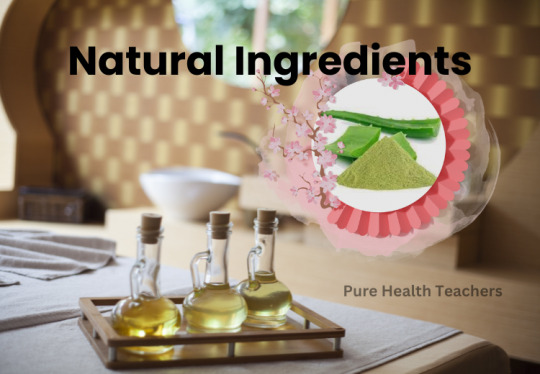
Skin Repair
III. Natural Ingredients for Skin Repair
A. Overview of Key Natural Ingredients
- Aloe Vera for Soothing and Healing:
- Description: Aloe vera is a succulent plant known for its gel-like substance found in its leaves.
- Benefits:
- Soothing Properties: Aloe vera possesses anti-inflammatory properties that can soothe irritated and damaged skin, providing relief from conditions like sunburn.
- Healing Abilities: The plant promotes the regeneration of skin cells, aiding in the repair of wounds, cuts, and minor burns.
- Example: Applying aloe vera gel to sunburned skin can provide instant cooling and alleviate redness, while regular use may contribute to the fading of scars and blemishes.
- Coconut Oil for Hydration:
- Description: Extracted from the meat of coconuts, coconut oil is a versatile natural moisturizer.
- Benefits:
- Deep Hydration: Coconut oil's fatty acids penetrate the skin, providing deep hydration and preventing moisture loss.
- Antioxidant Properties: It contains antioxidants that can help combat oxidative stress, contributing to overall skin health.
- Example: Applying coconut oil to dry skin can alleviate flakiness and restore a healthy, hydrated appearance. It can also be used as an effective natural makeup remover.
- Tea Tree Oil for its Antibacterial Properties:
- Description: Tea tree oil is derived from the leaves of the Melaleuca alternifolia tree.
- Benefits:
- Antibacterial and Antimicrobial: Tea tree oil has natural antibacterial properties, making it effective against acne-causing bacteria.
- Anti-inflammatory: It can reduce inflammation and redness associated with various skin conditions.
- Example: Diluted tea tree oil can be applied topically to blemishes or used in a facial cleanser to target acne-prone areas, promoting clearer skin.
- Honey for its Moisturizing and Antibacterial Benefits:
- Description: Honey, a natural sweetener, is also renowned for its skincare benefits.
- Benefits:
- Moisturizing: Honey is a humectant, attracting and retaining moisture, making it an excellent natural moisturizer.
- Antibacterial: Its antibacterial properties can help prevent and treat minor skin infections.
- Example: Creating a honey mask by mixing it with a small amount of plain yogurt can provide a hydrating and antibacterial treatment, leaving the skin feeling refreshed.
Incorporating these natural ingredients into skincare routines can provide a gentle and effective approach to promoting skin repair. Their diverse properties address various skin concerns, making them valuable components of a holistic and natural skincare regimen.

Skin Repair
IV. DIY Remedies for Skin Repair
A. Simple At-Home Remedies Using Natural Ingredients
- Aloe Vera Face Mask for Soothing Damaged Skin:
- Ingredients:
- Fresh Aloe Vera Gel
- Optional: a few drops of Jojoba Oil or Rosehip Oil
- Instructions:
- Harvest the pure gel from the leaves of the aloe vera plant.
- Optional: Add a few drops of nourishing oils like jojoba or rosehip for added benefits.
- Apply the mixture evenly to cleansed skin, avoiding the eye area.
- Allow the mask to sit for a duration of 15 to 20 minutes.
- Rinse off with lukewarm water and pat the skin dry.
- Benefits:
- Soothing and Cooling: Aloe vera's anti-inflammatory properties help calm irritated skin, making it ideal for sunburn or sensitive skin.
- Hydration: The gel moisturizes the skin, promoting healing and reducing redness.
- Coconut Oil and Honey Blend for Moisturizing:
- Ingredients:
- Organic Coconut Oil
- Raw Honey
- Instructions:
- Mix equal parts coconut oil and honey in a bowl until well combined.
- Apply the mixture to clean, dry skin, focusing on areas prone to dryness.
- Leave it on for 20-30 minutes.
- Gently rinse away the mask with warm water and delicately pat the skin dry.
- Benefits:
- Deep Hydration: Coconut oil provides lasting moisture, while honey's humectant properties lock in hydration.
- Antibacterial: Both ingredients offer antibacterial benefits, aiding in the prevention of infections.
- Tea Tree Oil Spot Treatment for Blemishes:
- Ingredients:
- 1-2 drops Tea Tree Oil
- Utilize a carrier oil, such as Jojoba Oil or Grapeseed Oil.
- Instructions:
- Dilute 1-2 drops of tea tree oil in a carrier oil to avoid irritation.
- Using a cotton swab, apply the mixture directly to blemishes.
- Leave it on overnight or for a few hours.
- Rinse off and moisturize as usual.
- Benefits:
- Antibacterial and Anti-inflammatory: Tea tree oil helps combat acne-causing bacteria and reduces inflammation.
- Spot Treatment: This targeted approach is effective for treating individual blemishes.
These DIY remedies offer a natural and cost-effective approach to skin repair, utilizing the inherent properties of aloe vera, coconut oil, honey, and tea tree oil. Incorporating these treatments into a weekly skincare routine can contribute to healthier, revitalized skin.

Skin Repair
V. Lifestyle Habits for Healthy Skin
A. Importance of a Balanced Diet for Skin Health
- Nutrient-Rich Foods:
- Consuming a balanced diet rich in vitamins, minerals, and antioxidants is crucial for maintaining healthy skin. Nutrients like vitamin C, E, and A, along with omega-3 fatty acids, contribute to skin repair and protection.
- Examples:
- Citrus Fruits: High in vitamin C, which promotes collagen production for skin elasticity.
- Nuts and Seeds: Provide omega-3 fatty acids for skin hydration and flexibility.
- Leafy Greens: Rich in antioxidants that combat free radicals, preventing premature aging.
- Hydration from Within:
- Staying well-hydrated supports skin health by maintaining adequate moisture levels. Water helps flush out toxins and promotes a plump, radiant complexion.
- Examples:
- Water: The easiest and most efficient method to maintain hydration is by aiming for a minimum of eight glasses per day.
- Hydrating Foods: Fruits like watermelon and cucumber have high water content and contribute to hydration.
B. Hydration and its Impact on Skin Repair
- Preventing Dryness:
- Proper hydration is essential for preventing dry and flaky skin. Dehydrated skin is more prone to damage and may exacerbate the appearance of fine lines and wrinkles.
- Examples:
- Humidifiers: Using a humidifier in dry environments helps maintain optimal skin moisture levels.
- Hydrating Skincare: Choosing moisturizers with hydrating ingredients like hyaluronic acid helps lock in moisture.
- Collagen Support:
- Hydration is fundamental for collagen production, a protein crucial for maintaining skin elasticity and firmness.
- Examples:
- Collagen-Rich Foods: Bone broth, fish, and collagen supplements can support the body's natural collagen production.
C. Stress Management for Preventing Skin Damage
- Impact of Stress on the Skin:
- Chronic stress can contribute to various skin issues, including acne, eczema, and premature aging. Stress triggers the release of cortisol, a hormone that may disrupt the skin's natural balance.
- Examples:
- Mindfulness Practices: Engaging in activities like meditation, yoga, or deep breathing exercises helps reduce stress levels.
- Adequate Sleep: Quality sleep is crucial for skin repair and regeneration, promoting a healthy complexion.
- Balancing Hormones:
- Stress can influence hormonal imbalances, leading to skin problems. Managing stress helps maintain hormonal equilibrium, benefiting the skin.
- Examples:
- Regular Exercise: Physical activity can reduce stress hormones and promote overall well-being.
- Time Management: Efficiently managing time and setting realistic goals can minimize stress.
Incorporating a balanced diet, maintaining proper hydration, and managing stress are integral aspects of a holistic approach to skincare. These lifestyle habits, when combined with natural remedies and effective skincare practices, contribute to the overall health and vitality of the skin.
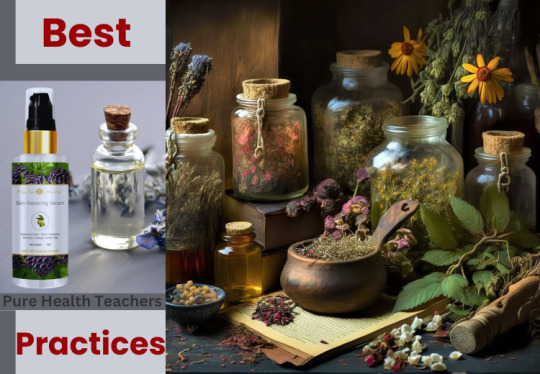
Skin Repair
VI. Best Practices for Natural Skin Care
A. Choosing Natural and Organic Skincare Products
- Understanding Ingredient Lists:
- When selecting skincare products, examine ingredient lists to ensure they contain natural and organic components. Look for botanical extracts, essential oils, and plant-based ingredients with proven skincare benefits.
- Avoiding Harmful Additives:
- Opt for products free from harsh chemicals such as parabens, sulfates, and synthetic fragrances. These additives can potentially irritate the skin and contribute to long-term damage.
- Certifications and Labels:
- Look for certifications from reputable organizations, such as USDA Organic or Ecocert, which indicate that the product meets specific standards for natural and organic ingredients.
- Example: A skincare product labeled as "Certified Organic" ensures that it meets strict criteria for organic content and sustainable practices.
B. Importance of Patch Testing New Products
- Minimizing Allergic Reactions:
- Patch testing is crucial when introducing new skincare products to minimize the risk of allergic reactions or sensitivities. Apply a small amount of the product to a discreet area, like the inner wrist, and monitor for any adverse reactions over 24-48 hours.
- Sensitivity Considerations:
- Individuals with sensitive skin or pre-existing skin conditions should be particularly diligent in patch testing. This practice helps identify potential triggers and allows for adjustments in the skincare routine accordingly.
- Example: Patch testing a new natural face serum helps ensure that it doesn't cause redness or irritation, especially for those with sensitive skin.
C. Creating a Personalized Skincare Routine
- Understanding Skin Type:
- Tailor your skincare routine to your specific skin type, whether it's oily, dry, combination, or sensitive. Different skin types have unique needs, and using products designed for your skin type enhances their effectiveness.
- Morning and Evening Regimens:
- Establish both morning and evening skincare routines. Daytime products may include antioxidants and sun protection, while nighttime routines can focus on repair and rejuvenation.
- Consistency is Key:
- Consistency in skincare routines is crucial for optimal results. Regularly using natural products ensures that the skin receives continuous benefits over time.
- Example: For a personalized routine, someone with dry skin might incorporate a hydrating cleanser, a moisturizing serum, and a nourishing night cream, while someone with oily skin may focus on balancing and mattifying products.
- Regular Assessments:
- Periodically assess your skincare routine and make adjustments based on seasonal changes, age, or changes in skin condition. Our skin's needs evolve, and adapting the routine accordingly ensures continued effectiveness.
These best practices for natural skincare form a foundation for maintaining healthy and radiant skin. By being mindful of ingredient choices, conducting patch tests, and creating a personalized routine, individuals can promote skin wellness in a holistic and sustainable manner.
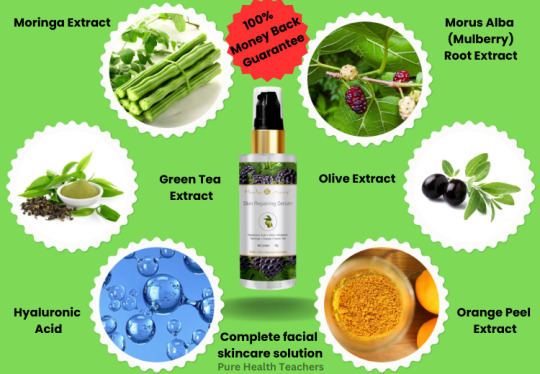
Order
Read the full article
0 notes
Text
Oily Skin's 7 Beauty Secrets: Uncover the Power Within
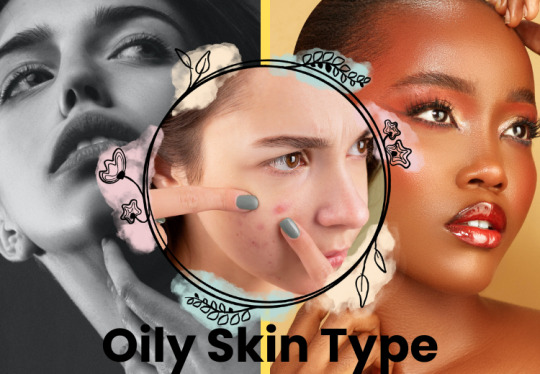
I. Introduction
A. Definition of Oily Skin: Oily skin is a common skin type characterized by an overproduction of sebum, the skin's natural oil. Sebum is produced by the sebaceous glands, which are essential for maintaining skin health by keeping it moisturized. However, when sebum production becomes excessive, it can lead to oily skin, resulting in a shiny or greasy appearance.
B. Prevalence and Causes: Oily skin is a prevalent skin type and can affect people of all ages and backgrounds. The primary cause of oily skin is genetics, as it is often inherited from one's parents. Hormonal fluctuations, such as those that occur during puberty, pregnancy, or menopause, can also trigger an increase in sebum production. Additionally, environmental factors, such as hot and humid weather, can exacerbate oily skin.
Oily skin is often associated with certain skin conditions, such as acne, as the excess sebum can clog pores and lead to the formation of blackheads and whiteheads. Moreover, the use of harsh skincare products or overwashing the face can strip the skin of its natural oils, leading to a compensatory increase in sebum production.
C. Importance of Oily Skin Care: Proper care for oily skin is crucial for maintaining healthy and radiant skin. While oily skin has its challenges, it also has some advantages, such as a reduced likelihood of developing fine lines and wrinkles at an early age. Nevertheless, without proper care, oily skin can lead to issues like acne, enlarged pores, and an uneven complexion.
Oily skin care aims to strike a balance by controlling excess oil production while keeping the skin hydrated and nourished. This can be achieved through a skincare routine that includes gentle cleansing, exfoliation to remove dead skin cells, and the use of non-comedogenic moisturizers. It's also essential to protect oily skin from the sun, as sun exposure can stimulate sebum production.
Natural remedies like aloe vera, witch hazel, and tea tree oil can be beneficial for managing oily skin, as they have astringent and antimicrobial properties. A healthy diet, rich in fruits and vegetables, can also contribute to better skin health.
In summary, understanding the definition, prevalence, causes, and the importance of proper care for oily skin is essential for individuals with this skin type. With the right skincare regimen and lifestyle choices, one can effectively manage oily skin and enjoy a healthy, radiant complexion.

II. Understanding Oily Skin
A. Characteristics of Oily Skin Oily skin is characterized by several distinct features:
- Excess Sebum Production: Oily skin produces an abundance of sebum, the skin's natural oil. This excess oil gives the skin a shiny or greasy appearance, particularly in the T-zone (forehead, nose, and chin).
- Enlarged Pores: Oily skin often has visibly larger pores due to the accumulation of sebum and dead skin cells within them. This can result in the development of blackheads and whiteheads.
- Acne Prone: Skin with excess oil is at a higher risk of experiencing acne breakouts. The excess sebum can mix with dead skin cells and create an environment where acne-causing bacteria thrive.
- Matte Appearance: Despite the shininess, oily skin can look matte or flat in appearance due to the excess oil layer.
- Makeup Challenges: Makeup may not adhere well to oily skin, often requiring frequent touch-ups. Foundation and powders may "slide" on the skin.
B. Factors Contributing to Excess Oil Production Several factors contribute to the overproduction of sebum in oily skin:
- Genetics: Oily skin often has a genetic component. If your parents possess oily skin, there's a higher likelihood that you will inherit this skin type as well.
- Hormones: Hormonal changes can significantly impact oil production. During puberty, hormonal fluctuations can trigger increased sebum production. Hormonal imbalances in conditions like polycystic ovarian syndrome (PCOS) can also lead to oilier skin.
- Humidity and Weather: Hot and humid weather can stimulate sebaceous glands to produce more oil. The excess moisture in the air can exacerbate the shiny appearance of the skin.
- Overwashing or Harsh Cleansers: Paradoxically, using harsh cleansers or overwashing the face can strip the skin of its natural oils. In reaction to this, the sebaceous glands might increase oil production to make up for it.
- Diet: While the relationship between diet and oily skin is complex, some studies suggest that a diet high in processed foods and sugar may contribute to excess sebum production.
C. Identifying Your Skin Type Identifying your skin type is crucial for tailoring your skincare routine effectively. To determine if you have oily skin, consider these methods:
- The Blotting Paper Test: Gently blot a piece of blotting paper or a clean tissue on different areas of your face, especially the forehead, nose, and chin (T-zone). If you notice oil on the paper, you likely have oily skin.
- Visual Examination: Look in the mirror. Oily skin typically appears shiny, particularly in the T-zone. You may also notice enlarged pores and a propensity for acne.
- Consult a Dermatologist: For a more precise assessment, consider consulting a dermatologist who can evaluate your skin type and offer personalized advice.
Understanding the characteristics and factors contributing to excess oil production in oily skin is the first step in developing an effective skincare regimen. By recognizing your skin type and its unique needs, you can choose the right products and practices to maintain healthy and balanced skin.

III. Oily Skin Care Routine
A. Cleansing
- Choosing the Right Cleanser Selecting the appropriate cleanser for oily skin is crucial. Look for a gentle, foaming, or gel-based cleanser with the following characteristics:
- Salicylic Acid or Glycolic Acid: These ingredients help exfoliate the skin, preventing the buildup of dead skin cells that can clog pores and contribute to acne.
- Non-Comedogenic: Ensure that the cleanser is labeled as non-comedogenic, meaning it won't clog your pores.
- Oil-Free: Opt for an oil-free formula to avoid adding more oil to your skin.
- Sulfate-Free: Sulfates can be harsh on the skin and strip away too much natural oil, which may trigger an overproduction of sebum.
- Proper Cleansing Techniques When cleansing oily skin, follow these techniques:
- Use Lukewarm Water: Steer clear of hot water, as it has the potential to deplete the skin's natural oils. Lukewarm water is gentler and helps to open up the pores.
- Gentle Massage: Apply the cleanser with gentle, circular motions. Avoid aggressive scrubbing, which can irritate the skin and stimulate more oil production.
- Rinse Thoroughly: Ensure you rinse off the cleanser completely to avoid residue buildup.
B. Toning
- Benefits of Toning for Oily Skin Toning is a crucial step in an oily skin care routine for several reasons:
- Balancing pH: Toners help restore the skin's pH balance, which can be disrupted by cleansing. Maintaining an optimal pH level is vital for the well-being of your skin.
- Shrinking Pores: Some toners contain astringent ingredients that can temporarily shrink the appearance of pores, making the skin look smoother.
- Removing Residue: Toners can remove any remaining impurities or cleanser residue, ensuring that the skin is clean.
- Preventing Acne: Some toners contain acne-fighting ingredients like salicylic acid, which can help prevent breakouts.
- Natural Toning Options If you prefer natural or DIY skincare, consider these natural toning options:
- Witch Hazel: Witch hazel is a natural astringent that can help balance oil production and tighten pores.
- Rose Water: Rose water is gentle on the skin and has anti-inflammatory properties. It can help soothe and refresh oily skin.
- Green Tea: Green tea has antioxidants and can be used as a toner. It may help reduce inflammation and protect against environmental damage.
- Apple Cider Vinegar: Diluted apple cider vinegar can act as a natural toner, but it should be used with caution due to its acidity. It can help balance the skin's pH and has antibacterial properties.
C. Moisturizing
- Lightweight Moisturizers for Oily Skin Oily skin still requires hydration, but it's important to choose lightweight, non-comedogenic moisturizers that won't clog your pores. Look for the following characteristics in a moisturizer:
- Oil-Free: Opt for an oil-free or water-based moisturizer to avoid adding excess oil to your skin.
- Hydrating Ingredients: Ingredients like hyaluronic acid, glycerin, and niacinamide provide hydration without making your skin greasy.
- Matte Finish: Some moisturizers are formulated to leave a matte finish on the skin, helping to control shine.
- Non-Comedogenic: Ensure that the moisturizer is labeled as non-comedogenic to prevent pore blockage.
- Importance of Hydration Hydrating oily skin is essential for maintaining skin health. Even though your skin produces excess sebum, it can still lack water, leading to dehydration. Here's why hydration is crucial:
- Preventing Excess Oil Production: When your skin is dehydrated, it can respond by producing even more oil to compensate. Proper hydration helps keep sebum production in check.
- Skin Barrier Function: Adequate hydration supports the skin's natural barrier, which protects it from external factors like pollution and bacteria.
- Preventing Premature Aging: Well-hydrated skin is less likely to show signs of premature aging, such as fine lines and wrinkles.
- Even Skin Tone: Hydration can contribute to a more even skin tone and a radiant complexion.
D. Sun Protection
- Sunscreen for Oily Skin Sunscreen is a crucial step in any skincare routine, but it's especially important for oily skin. Look for a sunscreen with the following attributes:
- Broad-Spectrum: Choose a broad-spectrum sunscreen that protects against both UVA and UVB rays.
- Oil-Free: Opt for an oil-free or mattifying sunscreen to avoid making your skin greasier.
- Non-Comedogenic: Ensure the sunscreen is labeled as non-comedogenic to prevent pore clogging.
- SPF 30 or Higher: Aim for an SPF of 30 or higher for effective sun protection.
- Protecting Against UV Damage Protecting your skin from the sun is vital for several reasons, even if you have oily skin:
- Skin Cancer Prevention: UV exposure is a major risk factor for skin cancer, making sunscreen essential for your overall health.
- Preventing Premature Aging: Sun damage can lead to premature aging, including wrinkles, age spots, and sagging skin.
- Controlling Oil Production: Sunburn and skin damage can lead to increased oil production. Sunscreen helps prevent this.
- Maintaining Even Skin Tone: Sunscreen can help prevent the development of dark spots and uneven skin tone.
Incorporating lightweight, non-comedogenic moisturizers and using sunscreen daily can help maintain balanced and healthy skin, even if you have oily skin. These steps are essential for oil control, hydration, and protection against the harmful effects of UV radiation.
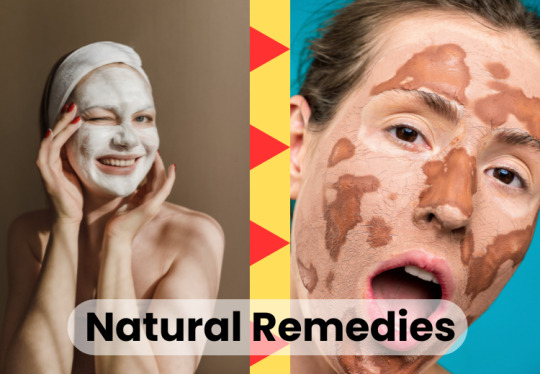
IV. Natural Remedies for Oily Skin
A. Clay Masks
- Benefits of Clay Masks Clay masks can be highly effective for oily skin due to their ability to absorb excess oil and impurities. Here are some key benefits:
- Oil Absorption: Clay, especially varieties like kaolin, bentonite, and French green clay, have natural oil-absorbing properties. They can help reduce the shine and mattify the skin.
- Deep Cleansing: Clay masks penetrate the pores, drawing out dirt, sebum, and toxins that may contribute to acne and breakouts. This deep cleansing action can lead to clearer skin.
- Exfoliation: Clay masks can also act as mild exfoliants, helping to remove dead skin cells and promote a smoother, more even complexion.
- Tightening Pores: The temporary tightening effect of clay masks can make pores appear smaller and less noticeable.
- How to Use Them To use a clay mask effectively for oily skin:
- Start with a clean, dry face.
- Apply a thin, even layer of the clay mask.
- Let it dry for the recommended time (usually 10-15 minutes) or until it feels tight but not uncomfortable.
- Rinse it off with lukewarm water.
- Use a clay mask once or twice a week to avoid over-drying the skin.
B. Aloe Vera Gel
- Soothing and Healing Properties Aloe vera is a natural ingredient known for its soothing and healing properties. It can be particularly beneficial for oily skin due to the following:
- Oil Regulation: Aloe vera helps balance sebum production by hydrating the skin without making it greasy. This can reduce excess oiliness over time.
- Anti-Inflammatory: It has anti-inflammatory properties that can soothe irritated or red skin, making it useful for those with acne or blemishes.
- Healing and Scarring: Aloe vera can promote the healing of acne scars and blemishes, helping to fade them over time.
- Non-Comedogenic: Aloe vera is non-comedogenic, meaning it won't clog pores, making it safe for oily skin.
- Application and Benefits To use aloe vera gel for oily skin:
- Apply a thin layer of pure aloe vera gel to your cleansed and toned face.
- Allow it to absorb into your skin, or you can rinse it off after 15-20 minutes.
- You can use aloe vera gel as a moisturizer or a spot treatment for blemishes.
Aloe vera gel is a gentle and natural remedy that can complement your oily skin care routine. It provides hydration and helps soothe and balance the skin, making it a valuable addition to your skincare arsenal.
C. Tea Tree Oil
- Antiseptic Properties Tea tree oil is renowned for its antiseptic and antimicrobial properties, making it an excellent choice for oily skin. Here are some key benefits:
- Acne Treatment: Tea tree oil is effective in combating acne. It can help kill acne-causing bacteria and reduce inflammation, leading to clearer skin.
- Pore Cleansing: It can penetrate the pores and unclog them, preventing the formation of blackheads and whiteheads.
- Balancing Sebum: Tea tree oil helps balance sebum production, preventing excessive oiliness while maintaining skin hydration.
- Wound Healing: It can aid in the healing of acne scars and blemishes, promoting a more even complexion.
- Safe Usage for Oily Skin When using tea tree oil for oily skin:
- Dilution: Tea tree oil is potent and should be diluted with a carrier oil (such as jojoba or coconut oil) before applying it to your skin to avoid irritation. A common ratio is 1-2 drops of tea tree oil in 1 tablespoon of carrier oil.
- Spot Treatment: Apply diluted tea tree oil as a spot treatment on blemishes or acne-prone areas. Avoid applying it all over your face, as it may cause dryness.
- Patch Test: Perform a patch test to ensure you don't have any adverse reactions to tea tree oil before using it regularly.
D. Lemon and Honey
- Natural Astringents and Antioxidants Lemon and honey are natural ingredients with astringent and antioxidant properties that benefit oily skin in the following ways:
- Astringent Action: Lemon juice acts as a natural astringent, helping to tighten and minimize the appearance of pores.
- Antioxidants: Both lemon and honey are rich in antioxidants, which protect the skin from free radical damage and can promote a more youthful complexion.
- Exfoliation: Lemon juice contains citric acid, a gentle exfoliant that can help remove dead skin cells and brighten the skin.
- Antibacterial Properties: Honey possesses inherent antibacterial qualities, making it advantageous for skin that is susceptible to acne.
- DIY Masks and Treatments You can create DIY masks and treatments using lemon and honey for oily skin:
- Lemon and Honey Mask: Combine lemon juice and honey in equal proportions and gently spread the mixture onto your face. Allow it to sit for 15-20 minutes, then rinse with lukewarm water. Use this mask once a week to brighten and refresh your skin.
- Honey Spot Treatment: Apply a small amount of honey directly to blemishes and let it sit for about 10-15 minutes before rinsing. Honey has the potential to diminish inflammation and facilitate the process of healing.
- Lemon Juice Toner: Dilute lemon juice with water and use it as a toner. Apply it to your skin using a cotton pad to help tighten pores and control oil.
Lemon and honey are readily available natural remedies that can be used to enhance your oily skin care routine. Just remember to do a patch test, especially with lemon juice, as it can be too harsh for some individuals, and always follow with sunscreen when using lemon, as it can increase skin sensitivity to the sun.

V. Diet and Lifestyle Tips
A. Foods to Include A well-balanced diet can significantly impact the health and appearance of your skin, including oily skin. Below are some dietary choices to consider:
- Fruits and Vegetables: Incorporate a variety of colorful fruits and vegetables, such as berries, leafy greens, and carrots. They are rich in antioxidants that help protect your skin from free radical damage.
- Omega-3 Fatty Acids: Foods like salmon, walnuts, and flaxseeds contain omega-3 fatty acids, which have anti-inflammatory properties and can help maintain skin health.
- Whole Grains: Opt for whole grains like brown rice, quinoa, and whole wheat bread. They have a lower glycemic index, which may help control oil production and prevent acne.
- Lean Proteins: Choose lean sources of protein like chicken, turkey, and legumes. Protein plays a critical role in the repair of skin and the production of collagen.
- Water: Proper hydration is key for healthy skin. Consume a sufficient daily intake of water to naturally maintain your skin's hydration.
B.
Read the full article
0 notes
Text
Unlocking the 7 Secrets to Optimal Dental Health with Naturals
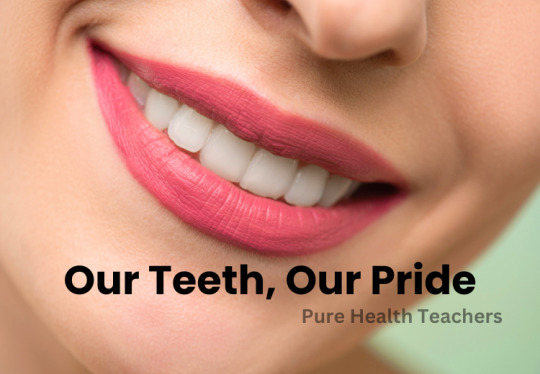
I. Introduction
A. Importance of Dental Health
Oral wellness means Dental Health is a vital component of one's general health that is frequently disregarded. It's not just about having a dazzling smile, but also about maintaining a healthy body. Here's why dental health is so important:
- Oral Health Reflects Overall Health: Your mouth is a gateway to your body. Many systemic diseases, such as diabetes and heart disease, are linked to poor oral health. Inflammation in the gums, for instance, can increase the risk of heart disease.
- Preventive Dental Care: Regular dental checkups and cleanings can help detect issues early, preventing costly and painful treatments down the road. It's not just about treating cavities; it's about preventing them in the first place.
- Boosted Confidence: A healthy, bright smile boosts self-confidence and self-esteem. It has the potential to bring about beneficial effects in both your personal and career endeavors.
- Pain Prevention: Dental problems like cavities and gum disease can cause excruciating pain. Good dental health helps prevent this pain and discomfort.
- Nutrition and Digestion: Proper chewing, which relies on healthy teeth, is essential for good digestion. Poor dental health can lead to difficulties in eating, impacting your nutrition.
B. The Role of Natural Remedies
Natural remedies for dental care have gained popularity due to their holistic approach and reduced side effects. Here are some reasons why natural remedies play a significant role:
- Reduced Chemical Exposure: Conventional dental products often contain chemicals that some individuals are sensitive to. Natural remedies use ingredients like herbal extracts, baking soda, and essential oils, which are generally gentler on your mouth.
- Anti-Microbial Properties: Natural ingredients like tea tree oil and neem have known antimicrobial properties. They can help combat harmful bacteria in the mouth, reducing the risk of infections.
- Inflammation Control: Natural remedies such as aloe vera and turmeric can help control inflammation in the gums. Inflammation is a key contributor to gum disease.
- Accessible and Affordable: Many natural remedies can be found in your kitchen or garden. This makes them an affordable option for those looking to enhance their oral health without breaking the bank.
- Holistic Approach: Natural remedies embrace a holistic approach to dental care, focusing on the overall well-being of an individual rather than just treating symptoms. They often promote a healthier lifestyle and dietary choices.
- Personalization: Natural remedies can be personalized to suit your specific needs. For example, you can create a custom herbal toothpaste that caters to your oral health goals.
By understanding the importance of dental health and the role natural remedies play, you'll be better equipped to make informed decisions about your oral care. In the following sections, we'll explore the basics of dental care, common dental issues, natural remedies, and more to help you maintain a healthy and radiant smile naturally.
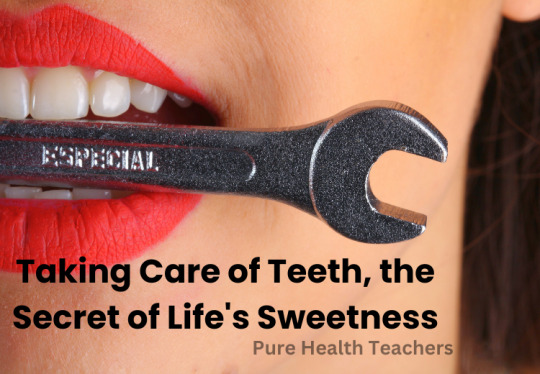
II. The Basics of Dental Care
A. Daily Oral Hygiene Routine
Maintaining a daily oral hygiene routine is fundamental to dental health. This routine helps prevent dental issues and ensures a confident smile. Here's how to establish and maintain an effective daily oral hygiene routine:
- Brushing: Use a soft-bristle toothbrush and fluoride toothpaste to brush your teeth twice a day, morning and night. Ensure you brush for a minimum of two minutes, being thorough in covering all the surfaces of your teeth. Proper brushing removes food particles, plaque, and prevents tooth decay.
- Flossing: Daily flossing is crucial to remove food particles and plaque from between your teeth and along the gumline. Neglecting to floss can lead to gum disease and cavities in those hard-to-reach areas.
- Mouthwash: Consider using an antimicrobial or fluoride mouthwash to rinse your mouth after brushing and flossing. This can help kill bacteria, freshen your breath, and strengthen tooth enamel.
- Tongue Cleaning: Don't forget to clean your tongue gently. The accumulation of bacteria on the tongue's surface can result in unpleasant breath and potential oral health concerns
- Choose the Right Tools: Select oral care products that are suitable for your specific needs. For example, if you have sensitive teeth, opt for a toothpaste designed for sensitive teeth.
- Replace Toothbrush: Change your toothbrush or toothbrush head every three to four months or sooner if the bristles are frayed. Using a toothbrush that has seen better days is not as efficient in maintaining cleanliness.
B. Importance of Regular Dental Checkups
Regular dental checkups are essential for maintaining oral health, even if you have a diligent daily oral hygiene routine. Here's why these checkups matter:
- Early Problem Detection: Dentists can identify dental issues in their early stages during checkups. Catching problems like cavities and gum disease early can prevent them from becoming more severe and costly to treat.
- Professional Cleaning: Dental hygienists can provide a thorough cleaning that removes plaque and tartar buildup, which is difficult to remove with regular brushing and flossing.
- X-Rays for Hidden Issues: X-rays during checkups can reveal hidden problems, such as impacted wisdom teeth or infections below the gumline.
- Customized Advice: Dentists can offer personalized advice on oral care practices, including recommending products or techniques based on your specific needs.
- Preventive Care: Checkups are an opportunity to discuss preventive measures like dental sealants, fluoride treatments, and oral cancer screenings.
- Support for Nervous Patients: If you're anxious about dental visits, many dentists offer options like sedation dentistry to make the experience more comfortable.
- Maintain Dental Records: Regular checkups help maintain a comprehensive dental history, which can be crucial in case of emergencies or for tracking changes in your oral health over time.
Incorporating a daily oral hygiene routine and scheduling regular dental checkups are the cornerstones of maintaining good dental health. These practices, when followed consistently, help ensure a healthy, beautiful smile and reduce the risk of dental problems.
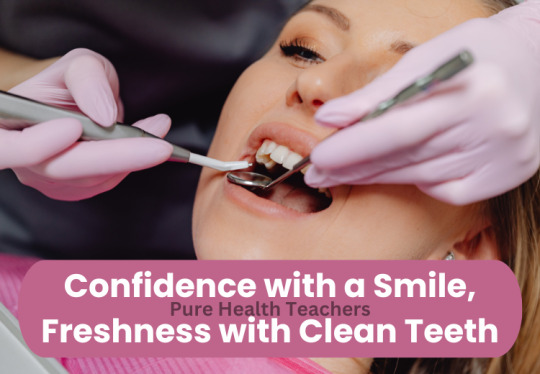
III. Common Dental Issues
A. Tooth Decay
- Causes:
Tooth decay, also known as dental caries, is a prevalent dental problem with various causes:
- Bacteria: Bacteria in the mouth, especially Streptococcus mutans, feed on sugars and starches, producing acids that erode tooth enamel.
- Poor Oral Hygiene: Neglecting proper brushing and flossing allows plaque to build up on teeth, providing a breeding ground for decay-causing bacteria.
- Diet: High-sugar and high-carbohydrate diets contribute to tooth decay. Frequent snacking on sugary or acidic foods can lead to acid attacks on the teeth.
- Dry Mouth: Reduced saliva flow due to medications, medical conditions, or mouth breathing can increase the risk of decay.
- Inheritance: Tooth decay might be influenced by genetic predisposition in certain people.
- Prevention and Home Care:
Preventing tooth decay is crucial for maintaining dental health:
- Oral Hygiene: Regular brushing and flossing help remove plaque and bacteria from teeth. Fluoride toothpaste strengthens tooth enamel.
- Balanced Diet: Limit sugary and acidic foods and beverages. Consume a diet rich in calcium, fiber, and vitamins for strong teeth.
- Fluoride Treatment: Consider fluoride treatments or toothpaste to strengthen tooth enamel.
- Dental Sealants: Dentists can apply sealants to protect molars and premolars from decay.
- Regular Checkups: Dental professionals can identify early signs of decay and provide timely treatment.
B. Gum Disease
- Types and Stages:
Gum disease, or periodontal disease, comes in various forms, and it progresses through stages:
- Gingivitis: The earliest stage of gum disease is characterized by inflamed, red, and bleeding gums. Gingivitis is often reversible with improved oral hygiene.
- Advancement to Periodontitis: Without intervention, gingivitis has the potential to develop into periodontitis. This stage involves the breakdown of the bone and fibers supporting the teeth, leading to pockets and potential tooth loss.
- Advanced Periodontitis: In severe cases, advanced periodontitis results in significant bone loss, loose teeth, and a risk of systemic health issues.
- Natural Remedies for Gum Health:
Natural remedies can complement traditional treatment for gum disease:
- Oil Pulling: Swishing coconut or sesame oil in the mouth can reduce harmful bacteria and inflammation.
- Aloe Vera Benefits: Aloe vera gel has the potential to alleviate gum inflammation and aid in the healing process.
- Tea Tree Oil: Diluted tea tree oil can be applied to gums as an antimicrobial agent.
- Vitamin C: Foods rich in vitamin C, like citrus fruits and leafy greens, can support gum health.
- Probiotics: Consuming probiotic-rich foods can help balance oral microbiota.
C. Bad Breath
- Causes:
Bad breath, or halitosis, can result from various factors:
- Poor Oral Hygiene: Leftover food particles and bacteria in the mouth can lead to odor.
- Diet: Foods like garlic, onions, and strong spices can cause temporary bad breath.
- Dry Mouth: Insufficient saliva can result in bad breath because saliva helps cleanse the mouth.
- Medical Conditions: Conditions like sinus infections, diabetes, and acid reflux can contribute to chronic bad breath.
- Natural Remedies for Fresh Breath:
Natural remedies can help combat bad breath:
- Hydration: Drinking plenty of water helps maintain adequate saliva flow to wash away odor-causing bacteria.
- Chewing Gum: Sugar-free gum stimulates saliva production and freshens breath.
- Herbs and Spices: Chewing on fresh herbs like parsley or cloves can mask bad breath.
- Baking Soda Rinse: Gargling with a solution of baking soda and water can neutralize odors.
- Probiotics: Probiotic-rich foods promote a healthy oral microbiome, reducing bad breath.
Understanding the causes of tooth decay, gum disease, and bad breath, along with effective prevention and natural remedies, empowers individuals to take control of their dental health and maintain fresh, healthy smiles.

IV. Natural Remedies for Dental Health
A. Oil Pulling
Oil pulling is an ancient Ayurvedic practice that involves swishing a tablespoon of oil (typically coconut, sesame, or sunflower oil) in your mouth for 15-20 minutes before spitting it out. This practice is believed to provide various oral health benefits:
- Plaque Reduction: Oil pulling can help reduce the buildup of plaque on teeth, which is a precursor to gum disease and tooth decay.
- Oral Microbiome Balance: It can help balance the oral microbiome by reducing harmful bacteria while promoting beneficial ones.
- Fresher Breath: Oil pulling is known to freshen breath and reduce bad odors in the mouth.
- Gum Health: Some individuals report that oil pulling can help soothe gum inflammation and bleeding.
B. Turmeric for Oral Health
Turmeric, with its active compound curcumin, has anti-inflammatory and antimicrobial properties, making it a valuable natural remedy for oral health:
- Anti-Inflammatory: Turmeric can help reduce inflammation in the gums and alleviate the discomfort associated with gum disease.
- Antibacterial: It may help combat harmful oral bacteria, reducing the risk of cavities and gum infections.
- Natural Whitening: Turmeric is used in some teeth-whitening remedies due to its ability to remove surface stains on teeth.
C. Saltwater Rinses
Saltwater rinses are a simple yet effective natural remedy for various oral issues:
- Sore Throat Relief: Gargling with warm saltwater can soothe a sore throat and provide temporary relief.
- Oral Wound Healing: Saltwater rinses can help heal mouth sores, canker sores, and minor gum injuries.
- Gum Infection Control: Saltwater rinses can reduce inflammation and kill some harmful bacteria, aiding in gum disease management.
- Post-Surgical Care: Dentists often recommend saltwater rinses after oral surgeries to promote healing and reduce infection risk.
D. Herbal Toothpaste and Mouthwash

100% Money Back Guarantee, Order Now
Herbal toothpaste and mouthwash are becoming popular for their natural ingredients and various benefits:
- Herbal Ingredients: These products often contain herbs like neem, clove, and eucalyptus, known for their antibacterial and anti-inflammatory properties.
- No Harsh Chemicals: Herbal oral care products are free from harsh chemicals like sodium lauryl sulfate and artificial flavors.
- Breath Freshening: Many herbal toothpaste and mouthwash options naturally freshen breath with their aromatic herbs.
- Gentle on Sensitive Teeth: They can be a suitable choice for individuals with sensitive teeth who want a milder option.
E. Aloe Vera for Gum Care
Aloe vera is not only great for soothing sunburns but can also benefit gum health:
- Anti-Inflammatory: Aloe vera gel can reduce gum inflammation and provide relief for those with gum disease or gingivitis.
- Wound Healing: It promotes the healing of mouth sores, ulcers, and other minor gum injuries.
- Natural Antiseptic: Aloe vera has natural antiseptic properties that can help control harmful oral bacteria.
- Easy Application: You can apply aloe vera gel directly to the affected area or find aloe vera-based oral care products.
Natural remedies like oil pulling, turmeric, saltwater rinses, herbal toothpaste and mouthwash, and aloe vera offer holistic and effective ways to maintain oral health, often with fewer side effects compared to some conventional products.

V. Diet and Dental Health
A. Foods that Promote Dental Health
The foods you consume play a significant role in maintaining good dental health. Discover the following foods that contribute to oral well-being:
- Crunchy Vegetables: Foods like carrots, celery, and bell peppers are rich in fiber and require more chewing. This natural abrasive action helps clean teeth and stimulate saliva production, which aids in neutralizing acids and preventing tooth decay.
- Dairy Products: Dairy products like milk, cheese, and yogurt are rich in calcium and phosphorus, essential minerals for strong teeth. Additionally, they assist in maintaining a harmonious pH level within the oral cavity.
- Leafy Greens: Spinach, kale, and other leafy greens are high in vitamins and minerals, including calcium. They promote gum health and overall oral well-being.
- Lean Proteins: Foods like lean meats, poultry, and fish are rich in phosphorus, which, when combined with calcium, is crucial for maintaining strong teeth.
- Nuts and Seeds: Almonds, cashews, and seeds like sesame and pumpkin seeds provide a natural source of essential minerals and healthy fats for dental health.
- Sugar-Free Gum: Chewing sugar-free gum stimulates saliva production, which helps cleanse the mouth and neutralize acids. It's especially helpful after meals when brushing is not possible.
B. Foods to Avoid for Good Dental Health
Equally important to what you consume is what you should avoid to maintain good dental health. Consider reducing or completely excluding the following foods from your diet:
- Sugary Foods and Beverages: Sugary foods and drinks, such as candy, soda, and fruit juices, feed harmful bacteria in the mouth, leading to acid production and tooth decay.
- Sticky and Chewy Snacks: Foods like caramel, gummies, and dried fruits can adhere to teeth, making it more challenging for saliva to wash away particles and acids.
- Acidic Foods: Highly acidic foods and beverages like citrus fruits, vinegar, and soft drinks can erode tooth enamel, making teeth more susceptible to decay.
- Hard Candies: Hard candies are not only high in sugar but can also cause dental emergencies if bitten or chewed too hard.
- Alcohol and Tobacco: Excessive alcohol consumption and tobacco use increase the risk of gum disease, oral cancer, and staining of teeth.
- Ice Chewing: Chewing on ice may seem harmless, but it can lead to tooth fractures and damage if done regularly.
Maintaining a diet that includes tooth-friendly foods while limiting or avoiding those that contribute to dental issues is a key component of excellent dental health. A well-balanced diet not only promotes strong teeth and gums but also contributes to overall well-being.

VI. Lifestyle Habits
A. Smoking and Dental Health
Smoking has a profound negative impact on dental health and is linked to various oral issues:
- Staining: Smoking can cause yellowing and staining of teeth, leading to an unattractive smile.
- Bad Breath: Tobacco use is a major cause of chronic bad breath, or halitosis.
- Gum Disease: Smoking weakens the immune system, making it harder for the body to fight off gum infections, leading to periodontal disease.
- Oral Cancer: Smoking is a leading cause of oral and throat cancers, with a high mortality rate if not detected and treated early.
Read the full article
0 notes
Text
What Is The Super 10 Healthiest Food We Can Eat?

I. Introduction
In today's fast-paced world, where convenience often takes precedence over nutrition (healthiest foods), it's crucial to pause and consider the impact of our food choices on our well-being. Healthy eating is not just a trend; it's a lifestyle choice that can significantly improve our quality of life. At the heart of healthy eating lies the concept of nutrient density – a principle that guides us towards selecting healthiest foods that provide the most nutrients for the least amount of calories.
Why Nutrient-Dense (Healthiest Foods) Matter
Nutrient-dense foods (Healthiest Food) are the superheroes of your plate. They are packed with vitamins, minerals, antioxidants, and other essential nutrients that your body craves to function at its best. These healthiest foods are like nature's medicine cabinet, offering a multitude of health benefits with each bite.
Think of it this way: when you choose nutrient-dense foods (Healthiest Food), you're not just satisfying your hunger; you're nourishing your body on a cellular level. You're giving your body the raw materials it needs to repair and regenerate, to bolster your immune system, and to ward off chronic diseases.
The Focus of Our Journey
In this article, we embark on a journey to uncover the top 10 healthiest foods that deserve a prominent place in your diet. These healthiest foods have earned their spot on this list not just because they taste good (although many of them do), but because they are nutritional powerhouses. They represent a diverse array of food groups, each offering a unique set of benefits.
As we delve into each of these healthiest foods, you'll learn about their individual superpowers – the nutrients and health advantages that make them stand out. From vibrant fruits and vegetables that dazzle with their color and vitality to humble legumes that punch above their weight in nutritional value, our exploration will leave you inspired to make healthier choices.
So, whether you're already on a journey towards a healthier you or just starting to consider the importance of your food choices, join us as we discover the top 10 healthiest foods that can transform your eating habits and, in turn, transform your life. Your body will thank you, one delicious bite at a time.
II. The Power of Nutrient-Dense Foods
Understanding Nutrient Density
Nutrient density is a fundamental concept in nutrition that focuses on the quality of the calories we consume, rather than just the quantity. It's the measurement of how many essential nutrients a food provides compared to the number of calories it contains. In simpler terms, nutrient-dense foods (Healthiest Food) give you more bang for your buck when it comes to nutrition.
To put it into perspective, consider this analogy: Imagine you have two plates of food, one filled with a large serving of broccoli and another with a piece of cake. The broccoli is nutrient-dense because it's rich in vitamins, minerals (such as vitamin C, vitamin K, and folate), fiber, and antioxidants while being relatively low in calories. On the other hand, the cake, though delicious, is calorie-dense but offers little in the way of essential nutrients.
Why Nutrient Density Matters
Understanding nutrient density is crucial for several reasons:
- Optimal Nutrition: Nutrient-dense foods (Healthiest Food) provide your body with a wide range of essential nutrients, such as vitamins (A, C, D, E, and K), minerals (calcium, magnesium, and iron), and phytonutrients. These nutrients are vital for various bodily functions, from supporting your immune system to maintaining healthy bones and skin.
- Weight Management: Nutrient-dense foods (Healthiest Food) can help you manage your weight because they provide satiety while being lower in calories. This can prevent overeating and support a healthy body weight.
- Disease Prevention: Consuming nutrient-dense foods (Healthiest Food) is associated with a reduced risk of chronic diseases like heart disease, diabetes, and certain cancers. For example, fiber-rich vegetables can help lower the risk of heart disease, and healthiest foods high in antioxidants can combat oxidative stress and inflammation.
- Energy and Vitality: Nutrient-dense foods (Healthiest Food) provide sustained energy throughout the day. Unlike empty-calorie foods that lead to energy spikes and crashes, nutrient-dense choices offer lasting vitality.
Examples of Nutrient-Dense Foods (Healthiest Food)
Let's take a closer look at some prime examples of nutrient-dense foods(Healthiest Food):
- Kale: This leafy green is a nutritional powerhouse, boasting vitamins A, C, K, and calcium. It's also rich in antioxidants like quercetin and kaempferol.
- Salmon: Fatty fish like salmon provide omega-3 fatty acids, which are essential for brain health and reducing inflammation.
- Sweet Potatoes: These are packed with beta-carotene, a precursor to vitamin A, along with fiber and various vitamins and minerals.
- Berries: Blueberries, strawberries, and raspberries are loaded with antioxidants and vitamin C while being low in calories.
- Quinoa: A whole grain that's not only high in protein but also contains all nine essential amino acids.
By incorporating nutrient-dense foods (Healthiest Food) like these into your diet, you can maximize your health and well-being while savoring the flavors of nature's nutritional treasures.
III. Top 10 Best Healthiest Food sources

- Leafy foods
The Force of Beautiful Assortment
With regards to wellbeing, the dynamic tints of leafy healthiest foods are not only to look good. The wide cluster of varieties connotes a different scope of supplements and cell reinforcements that can help your body in various ways. Consuming a beautiful assortment of leafy healthiest foods resembles giving your body a dietary orchestra, with each variety contributing its extraordinary notes to the general congruity of wellbeing.
Explicit Products of the soil Dietary benefit
- Berries (Blueberries, Strawberries, Raspberries): These diamonds are wealthy in cell reinforcements, especially anthocyanins, which assist with combatting oxidative pressure and irritation. They are likewise a decent wellspring of L-ascorbic acid and fiber.
- Spinach: This verdant green is stacked with iron, calcium, and vitamin K. It's likewise an incredible wellspring of folate, a B-nutrient significant for cell division.
- Carrots: Carrots are well known for their high beta-carotene content, which your body changes over into vitamin A. They are likewise a wellspring of fiber and potassium.
- Citrus Natural products (Oranges, Grapefruits, Lemons): These organic products are overflowing with L-ascorbic acid, which is significant for a sound safe framework. They likewise give fiber and different phytonutrients.
- Tomatoes: Wealthy in lycopene, tomatoes are related with decreasing the gamble of specific diseases. They additionally contain L-ascorbic acid and potassium.
Explicit Vegetables and Their Dietary benefit
- Broccoli: This cruciferous vegetable is a L-ascorbic acid force to be reckoned with and gives fiber, folate, and vitamin K. It's likewise known for its potential disease battling properties.
- Bell Peppers: These brilliant veggies are high in L-ascorbic acid and furthermore contain vitamin An and different cell reinforcements. Red chime peppers, specifically, are known for their lycopene content.
- Kale: Kale is a verdant green hotshot, loaded with nutrients A, C, and K, as well as calcium and cell reinforcements like lutein and zeaxanthin, which are fundamental for eye wellbeing.
- Avocado: While in fact a natural product, avocados are an exceptional wellspring of solid fats, fundamentally monounsaturated fats. They likewise give fiber, potassium, and a scope of nutrients.
- Sweet Potatoes: Wealthy in beta-carotene, yams are a magnificent wellspring of vitamin A. They likewise offer fiber, L-ascorbic acid, and manganese.
Integrating various these leafy healthiest foods into your eating routine not just adds an explosion of flavor and variety to your feasts yet in addition guarantees you're profiting from a great many fundamental nutrients, minerals, and cell reinforcements. These food sources add to better wellbeing, upgraded resistance, and a lower hazard of ongoing sicknesses.
- Entire Grains
The Significance of Entire Grains
Entire grains are a fundamental part of a solid eating routine, and their importance lies in the way that they are not so much handled but rather more nutritious contrasted with refined grains. Not at all like refined grains, which have had their wheat and microbe eliminated during handling, entire grains contain the whole grain portion - the grain, microorganism, and endosperm. This implies they hold every one of the supplements, fiber, and cell reinforcements normally present in the grain.
The advantages of entire grains go past sustenance. They are related with:
- Fiber-Rich Nourishment: Entire grains are phenomenal wellsprings of dietary fiber, which advances stomach related wellbeing, assists control with blooding sugar levels, and supports weight the executives. The fiber in entire grains likewise helps with keeping a sensation of totality, forestalling gorging.
- Vitamins and Minerals: Entire grains are loaded with fundamental supplements like B-nutrients (thiamin, niacin, and folate), magnesium, and iron. These supplements are essential for energy creation, cerebrum wellbeing, and in general prosperity.
- Antioxidants: Entire grains contain cell reinforcements like selenium and different phytochemicals. These mixtures assist with combatting oxidative pressure, decreasing the gamble of constant sicknesses like coronary illness and certain malignant growths.
- Steady Energy: The mind boggling starches in entire grains give a consistent and supported arrival of energy, going with them an optimal decision for keeping up with energy levels over the course of the day.
Different Entire Grain Choices and Their Advantages
- Oats: Oats are a rich wellspring of dissolvable fiber, known for their heart-sound properties. They can assist with bringing down cholesterol levels and are a decent wellspring of manganese, phosphorus, and magnesium.
- Quinoa: Quinoa is a finished protein, meaning it contains every one of the nine fundamental amino acids. It's additionally sans gluten and loaded with fiber, nutrients, and minerals.
- Brown Rice: Earthy colored rice is less handled than white rice and contains more fiber, nutrients (like B-nutrients and vitamin E), and minerals (like magnesium and phosphorus).
- Whole Wheat: Entire wheat items, including entire wheat bread and pasta, are high in fiber and give supplements like folate and iron.
- Barley: Grain is a fiber-rich entire grain that can assist with bringing down cholesterol levels. It's likewise a decent wellspring of selenium and cell reinforcements.
- Buckwheat: In spite of its name, buckwheat isn't a wheat yet a sans gluten entire grain. It's a wellspring of protein, fiber, and supplements like magnesium and manganese.
- Millet: Millet is a sans gluten grain plentiful in B-nutrients, magnesium, and cell reinforcements. It's known for its heart-defensive characteristics.
Integrating various these entire grains into your eating routine can give a wide range of supplements and medical advantages. Whether you appreciate them as a component of your morning cereal, in a generous plate of mixed greens, or as a side dish, entire grains add to a balanced and supporting eating regimen.

- Lean Proteins
The Meaning of Lean Protein Sources
Proteins are the structure blocks of life, fundamental for the development, fix, and upkeep of tissues in our body. While protein is significant, not all wellsprings of protein are made equivalent. Lean protein sources, instead of greasy or handled ones, offer an abundance of medical advantages while assisting you with keeping a solid weight and lessen the gamble of persistent sicknesses.
The meaning of lean protein sources lies in their capacity to give fundamental amino acids, the mixtures your body needs for different physiological cycles. Here's the reason lean proteins are fundamental:
- Muscle Wellbeing: Slender proteins support muscle development and upkeep. Sufficient protein admission is especially significant for people who take part in customary active work or strength preparing.
- Satiety and Weight The board: Protein-rich food varieties help you feel full and fulfilled, decreasing the probability of indulging or eating on undesirable choices between feasts. This can support weight the executives and weight reduction.
- Metabolism Lift: The thermic impact of food (TEF) is higher for protein than for starches or fats, meaning your body consumes more calories during assimilation and ingestion. This can emphatically affect digestion.
- Blood Sugar Control: Protein can assist with settling glucose levels by easing back the assimilation of carbs. This is especially significant for people with diabetes or those in danger of fostering the condition.
- Heart Wellbeing: Lean protein sources, like fish, poultry, and plant-based proteins, are related with a diminished gamble of coronary illness since they are low in immersed fat contrasted with red meat.
Instances of Lean Protein Sources
- Poultry (Chicken and Turkey): Skinless, boneless poultry cuts like chicken bosom and turkey bosom are brilliant wellsprings of lean protein. They are low in soaked fat and adaptable for different dishes.
- Fish (Salmon, Fish, and Mackerel): Greasy fish like salmon, fish, and mackerel give lean protein and are wealthy in heart-sound omega-3 unsaturated fats, which backing cerebrum and cardiovascular wellbeing.
- Tofu: Tofu, a plant-based protein produced using soybeans, isn't just a phenomenal wellspring of protein yet additionally flexible for both flavorful and sweet dishes. It's likewise low in immersed fat.
- Legumes (Beans, Lentils, and Chickpeas): Beans, lentils, and chickpeas are high in protein, fiber, and different supplements. They are ideal choices for veggie lovers and vegetarians and add to heart wellbeing.
- Lean Cuts of Meat (Lean Hamburger, Pork, and Buffalo): While red meat ought to be eaten with some restraint, lean cuts like sirloin or tenderloin contain less fat and are great wellsprings of protein.
- Greek Yogurt: Greek yogurt is higher in protein contrasted with ordinary yogurt and gives probiotics to destroy wellbeing. Pick plain, unsweetened assortments for the best healthful advantages.
Integrating these lean protein sources into your eating regimen can assist you with meeting your protein needs while supporting by and large wellbeing. Make sure to offset protein consumption with other fundamental supplements for a balanced and supporting eating regimen.

- Solid Fats
The Job of Solid Fats in the Eating regimen
In opposition to the misguided judgment that all fats are terrible for you, solid fats are an essential part of a decent eating regimen. Sound fats serve different fundamental jobs in the body, and remembering them for your eating regimen can emphatically affect your general wellbeing. These fats are known for their capacity to give energy, support cell development, safeguard organs, and assist your body with engrossing specific nutrients.
The job of solid fats in the eating routine can be summed up as follows:
- Energy Source: Fats are a concentrated wellspring of energy, giving over two times as numerous calories per gram contrasted with starches and proteins. They act as a save wellspring of energy, which your body takes advantage of when required.
- Cell Capability: Solid fats are essential to the construction of cell layers. They guarantee cells stay adaptable and useful, permitting them to convey really and carry out their different roles in the body.
- Absorption of Fat-Solvent Nutrients: Certain nutrients, like nutrients A, D, E, and K, are fat-solvent, meaning they require fat for legitimate retention. Solid fats assist your body with taking in these fundamental supplements.
- Brain Wellbeing: Your mind is made basically out of fat, and it depends on a consistent inventory of sound fats to ideally work. Omega-3 unsaturated fats, specifically, are related with worked on mental capability.
- Heart Wellbeing: Certain sound fats, as monounsaturated fats and omega-3 unsaturated fats, can bring down the gamble of coronary illness by decreasing aggravation, further developing cholesterol levels, and supporting by and large cardiovascular wellbeing.
Wellsprings of Solid Fats
- Avocados: Avocados are wealthy in monounsaturated fats, especially oleic corrosive, which is heart-solid. They additionally give fiber, potassium, and different nutrients.
- Nuts (Almonds, Pecans, and Walnuts): Nuts are loaded with sound fats, principally monounsaturated and polyunsaturated fats. They are likewise a decent wellspring of protein, fiber, and cell reinforcements.
- Olive Oil: Additional virgin olive oil is a staple in Mediterranean cooking and is prestigious for its monounsaturated fat substance. It's a flexible oil utilized in cooking and salad dressings.
- Fatty Fish (Salmon, Sardines, and Mackerel): Greasy fish are a wellspring of lean protein as well as wealthy in heart-sound omega-3 unsaturated fats, which have calming properties.
- Flaxseeds and Chia Seeds: These seeds are incredible wellsprings of alpha-linolenic corrosive, a sort of omega-3 unsaturated fat. They can be added to smoothies, cereal, or utilized as an egg substitute in recipes.
- Coconut Oil: While discussed, coconut oil contains a sort of immersed fat called medium-chain fatty oils (MCTs), which might have some medical advantages. It very well may be utilized in cooking and baking.
- Dark Chocolate: Dark chocolate with a high cocoa content is a source of healthy fats, particularly stearic acid, which doesn't raise cholesterol levels. It's also rich in antioxidants.
Incorporating these sources of healthy fats into your diet can enhance your overall nutrition and contribute to better health.
Read the full article
0 notes
Text
Vitamins Empowerment: Fueling Your Success Story 365
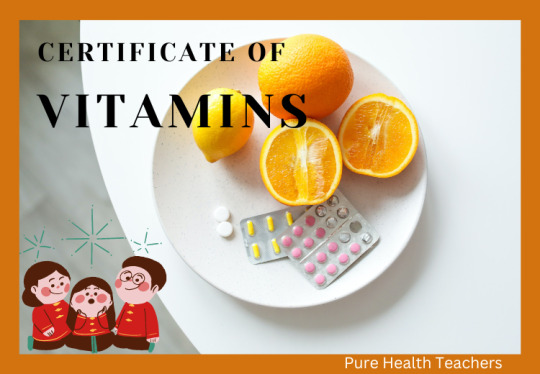
Introduction
- Vitamins: Unveiling the Cornerstones of Holistic Wellbeing
In the intricate tapestry of human health, vitamins emerge as not just components, but essential keystones that uphold the architecture of our overall wellbeing. These remarkable micronutrients, although required in mere traces, hold a profound influence over the symphony of bodily functions and processes, orchestrating a harmonious balance within us. From sustaining our energy levels to bolstering our immune defenses, vitamins are the unsung heroes that contribute to the vitality of our existence.
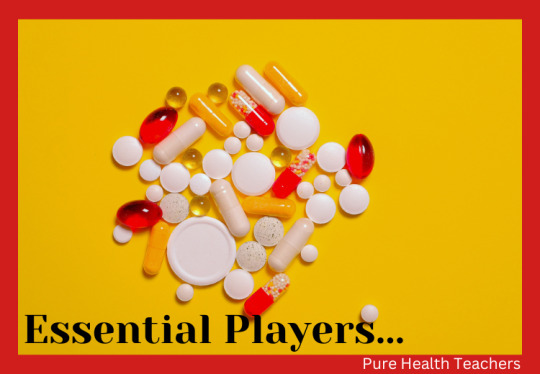
- The Vital Bridge between Nutrition and Health
Picture your body as a dynamic ecosystem, where every function is a piece of a greater puzzle. Enter vitamins – the bridges that seamlessly connect different parts of this intricate system. Vitamin A, for instance, takes on a role akin to a guardian of vision and skin health, ensuring your body's external interface remains robust. B vitamins step in as metabolic wizards, facilitating the conversion of food into energy, fuelling your activities, and maintaining the rhythm of your daily life.
Then comes vitamin C, a potent antioxidant that stands sentinel against intruders seeking to compromise your immune system. Its vibrant presence sweeps through your body, defusing harmful molecules and empowering your immune cells to stand strong. Meanwhile, vitamin D partners with calcium, forging the very foundation of your physical structure – your bones.
- Essential Players in the Symphony of Health
Yet, the story goes far deeper than surface-level functions. Vitamins are the maestros of cellular communication, ensuring that signals between cells are clear and precise, allowing your body to coordinate its actions effortlessly. They're the guardians of genetic integrity, overseeing the replication of DNA and the birth of new life.
However, this harmonious symphony can be disrupted. A deficiency in a single vitamin can trigger a cascade of repercussions, leading to a spectrum of health challenges. The rhythm of vitality might falter, leaving you fatigued and drained. Wounds might take longer to heal, and your body's defenses might crumble without the support of these pint-sized powerhouses.
- Embarking on a Journey of Vitamin Enlightenment
As we embark on this enlightening journey, brace yourself for an exploration of vitamins' roles as the unsung heroes in your pursuit of holistic health. We'll unveil the intricate dance of their functions, decode the telltale signs of deficiency, and equip you with the knowledge to harness their potential through a well-rounded diet and informed supplementation.
Join us as we delve into the fascinating realm of vitamin significance, unraveling their contributions to the intricate balance of health. Allow the symphony of vitamins to resonate within you, inspiring you to embrace their pivotal presence and chart a course towards a life brimming with vitality.
Section 1: Understanding Vitamins
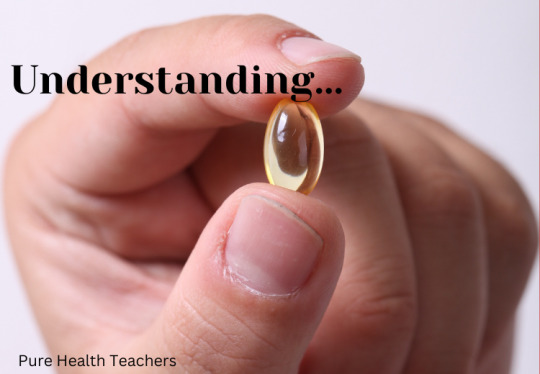
- Defining Vitamins and Their Classification
Vitamins are organic compounds that our bodies require in small amounts to sustain various physiological processes and maintain optimal health. They don't provide energy directly, but they act as essential co-factors in metabolic reactions, ensuring these reactions occur efficiently.
The categorization of vitamins revolves around their solubility, segregating them into two primary groups:
- Fat-Soluble Vitamins: These encompass vitamin types A, D, E, and K. They dissolve in fats and are stored in the body's fatty tissues and liver. Because of their storage capacity, excessive intake of fat-soluble vitamins can lead to toxicity.
- Water-Soluble Vitamins: This group comprises vitamins C and the B-complex vitamins (such as B1, B2, B3, B6, B9, and B12). Water-soluble vitamins dissolve in water and are not stored extensively in the body. Any excess is usually excreted through urine, which means they need to be replenished regularly through diet.
- The Micronutrient Marvels
Micronutrients are nutrients required by the body in smaller quantities compared to macronutrients like carbohydrates, proteins, and fats. Vitamins fall under the umbrella of micronutrients and are indispensable for the proper functioning of bodily processes. Each vitamin has a unique role, acting as a catalyst, regulator, or facilitator in various chemical reactions.
Vitamins contribute to a wide array of functions, including:
- Energy Production: B vitamins play a crucial role in converting carbohydrates, fats, and proteins into energy that fuels bodily activities.
- Immune Support: Vitamins such as vitamin C and vitamin D play a pivotal role in supporting the immune system, enhancing the body's ability to fight off infections.
- Cell Growth and Repair: Vitamin A is essential for cell growth and differentiation, while vitamin E supports cell membrane integrity and healing.
- Bone Health: Vitamin D aids in the absorption of calcium and phosphorus, contributing to strong bones and teeth.
- Antioxidant Defense: Certain vitamins, like vitamin E and vitamin C, function as antioxidants, neutralizing harmful free radicals and protecting cells from oxidative damage.
- Sourcing Vitamins from Food and Supplements
Vitamins can be obtained from a variety of sources, primarily through a balanced diet:
- Natural Food Sources: Different foods are rich in specific vitamins. For example, vitamin C can be found in citrus fruits, strawberries, and bell peppers, while vitamin A is abundant in carrots, sweet potatoes, and spinach.
- Fortified Foods: Some foods are fortified with vitamins to address deficiencies in the population. Examples include fortified cereals with added B vitamins and vitamin D-fortified dairy products.
- Supplements: In cases where dietary intake falls short or specific health conditions require higher vitamin levels, supplements can be considered. Nevertheless, it's crucial to seek advice from a medical expert prior to commencing any supplementation plan.
By embracing a diverse and balanced diet, individuals can obtain the vitamins their bodies need to function optimally. Coupled with a keen understanding of the sources of these essential nutrients, you can ensure your body receives the micronutrient support it craves for overall health and vitality.
Section 2: The Power of Vitamin Benefits
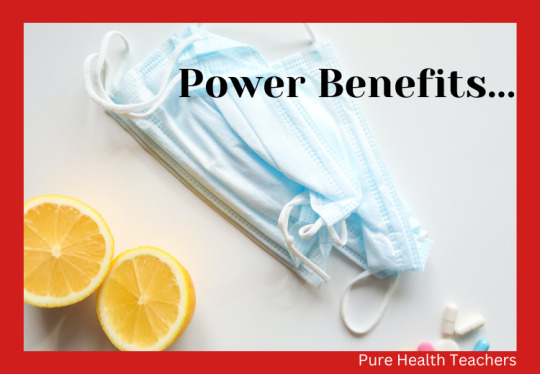
- Unveiling the Multifaceted Benefits
The remarkable influence of vitamins on our health transcends the mere notion of dietary essentials. These micronutrients, though small in quantity, exert a profound impact on various dimensions of our overall wellbeing. From fortifying our immune defenses to enhancing our cognitive prowess, vitamins play pivotal roles in multiple aspects of health.
- Exploring Vitamin-Specific Marvels
- Immune Function: Vitamin C is a stalwart defender of the immune system. Its antioxidant properties shield immune cells from damage, while also aiding in the production of white blood cells that combat infections. Vitamin D is another key player, regulating immune responses and bolstering our ability to ward off illnesses.
- Skin Health: Vitamin A emerges as the skin's ally, contributing to cell production and repair, which helps maintain skin integrity and a youthful appearance. Vitamin E, with its antioxidant prowess, protects the skin from the harmful effects of UV radiation and environmental pollutants.
- Energy Levels: B vitamins, collectively known as the B-complex, are the architects of energy production. Vitamin B1 (thiamine), B2 (riboflavin), B3 (niacin), B5 (pantothenic acid), B6 (pyridoxine), and B7 (biotin) collaborate in converting food into energy, ensuring a steady supply of vitality to fuel our activities.
- Cognitive Function: Vitamins wield a significant impact on brain health. B vitamins, particularly B6, B9 (folate), and B12, contribute to cognitive function by supporting neurotransmitter production and aiding in the maintenance of brain cells. Additionally, omega-3 fatty acids, often considered essential nutrients, work alongside vitamins to promote cognitive health.
- Bone Health: Vitamin D steps into the limelight once again, facilitating the absorption of calcium and phosphorus, crucial minerals for strong bones. Vitamin K also plays a role in bone health by aiding in the regulation of calcium.
- Heart Health: Vitamins contribute to cardiovascular wellness. Vitamin B3 (niacin) can help raise HDL (good) cholesterol levels, while B6 and B12 help reduce levels of homocysteine, a compound linked to heart disease risk.
- Eye Health: Vitamin A's presence isn't limited to skin health; it's also pivotal for vision. It's a key component of the protein rhodopsin, which is essential for low-light and color vision.
- Transformative Examples of Vitamin Influence
Consider the transformative journey of someone integrating vitamins into their daily regimen. As they savor an orange rich in vitamin C, they're bolstering their immune system, ensuring it's armed to fend off infections. A handful of nuts containing vitamin E becomes a shield against oxidative stress, preserving their skin's radiance.
When they enjoy a sunny morning, the skin synthesizes vitamin D, bolstering bone health and uplifting their mood. A plate of leafy greens loaded with B vitamins propels their energy levels, keeping them vibrant throughout the day. And as they savor fatty fish with omega-3s and B vitamins, their brain thanks them with enhanced cognitive clarity.
Vitamins, acting as silent allies, leave no facet of health untouched. They become the catalysts that propel individuals toward vitality, influencing not just individual functions but their holistic wellbeing.
In the symphony of health, vitamins compose harmonious melodies that resonate through every corner of our existence. Through a keen understanding of their intricate roles, individuals can harness the transformative power of vitamins to lead lives of vitality and wellness.
Section 3: Vitamins and Disease Prevention
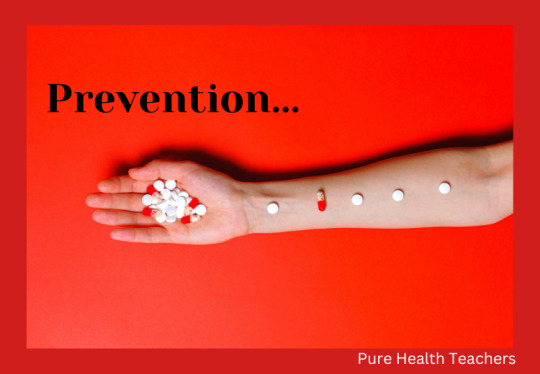
- The Shield of Vitamins Against Chronic Diseases
Vitamins are not just components that facilitate daily bodily functions; they also act as guardians, shielding us against the onslaught of chronic diseases. As we delve into the intricate realm of disease prevention, it becomes evident that specific vitamins assume roles that go beyond mere nutrient support, influencing our long-term health trajectory.
- The Chronic Disease Defenders
- Vitamin D and Bone Health: Vitamin D is renowned for its pivotal role in promoting strong bones and preventing conditions like osteoporosis. By aiding in the absorption of calcium and phosphorus, it ensures that our skeletal structure remains resilient, reducing the risk of fractures and bone-related disorders.
- Vitamin C and Immune Enhancement: Vitamin C emerges as a formidable shield for the immune system. Its antioxidant properties neutralize harmful free radicals, reducing the risk of chronic inflammation. This, in turn, enhances immune function, enabling our bodies to combat infections and potentially lower the risk of chronic immune-related disorders.
- Vitamin E and Heart Health: Vitamin E, an antioxidant heavyweight, contributes to cardiovascular wellness by safeguarding against oxidative stress. By reducing the oxidation of LDL cholesterol, it minimizes the buildup of arterial plaques, decreasing the risk of heart disease.
- Vitamin A and Vision: Beyond its contribution to skin health, vitamin A plays a vital role in maintaining good vision. It supports the health of the retina and the cornea, helping prevent conditions like night blindness and age-related macular degeneration.
- Vitamin K and Blood Clotting: Vitamin K ensures proper blood clotting by facilitating the synthesis of proteins necessary for coagulation. Adequate vitamin K intake can help prevent excessive bleeding and contribute to cardiovascular health by preventing the calcification of arteries.
- Disease Prevention in Action
Consider the journey of someone who makes conscious choices to integrate vitamin-rich foods into their diet. As they enjoy a morning stroll, their skin absorbs sunlight, triggering vitamin D synthesis. With each step, they reinforce their bone health, reducing the risk of fractures in their later years.Their breakfast, rich in citrus fruits bursting with vitamin C, becomes a daily ritual of immune fortification. They know that a strong immune system can act as a barrier against chronic diseases that may seek to compromise their vitality.
Incorporating leafy greens into their lunch, they're nurturing their cardiovascular health through the vitamin E they provide. As they savor a slice of salmon during dinner, they're ensuring a steady supply of heart-healthy omega-3 fatty acids. In this way, vitamins serve as more than just nutrients; they're proactive agents that empower us to take charge of our health journey. By embracing foods rich in these micronutrients, individuals can proactively reduce the risk of chronic diseases and pave the way for a life of vitality and wellbeing.
As we unravel the intricate connection between vitamins and disease prevention, it's clear that these micronutrients are not just contributors to everyday wellness. They emerge as potent allies, aiding us in our pursuit of a long and vibrant life, safeguarded against the threats of chronic illnesses.
Section 4: Overcoming Deficiencies
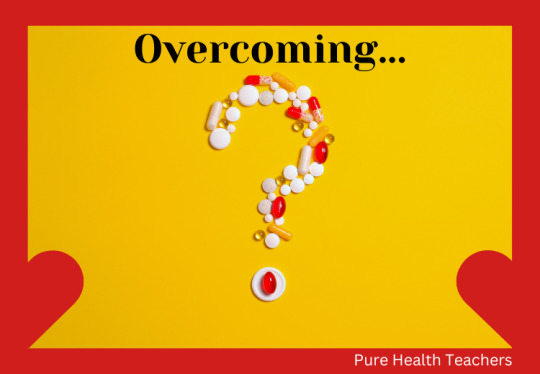
- The Shadow of Deficiencies and Their Manifestations
The absence of essential vitamins in our diets can cast a shadow over our wellbeing, leading to a range of consequences that manifest in both subtle and pronounced ways. As we delve into the realm of vitamin deficiencies, it becomes clear that these gaps can have far-reaching effects on our physical and mental health.
- Unmasking Deficiency Signs and Finding Solutions
- Vitamin D Deficiency: Insufficient vitamin D levels can lead to weakened bones, manifesting as increased fracture risk and conditions like osteoporosis. It might also result in fatigue, muscle weakness, and even compromised immune function.
- Vitamin C Deficiency: A lack of vitamin C can lead to scurvy, a condition characterized by fatigue, joint pain, bleeding gums, and weakened immune responses. Recognizing early signs, such as slow wound healing and frequent infections, can prompt corrective actions.
- Vitamin B Deficiency: The B-complex vitamins are critical for energy metabolism, nerve function, and red blood cell production. A deficiency can lead to issues like anemia, nerve damage, mood disturbances, and cognitive decline.
- Nourishing Solutions for Deficiencies
- Dietary Interventions: Embracing a varied and balanced diet is the cornerstone of preventing deficiencies. Including a colorful array of fruits, vegetables, lean proteins, whole grains, and dairy or dairy alternatives can provide a spectrum of vitamins.
- Supplementation: In cases where dietary sources fall short, supplements can be considered. However, it's crucial to approach supplementation thoughtfully. Consulting a healthcare professional ensures that you're taking the right vitamins in appropriate doses.
- Medical Guidance: If you suspect a deficiency or experience concerning symptoms, seeking medical guidance is paramount. Blood tests can confirm deficiencies, allowing healthcare professionals to recommend personalized interventions.
- A Pathway to Optimal Wellbeing
Imagine someone who heeds the signs of deficiency and takes proactive steps. They integrate fatty fish into their diet, loading up on vitamin D and omega-3 fatty acids. They embrace citrus fruits and leafy greens, ensuring a steady supply of vitamin C and other vital nutrients. Their meals become a colorful mosaic of vitamins, nourishing them from within.
Suppose they notice persistent fatigue, joint pain, and irritability. Recognizing these as potential signs of deficiency, they consult a healthcare professional who guides them toward appropriate testing and personalized solutions.
In this narrative, overcoming deficiencies is more than just a remedy; it's a proactive journey toward optimal health. By bridging the nutritional gaps, individuals can prevent a cascade of health issues, ensuring that their bodies are equipped to thrive in all aspects of life.
As we unravel the complexities of deficiencies and their solutions, it's evident that addressing these gaps is not just a health choice—it's a commitment to lifelong vitality and wellbeing.
Section 5: Maximizing Vitamin Absorption
- Unlocking the Secrets of Efficient Absorption
While a balanced diet rich in vitamins is a great starting point, the key to reaping the full benefits lies in maximizing the absorption of these vital nutrients. Here, we delve into the strategies that pave the way for optimal vitamin uptake, ensuring that the effort you put into your diet translates into tangible health gains.
- Elevating Absorption Through Smart Choices
- Pairing Vitamins with Fat: Fat-soluble vitamins (A, D, E, and K) are better absorbed when consumed with healthy fats. Avocado slices in a salad or a drizzle of olive oil over roasted veggies can enhance the absorption of these vitamins.
- Vitamin C Boost: Vitamin C-rich foods can enhance the absorption of non-heme iron, the type of iron found in plant-based sources. Pairing spinach with citrus fruits or adding bell peppers to a bean salad can amplify iron absorption.
- Iron-Rich Combos: Iron from animal sources (heme iron) is more easily absorbed when combined with vitamin C-rich foods. For instance, enjoying lean red meat with a side of broccoli or bell peppers can optimize iron intake.
- Sunshine Vitamin Synergy: Vitamin D, often called the sunshine vitamin, pairs well with magnesium. A handful of nuts, seeds, or leafy greens can provide this mineral, complementing your efforts to maintain vitamin D levels.
- Balancing Calcium and Magnesium: Calcium and magnesium compete for absorption in the body. To maintain a healthy balance, avoid consuming large amounts of calcium-rich foods and supplements at the same time as magnesium-rich foods.
Read the full article
0 notes
Text
Financial Health: Achieve The Road to Prosperity 2023

I. Introduction
A. Definition of Financial Health:
Financial health refers to the overall well-being and stability of an individual's financial situation. It goes beyond just having a high income; it encompasses how well a person manages their finances, saves for the future, and plans for unforeseen circumstances. Achieving financial health means having a balanced approach to money management, making informed financial health decisions, and securing one's financial future. A financially healthy individual has control over their finances, maintains manageable debt, saves and invests wisely, and has a solid plan for achieving their financial health goals. It's not about accumulating wealth rapidly but rather having a sustainable and secure financial health position that allows for a comfortable lifestyle and the ability to weather financial health challenges.

B. Importance of Financial Health for Overall Wellbeing:
Financial health plays a crucial role in an individual's overall wellbeing and quality of life. Below are a few compelling reasons why it holds significant importance:
- Reduced Stress and Anxiety: Financial health instability can lead to significant stress and anxiety. Worries about debt, bills, and meeting financial obligations can negatively impact mental and emotional health. On the other hand, achieving financial health provides peace of mind and a sense of security, leading to improved overall well-being.
- Example: A person burdened with excessive credit card debt may constantly worry about interest rates and payments, impacting their sleep and overall happiness. However, someone with well-managed finances and a plan to pay off debts can feel a sense of relief and focus on other aspects of life.
- Improved Relationships: Financial health stress can strain relationships with family, friends, and partners. Disagreements about money are common in households, and achieving financial health allows individuals to communicate openly about financial health goals, leading to stronger and more harmonious relationships.
- Example: A couple with shared financial health goals and responsible money management practices can work together towards a secure future, fostering trust and unity in their relationship.
- Enhanced Opportunities: Financial health opens up opportunities for personal and professional growth. Having savings and investment funds can enable individuals to pursue further education, start a business, or invest in assets that generate additional income.
- Example: An individual with a well-funded emergency savings account might have the freedom to take calculated risks, such as starting a small business or changing careers, without fearing financial ruin in case of unexpected setbacks.
- Retirement and Long-Term Planning: Planning for retirement is a critical aspect of financial health. A financially secure retirement allows individuals to enjoy their golden years without financial constraints and maintain their desired lifestyle.
- Example: Someone who diligently contributes to retirement accounts and invests wisely throughout their working years can retire comfortably and pursue hobbies or travel during retirement, whereas those who neglect financial planning may face challenges during their retirement years.
- Emergency Preparedness: Life is unpredictable, and financial health enables individuals to handle unexpected emergencies without falling into financial turmoil.
- Example: An individual who has an emergency fund can handle sudden medical expenses or car repairs without resorting to high-interest loans, whereas someone without such financial preparation might struggle to cover these costs.
In conclusion, financial health goes beyond just the numbers in a bank account. It is a fundamental aspect of overall wellbeing, impacting stress levels, relationships, future opportunities, and preparedness for life's uncertainties. By understanding and striving for financial health, individuals can pave the way towards a more stable, secure, and fulfilling life.
II. Assessing Your Current Financial Health

A. Understanding Your Financial Goals:
Before embarking on the journey to financial health, it's essential to have a clear understanding of your financial goals. These goals will serve as the foundation for your financial planning and decision-making. Take the time to identify both short-term and long-term objectives, such as paying off debt, saving for a down payment on a house, funding your children's education, or building a comfortable retirement.
- Example: A young professional might set short-term goals like paying off student loans and creating an emergency fund, while also setting long-term goals like purchasing a home and contributing to retirement accounts for financial security in later years.
B. Evaluating Income, Expenses, and Budgeting:
To assess your financial health, start by evaluating your income sources and expenses. Understanding your cash flow is crucial in managing your finances effectively. Create a comprehensive budget that outlines all your income streams and categorizes your expenses, including necessities (rent, utilities, groceries), discretionary spending (entertainment, dining out), and savings contributions.
- Example: An individual might discover that they are spending a significant portion of their income on unnecessary expenses like eating out regularly or subscribing to multiple streaming services. By creating a budget and identifying these areas of overspending, they can allocate more money toward debt repayment or savings.
C. Analyzing Debt and Credit Score:
Debt can be a significant obstacle to financial health, so it's vital to analyze your current debt situation. Make a list of all outstanding debts, including credit card balances, student loans, car loans, and mortgages. Calculate the total amount owed, the interest rates, and the monthly payments. Aim to reduce high-interest debts first while making minimum payments on others.
Additionally, check your credit score regularly to understand your creditworthiness. A good credit score opens up better borrowing opportunities and can lead to lower interest rates on loans and credit cards.
- Example: Someone with several credit card balances and high-interest rates may consolidate their debt through a personal loan or a balance transfer credit card with a lower interest rate. This strategy can save money on interest and help pay off the debt faster.
D. Assessing Savings and Emergency Funds:
Having adequate savings and an emergency fund is crucial for financial security. Evaluate your current savings accounts, investments, and retirement funds. Strive to establish an emergency fund with enough funds to sustain your living expenses for three to six months. This financial safety net provides crucial support during unforeseen circumstances, such as sudden unemployment, medical emergencies, or unexpected car repairs.
- Example: An individual who has diligently contributed to their savings and investment accounts might find that they have sufficient funds to cover both short-term emergencies and long-term financial goals like investing in a property or financing their child's education are among the financial goals they may pursue.
By thoroughly assessing your financial goals, income, expenses, debt, credit score, and savings, you gain a comprehensive understanding of your current financial health. This evaluation lays the groundwork for creating a solid financial plan and making informed decisions to improve your overall financial well-being. Remember, regular reevaluation of these factors is essential as your financial situation and goals may change over time.
III. Building a Strong Foundation

A. Creating a Realistic Budget and Financial Plan:
Building a strong financial foundation begins with creating a realistic budget and financial plan. A budget allows you to track your income and expenses and helps you identify areas where you can cut back on spending and increase savings. Consider your financial goals and allocate funds accordingly. A financial plan goes beyond the budget and outlines your long-term objectives, such as buying a home, paying for education, or retiring comfortably.
- Example: A couple creating a budget might realize they are spending a significant portion of their income on non-essential items like dining out and subscriptions. By adjusting their budget and redirecting those funds towards debt repayment and savings, they can accelerate their progress toward homeownership.
B. Managing Debt and Improving Credit Score:
High levels of debt can hinder your financial health. Create a plan to manage and reduce your debts systematically. Focus on paying off high-interest debts first, such as credit card balances, while making minimum payments on lower-interest debts. Additionally, avoid taking on new debt unless necessary.
Improving your credit score is also crucial for a healthy financial foundation. Ensuring timely payments, maintaining low credit card balances, and refraining from opening excessive new credit accounts are vital practices for maintaining a healthy credit score. A good credit score not only helps you qualify for better loan terms but also enhances your overall financial reputation.
- Example: An individual working on improving their credit score might set reminders or use automatic payments to ensure they never miss a due date. As their credit score improves over time, they become eligible for lower interest rates on loans, leading to potential savings in the long run.
C. Building an Emergency Fund for Unexpected Expenses:
The course of life is uncertain, and unforeseen expenses may surface unexpectedly. Building an emergency fund is a crucial step in securing your financial foundation. Aim to save enough to cover three to six months' worth of living expenses. This fund provides a safety net during emergencies, such as medical issues, car repairs, or temporary unemployment, preventing you from going into debt.
- Example: An individual who diligently saves a portion of their income into an emergency fund might find that they can handle unexpected car repairs without resorting to high-interest credit cards or loans, preserving their financial stability.
D. Setting Up and Contributing to Retirement Accounts:
Securing long-term financial stability necessitates prioritizing retirement savings. Take advantage of retirement accounts such as a 401(k) or Individual Retirement Account (IRA). Contribute consistently to these accounts and consider maximizing employer-matched contributions whenever possible. Investing in retirement early allows you to benefit from compounding growth over time.
- Example: A young professional who starts contributing to their employer's 401(k) plan in their early twenties can benefit significantly from the power of compounding. By contributing consistently over the years, they can build a substantial retirement nest egg for their future.
Establishing a solid financial base demands commitment, strategic planning, and unwavering dedication. By creating a realistic budget, managing debt, improving your credit score, building an emergency fund, and investing in retirement accounts, you set yourself up for financial success and long-term stability. Continuously review and adjust your financial foundation as your life circumstances and goals change. This proactive approach to financial management will help you stay on track towards achieving your dreams and securing your financial future.
IV. Investments and Wealth Building

A. Understanding Different Investment Options:
To build wealth and achieve financial goals, it's essential to understand various investment options available in the financial market. Different investment vehicles come with varying risk levels and potential returns. Among the prevalent investment choices are stocks, bonds, mutual funds, exchange-traded funds (ETFs), real estate properties, and certificates of deposit (CDs).
- Example: An individual interested in investing in the stock market might research and analyze different companies, industries, and market trends before making informed decisions about purchasing individual stocks or investing in diversified mutual funds.
B. Creating a Diversified Investment Portfolio:
Diversification is a key strategy to manage risk while seeking potential rewards in investments. A diversified investment portfolio includes a mix of assets from different categories and industries. By spreading investments across various assets, you reduce the impact of a single investment's poor performance on your overall portfolio.
- Example: A diversified investment portfolio may include a combination of stocks, bonds, real estate, and cash. If one sector experiences a downturn, the positive performance of other assets can help mitigate losses, providing more stability to the overall portfolio.
C. Long-Term vs. Short-Term Investment Strategies:
Investors must decide on their investment horizon and risk tolerance when building wealth. Long-term investments typically involve holding assets for an extended period, often years or even decades, to benefit from compounding growth and ride out market fluctuations. Short-term investments, on the other hand, seek to capitalize on immediate market opportunities but may carry higher risks.
- Example: A long-term investor saving for retirement might focus on contributing regularly to a diversified retirement account like a 401(k) or IRA, allowing their investments to grow steadily over time. In contrast, a short-term investor might engage in day trading or invest in cryptocurrencies, seeking to profit from short-term price movements.
D. Seeking Professional Financial Advice:
Investing can be complex, and market conditions are subject to change. Seeking advice from a professional financial advisor can provide valuable insights and guidance tailored to your specific financial goals and risk tolerance. A financial advisor can help create a personalized investment strategy, monitor your portfolio, and make adjustments as needed.
- Example: An individual with significant assets and complex financial goals, such as retirement planning, tax optimization, and estate planning, may benefit from consulting a certified financial planner (CFP) to create a comprehensive wealth-building strategy.
It is crucial to bear in mind that investing inherently carries risks, and past performance does not guarantee future outcomes. Understanding your risk tolerance, conducting thorough research, and diversifying your investments are essential steps to protect and grow your wealth effectively.
By educating yourself about different investment options, creating a diversified portfolio, aligning your strategy with your investment horizon, and seeking advice from a qualified financial professional, you can embark on a successful journey of wealth building and work towards achieving your financial aspirations. Remember, investment decisions should align with your long-term financial goals and be reviewed periodically to ensure they remain in line with your evolving financial situation and aspirations.
V. Protecting Your Financial Health
A. The Importance of Insurance Coverage:
Insurance coverage is a crucial aspect of protecting your financial health from unexpected events and potential risks. Different types of insurance provide financial security in various areas of life. Health insurance, auto insurance, homeowners or renters insurance, and liability insurance are common examples. Insurance provides a safety net, ensuring that you don't face financial ruin in case of accidents, illnesses, or property damages.
- Example: A person involved in a car accident might be held liable for damages and medical expenses if they don't have adequate auto insurance coverage. With proper insurance, they can avoid the financial burden of paying out-of-pocket for these costs.
B. Health Insurance and Long-Term Care Planning:
Health insurance is a vital component of protecting your financial health from medical expenses. It covers doctor visits, hospital stays, prescription medications, and other medical services. Additionally, long-term care insurance is essential for protecting your assets and finances in the event you need extended care, such as assisted living or nursing home services, in the later stages of life.
- Example: A person facing a medical emergency requiring hospitalization and surgery might incur substantial medical bills without health insurance. With health insurance coverage, they can receive the necessary medical care without facing crippling debt.
C. Life Insurance and Estate Planning:
Life insurance is a crucial tool for protecting your loved ones financially in the event of your passing. It provides a death benefit to your beneficiaries, ensuring that they are financially supported and can cover expenses like funeral costs, outstanding debts, and ongoing living expenses. Estate planning is another critical aspect of protecting your financial health and ensuring your assets are distributed according to your wishes. Estate planning involves creating a will, establishing trusts, and naming beneficiaries for various accounts.
- Example: If a primary breadwinner in a family passes away, life insurance can provide financial support for their dependents, allowing them to maintain their standard of living and cover essential expenses.
D. Safeguarding Against Identity Theft and Fraud:
Identity theft and fraud can have devastating consequences on your financial health. Criminals can steal personal information and use it to make unauthorized transactions, open credit accounts in your name, or access your financial accounts. Safeguarding against these risks involves taking measures to protect your personal information and being vigilant about monitoring your accounts for any suspicious activity.
- Example: A person who becomes a victim of identity theft may face challenges in resolving unauthorized charges and restoring their credit score. By taking preventive measures, such as using secure passwords and regularly monitoring financial accounts, they can reduce the risk of falling victim to identity theft.
By understanding the importance of insurance coverage, health insurance, long-term care planning, life insurance, estate planning, and safeguarding against identity theft and fraud, you can protect your financial health from unforeseen circumstances and potential risks.
Read the full article
0 notes
Text
Occupational Health: Always Nurturing Wellness in the Workplace 24x7
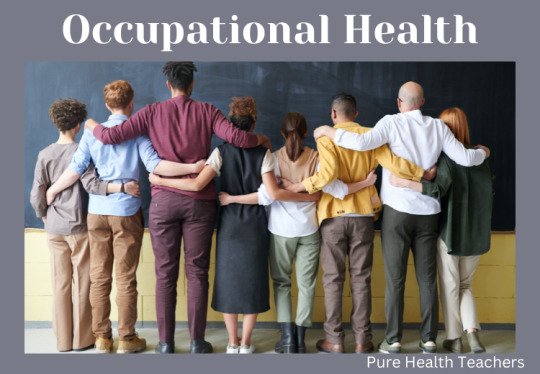
I. Introduction
Occupational Health (well-being) constitutes a diverse domain that centers on fostering and upholding the physical, mental, and social welfare of workers within their professional settings. It encompasses a range of strategies and practices aimed at creating safe, healthy, and productive work environments for employees across various industries. By prioritizing occupational health, organizations demonstrate a commitment to their employees' overall well-being, leading to improved job satisfaction, increased productivity, and enhanced organizational success.

A. Definition of Occupational Health
Occupational health refers to the proactive measures and interventions taken to safeguard the health and safety of employees in their work environments. It involves identifying, assessing, and mitigating workplace hazards to prevent occupational illnesses, injuries, and accidents. Occupational health professionals work to create an environment that supports physical and mental well-being, enabling employees to perform their job responsibilities effectively while minimizing health-related risks.
B. Importance of Occupational Health in the Workplace
The significance of occupational health in the workplace cannot be overstated. Here are some key reasons why organizations should prioritize occupational health:
- Employee Well-being: A healthy workforce is a productive workforce. When employees feel safe, supported, and cared for, their job satisfaction and morale improve. Occupational health programs that promote physical and mental well-being foster a positive work culture, leading to higher employee engagement and retention.
- Reduced Absenteeism and Turnover: Occupational health initiatives can help reduce workplace injuries and illnesses, leading to decreased absenteeism. A safe and healthy work environment also reduces employee turnover rates, as employees are more likely to stay with an organization that prioritizes their well-being.
- Enhanced Productivity: Employees' physical and mental health significantly impacts their productivity. By addressing workplace hazards and providing resources for employees' well-being, organizations can boost productivity levels, resulting in improved efficiency and output.
- Cost Savings: Investing in occupational health can result in cost savings for organizations. By preventing workplace injuries and illnesses, companies can avoid expenses related to medical treatments, worker compensation claims, and lost productivity due to absenteeism.
- Compliance with Regulations: Occupational health practices often align with legal requirements and industry-specific regulations. Complying with these standards not only ensures the safety of employees but also protects organizations from potential legal liabilities.
C. The Link Between Employee Well-being and Organizational Success
Employee well-being is intrinsically linked to organizational success. As employees experience a sense of appreciation and encouragement, their motivation to excel and give their best is heightened. A positive work environment, fostered by a robust occupational health program, creates a ripple effect that translates into various aspects of organizational success:
- Increased Employee Engagement: Engaged employees are committed to their work and take pride in their contributions. Organizations that prioritize employee well-being experience higher levels of engagement, leading to improved collaboration and creativity.
- Improved Organizational Reputation: Companies that prioritize occupational health are viewed as responsible and caring employers. Such a positive reputation attracts top talent and enhances an organization's appeal to customers and stakeholders.
- Enhanced Employee Performance: Healthy and content employees are better equipped to meet job expectations and perform at optimal levels. As a result, organizations benefit from increased productivity and efficiency, contributing to overall business success.
- Better Team Dynamics: An organizational setting that places employee well-being at the forefront nurtures constructive team interactions and promotes efficient communication channels. This enables teams to collaborate seamlessly and achieve collective goals.
- Reduced Employee Turnover: Employees are more likely to stay with organizations that value their well-being and offer a safe and supportive work environment. Reduced turnover rates lead to cost savings and increased organizational stability.
In conclusion, occupational health is not merely a legal obligation; it is an essential investment in an organization's most valuable asset: its employees. By creating a workplace that prioritizes employee well-being, organizations pave the way for improved performance, enhanced engagement, and sustained success. Proactive efforts to address occupational health contribute to a positive work culture and solidify an organization's position as an employer of choice in the competitive market.
II. Understanding Occupational Hazards
In this section, we delve into the world of occupational hazards, exploring the various risks that employees may face in their workplaces. By understanding these hazards, organizations can proactively address potential health and safety concerns, creating a safer and healthier work environment for their employees.

A. Identifying Workplace Health Risks
- Physical Hazards: Physical hazards include any factors in the work environment that can cause harm to the body. These may involve exposure to loud noises, extreme temperatures, vibrations, radiation, or ergonomic issues such as poor workstation setup. For example, workers in construction sites may face physical hazards from heavy machinery and exposure to hazardous materials.
- Chemical Hazards: Chemical hazards refer to substances that can cause harm or illness when workers are exposed to them. This may include toxic chemicals, irritants, gases, and fumes. For instance, workers in manufacturing plants or laboratories may encounter chemical hazards if proper safety protocols are not followed.
- Biological Hazards: Biological hazards arise from exposure to living organisms or their byproducts. This may include infectious agents, bacteria, viruses, and mold. Healthcare workers and laboratory personnel, for example, may be exposed to biological hazards if they handle samples without appropriate protective measures.
- Psychosocial Hazards: Psychosocial hazards relate to the social and organizational aspects of the workplace that can impact employees' mental well-being. Factors like high workload, job insecurity, workplace violence, and lack of support from supervisors can contribute to psychosocial hazards. Employees in high-stress environments, such as call centers or emergency services, may be at risk of psychosocial hazards.
B. Common Occupational Health Issues
- Musculoskeletal Disorders (MSDs): MSDs are among the most prevalent occupational health issues. They involve injuries and disorders affecting the muscles, tendons, ligaments, nerves, and other soft tissues. Repetitive movements, poor posture, and heavy lifting are common risk factors for MSDs. Examples include carpal tunnel syndrome in office workers and back injuries in manual laborers.
- Respiratory Issues: Workers exposed to harmful substances, such as dust, asbestos, or airborne pollutants, may develop respiratory problems. Occupational asthma, chronic bronchitis, and other respiratory conditions can result from prolonged exposure to these hazards.
- Noise-Induced Hearing Loss: Prolonged exposure to high noise levels in industrial settings, construction sites, or music venues can cause permanent hearing loss. Proper hearing protection and noise control measures are essential in preventing this occupational health issue.
- Occupational Stress: Excessive work demands, lack of control over tasks, and poor work-life balance can lead to occupational stress. If left unaddressed, chronic stress can have severe implications on employees' mental and physical health.
C. Impact of Occupational Hazards on Employee Performance
Occupational hazards can significantly affect employee performance and overall organizational productivity:
- Decreased Productivity: When employees are exposed to hazards or suffer from work-related injuries or illnesses, their ability to perform tasks efficiently may be compromised. Reduced productivity can lead to delays in projects and decreased output.
- Increased Absenteeism: Employees facing occupational hazards may require time off work to recover or seek medical treatment. Frequent absences due to work-related health issues can disrupt workflow and affect team dynamics.
- Higher Employee Turnover: If workers feel unsafe or unwell due to hazardous working conditions, they may choose to leave the organization in search of a safer workplace. Elevated employee turnover rates may lead to amplified expenses associated with recruitment and training processes.
- Mental and Emotional Strain: Exposure to occupational hazards can lead to stress, anxiety, and other mental health issues. Employees experiencing such strain may find it challenging to focus, make decisions, or maintain motivation.
Organizations must conduct regular risk assessments and implement preventive measures to minimize the impact of occupational hazards on employee performance. By prioritizing occupational health and safety, companies can foster a culture of well-being, resulting in a more engaged and resilient workforce.
III. Promoting Physical Health at Work
Physical health plays a vital role in overall well-being, and promoting it in the workplace is crucial for creating a healthy and productive workforce. In this section, we explore various strategies to prioritize and enhance employees' physical health at work.

A. Ergonomics and Workplace Design
- Ergonomic Workstations: Ensuring that workstations are ergonomically designed can significantly reduce the risk of musculoskeletal disorders (MSDs). Adjustable chairs, proper desk height, and ergonomic keyboard and mouse placement promote neutral body postures, minimizing strain on muscles and joints.
- Lighting and Visual Comfort: Adequate lighting and visual comfort are essential for reducing eye strain and headaches. Providing well-lit work areas and adjustable lighting options can enhance employees' comfort and productivity.
- Workspace Layout: An efficient workspace layout should encourage movement and reduce unnecessary walking or stretching. Organizing frequently used items within reach helps minimize repetitive movements and prevents unnecessary physical strain.
- Break Areas: Designating well-equipped break areas allows employees to relax and recharge during their breaks. Comfortable seating, access to healthy snacks, and opportunities for social interaction can contribute to improved overall physical well-being.
B. Preventive Measures for Musculoskeletal Disorders
- Educational Programs: Offering educational programs on ergonomics and MSD prevention can raise employees' awareness about the importance of proper body mechanics and workplace posture. Training sessions can equip employees with self-care techniques to prevent MSDs.
- Regular Stretching Breaks: Encouraging employees to take short stretching breaks throughout the day helps reduce muscle tension and stiffness. Simple stretching exercises can improve flexibility and alleviate discomfort caused by prolonged sitting or repetitive tasks.
- Use of Assistive Devices: Providing assistive devices and tools, such as lifting aids or ergonomic tools, can reduce the physical strain associated with certain tasks, particularly in physically demanding job roles.
- Early Reporting and Intervention: Encouraging employees to report any discomfort or early signs of MSDs enables timely intervention. Prompt attention and appropriate adjustments to work tasks can prevent minor issues from escalating into more severe health problems.
C. Encouraging Physical Activity and Exercise in the Workplace
- On-site Fitness Facilities: Establishing on-site fitness facilities, such as gyms or exercise rooms, encourages employees to engage in regular physical activity during breaks or before/after work. Providing access to exercise equipment promotes a healthier lifestyle and reduces sedentary behavior.
- Wellness Challenges and Programs: Implementing wellness challenges and programs, such as step challenges or group exercise classes, fosters a sense of community and motivation among employees to stay physically active.
- Walking or Standing Meetings: Encouraging walking or standing meetings instead of traditional seated meetings can boost energy levels and increase physical activity throughout the workday.
- Incentives for Active Commuting: Offering incentives for active commuting, such as biking or walking to work, can motivate employees to incorporate physical activity into their daily routines.
Promoting physical health at work is a win-win for both employees and organizations. By creating a physically supportive work environment and encouraging healthy habits, companies can enhance employee well-being, reduce the risk of work-related injuries, and improve overall productivity and morale. Prioritizing physical health not only benefits individual employees but also contributes to building a thriving and sustainable work culture.
IV. Prioritizing Mental Well-being
Mental well-being is integral to overall health and productivity. In this section, we explore effective strategies to prioritize and support employees' mental well-being in the workplace.

A. Addressing Stress and Mental Health Challenges
- Creating a Supportive Environment: Fostering a supportive and open work environment encourages employees to discuss their mental health challenges without fear of stigma or judgment. Implementing anti-stigma campaigns and providing resources for mental health support demonstrate an organization's commitment to addressing these issues.
- Stress Management Programs: Offering stress management programs, such as workshops or counseling services, equips employees with coping mechanisms to navigate work-related stressors effectively. Techniques like mindfulness meditation, deep breathing exercises, and time management skills can help alleviate stress and improve mental resilience.
- Flexible Work Arrangements: Providing flexible work arrangements, such as telecommuting or flexible hours, allows employees to manage their workloads while balancing personal commitments and reducing stress associated with rigid schedules.
- Promoting Workload Balance: Ensuring that workloads are manageable and realistic helps prevent burnout and excessive stress. Regularly reviewing work assignments and collaborating with employees to set achievable goals contributes to a healthier work environment.
B. Implementing Work-Life Balance Initiatives
- Encouraging Paid Time Off (PTO): Encouraging employees to take their entitled PTO promotes work-life balance. Offering additional incentives for utilizing vacation days, such as travel vouchers or wellness packages, motivates employees to prioritize their well-being outside of work.
- Flexible Leave Policies: Implementing flexible leave policies, such as parental leave, sick leave, or caregiver leave, acknowledges the diverse needs of employees and supports their work-life balance.
- Wellness Programs: Integrating comprehensive wellness programs that focus on mental health, physical health, and work-life balance reinforces an organization's commitment to the well-being of its employees.
- Technology Boundaries: Encouraging employees to set technology boundaries, such as avoiding work-related emails during non-working hours, promotes a healthier work-life balance and helps prevent burnout.
C. Building Resilience and Coping Skills
- Resilience Training: Offering resilience training programs equips employees with the tools to bounce back from challenges and setbacks. Building resilience enhances employees' ability to cope with stress and maintain mental well-being during demanding periods.
- Professional Development and Training: Investing in employees' professional development fosters a sense of purpose and growth. Encouraging skill-building opportunities enhances employees' confidence and resilience in handling workplace demands.
- Peer Support Networks: Establishing peer support networks or buddy systems allows employees to connect and provide emotional support to one another. These networks create a sense of camaraderie and understanding, strengthening employees' coping abilities.
- Employee Assistance Programs (EAPs): Implementing EAPs provides employees with confidential access to counseling and mental health resources. EAPs offer a valuable avenue for seeking assistance and guidance during challenging times.
By prioritizing mental well-being, organizations create a work culture that values employees' holistic health. Addressing stress, promoting work-life balance, and building resilience empower employees to thrive both personally and professionally. As a result, organizations experience increased productivity, reduced absenteeism, and enhanced employee engagement, leading to a positive and sustainable work environment.
V. Enhancing Occupational Safety
Occupational safety is paramount to protect employees from workplace hazards and ensure a secure and healthy work environment. In this section, we delve into strategies to enhance occupational safety and create a culture of safety consciousness within the organization.
A. Importance of Workplace Safety Training
- Risk Awareness: Workplace safety training raises employees' awareness of potential hazards and risks specific to their job roles. By understanding these risks, employees can take necessary precautions to prevent accidents and injuries.
Read the full article
0 notes
Text
Sexual and Reproductive Health: Accurate Embracing Positive 8 Pathways to Fulfillment
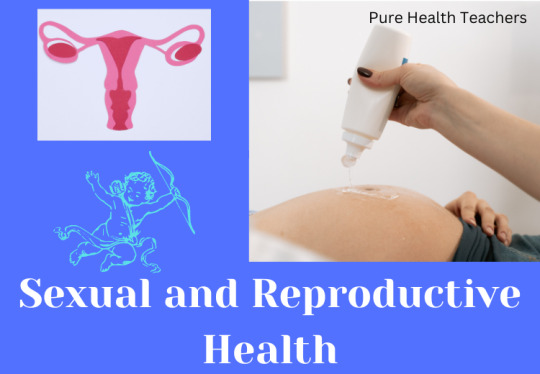
I. Introduction
A. Definition of Sexual and Reproductive Health:
Sexual and Reproductive Health (SRH) is a comprehensive concept that encompasses the physical, emotional, mental, and social well-being related to sexuality and reproduction. It goes beyond the absence of disease and dysfunction and focuses on promoting positive and fulfilling experiences in both areas.
In the context of sexual health, it involves understanding and embracing one's sexuality, having respectful and consensual sexual relationships, and being free from sexually transmitted infections (STIs). Sexual health is about feeling comfortable with one's body and sexuality, making informed decisions about sexual activity, and communicating openly with partners about desires and boundaries.
Regarding reproductive health, it involves the ability to have safe and satisfying sexual experiences while planning and realizing desired pregnancies. Reproductive health also addresses issues related to fertility, preconception care, family planning, and access to reproductive healthcare services.
B. The Importance of Sexual and Reproductive Wellness:
- Overall Well-Being: Sexual and reproductive wellness is an integral part of overall well-being. A positive and satisfying sexual life contributes to emotional and mental health, fosters intimate connections, and enhances self-esteem and body image.
- Preventive Healthcare: Prioritizing sexual and reproductive health allows for early detection and prevention of various health issues. Regular screenings for STIs and reproductive health conditions help identify potential problems before they escalate.
- Family Planning: By promoting family planning options and access to contraception, sexual and reproductive wellness enables individuals and couples to make informed choices about starting or expanding their families, fostering responsible parenthood.
- STI Prevention: Educating individuals about safe sex practices and the importance of using protection helps reduce the transmission of sexually transmitted infections, contributing to a healthier population.
- Empowerment and Autonomy: Being knowledgeable about sexual and reproductive health empowers individuals to take control of their bodies and make decisions that align with their values and life goals.
- Relationship Satisfaction: Open communication about sexual needs and desires with partners fosters healthier and more satisfying relationships, promoting emotional intimacy and trust.
C. Tips for Enhancing Sexual and Reproductive Wellness:
- Education and Awareness: Seek reputable sources of information on sexual and reproductive health to stay informed about best practices, contraceptives, and available healthcare resources.
- Regular Health Check-ups: Schedule routine check-ups with healthcare providers to monitor and maintain your sexual and reproductive health. This includes screenings for STIs, Pap smears, and discussions about family planning options.
- Communication and Consent: Engage in open and honest conversations with sexual partners about desires, boundaries, and consent. Consent should be enthusiastic, ongoing, and mutually agreed upon.
- Safe Sex Practices: Practice safe sex by using condoms or other barrier methods to prevent STIs and unintended pregnancies.
- Access to Healthcare: Advocate for accessible and affordable sexual and reproductive healthcare services, ensuring that everyone has the opportunity to prioritize their well-being.
Examples of Sexual and Reproductive Wellness:
- A sexually active young adult practices safe sex by consistently using condoms and regularly gets tested for STIs to protect their sexual health and that of their partners.
- A couple interested in starting a family visits a healthcare professional to discuss preconception care, family planning options, and fertility awareness methods to optimize their chances of conception.
- An educational program on comprehensive sex education in schools promotes healthy relationships, body positivity, and responsible sexual behaviors among teenagers, reducing risky sexual practices and STI transmission.
- A woman visits her gynecologist for a routine check-up and Pap smear, ensuring early detection and prevention of reproductive health issues like cervical cancer.
In conclusion, sexual and reproductive health is a vital aspect of overall well-being and empowers individuals to make informed decisions about their bodies and relationships. Prioritizing sexual and reproductive wellness through education, regular healthcare check-ups, safe sex practices, and open communication contributes to a healthier and more fulfilling life.
II. Understanding Sexual Health

A. Components of Sexual Health:
Sexual health comprises several interconnected components that collectively contribute to an individual's overall well-being. Understanding these components is essential for fostering a positive and holistic approach to sexual health:
- Physical Health: Physical aspects of sexual health involve the proper functioning of reproductive organs and overall sexual well-being. This includes being free from sexually transmitted infections (STIs), addressing sexual dysfunctions, and practicing safe sex.
- Emotional Health: Emotional well-being plays a crucial role in sexual health. Having positive body image, self-esteem, and feeling emotionally connected to partners contributes to satisfying and fulfilling sexual experiences.
- Mental Health: Mental health impacts sexual health, as conditions like anxiety, depression, and stress can affect sexual desire and intimacy. Maintaining good mental health through self-care and seeking support when needed positively influences sexual well-being.
- Social Health: Social factors, such as open communication, mutual respect, and understanding between partners, influence sexual relationships. Positive social interactions and support systems create a conducive environment for healthy sexual experiences.
B. Promoting Positive Sexual Relationships:
Promoting positive sexual relationships involves fostering healthy communication, mutual respect, and consent within intimate partnerships. Here are some tips for nurturing positive sexual relationships:
- Communication: Open and honest communication about desires, boundaries, and preferences is essential for establishing trust and intimacy in a sexual relationship.
- Consent: Prioritizing clear and enthusiastic consent ensures that all sexual activities are mutually desired and agreed upon by both partners.
- Emotional Connection: Building emotional intimacy outside of sexual encounters fosters deeper connections and enhances the overall quality of sexual experiences.
- Vulnerability and Empathy: Being vulnerable and showing empathy towards each other creates a supportive environment where partners can express their needs and concerns without judgment.
C. Safe Practices and Protection:
Practicing safe sex is fundamental to protecting sexual health and preventing the transmission of sexually transmitted infections and unintended pregnancies. Here are some safe practices and protection tips:
- Use Barrier Methods: Consistently use condoms or dental dams during sexual activities to reduce the risk of STI transmission.
- Regular Testing: For sexually active individuals, regular testing for STIs is crucial. Testing allows for early detection and treatment if necessary.
- Birth Control: If not intending to conceive, consider using effective birth control methods to prevent unintended pregnancies.
- Vaccinations: Stay up-to-date with vaccinations like the HPV vaccine, which protects against human papillomavirus, a common cause of cervical cancer and other health issues.
Examples of Understanding Sexual Health:
- A sexually active individual regularly gets tested for STIs and discusses their sexual health with healthcare providers, ensuring they are informed about safe practices and protection methods.
- A couple practices open communication about their sexual desires and boundaries, ensuring that both partners feel respected and comfortable during intimate moments.
- A young adult seeks therapy to address anxiety that has been affecting their sexual well-being, understanding the connection between mental health and sexual health.
- An educational workshop on college campuses emphasizes the importance of consent and safe sex practices, empowering students to make informed choices about their sexual health.
Understanding sexual health involves recognizing the interconnectedness of physical, emotional, mental, and social aspects, fostering positive sexual relationships, and prioritizing safe practices and protection. By educating oneself, engaging in open communication, and seeking professional support when needed, individuals can embrace a healthy and fulfilling approach to sexual well-being.
III. Embracing Reproductive Health

A. Reproductive Anatomy and Physiology:
Understanding reproductive anatomy and physiology is essential for individuals and couples seeking to embrace reproductive health. Familiarizing oneself with the reproductive organs, menstrual cycle, and fertility patterns lays the foundation for informed family planning and overall reproductive well-being.
- Menstrual Cycle: Knowing the different phases of the menstrual cycle, including menstruation, follicular phase, ovulation, and luteal phase, helps individuals identify their fertile window and plan or avoid pregnancies accordingly.
- Male Reproductive System: Understanding the male reproductive system, including the testes, sperm production, and ejaculation process, enables men to comprehend their role in family planning.
- Female Reproductive System: Knowledge of the female reproductive system, including the ovaries, fallopian tubes, uterus, and cervix, aids in understanding fertility, conception, and pregnancy.
B. Family Planning and Contraception Options:
Family planning empowers individuals and couples to make conscious decisions about when to start or expand their families. Various contraception options are available to suit diverse needs and preferences:
- Barrier Methods: Condoms, both male and female, act as barriers to prevent the exchange of bodily fluids, reducing the risk of STI transmission and unintended pregnancies.
- Hormonal Contraceptives: Options like birth control pills, patches, injections, and hormonal intrauterine devices (IUDs) work by regulating hormones to prevent ovulation or alter the uterine lining.
- Long-Acting Reversible Contraceptives (LARCs): LARCs, such as hormonal or copper IUDs and hormonal implants, provide extended contraception without requiring daily adherence.
- Natural Family Planning: Fertility awareness methods, like tracking basal body temperature and cervical mucus, help identify fertile and non-fertile days for couples aiming to conceive or avoid pregnancy.
C. Fertility Awareness and Preconception Care:
Fertility awareness involves being attuned to one's reproductive cycle to understand fertility patterns and make informed decisions about family planning. Preconception care focuses on optimizing health before attempting to conceive:
- Charting and Tracking: Couples interested in conception use fertility awareness methods to track ovulation and increase their chances of conceiving during the fertile window.
- Preconception Health Check-up: Before attempting to conceive, women should visit their healthcare provider for a preconception check-up to address any health concerns and ensure a healthy pregnancy.
- Nutrition and Lifestyle: Adopting a balanced diet, managing stress, exercising regularly, and avoiding harmful substances like tobacco and excessive alcohol promote reproductive health.
Examples of Embracing Reproductive Health:
- A couple planning to start a family learns about fertility awareness methods and begins charting the woman's menstrual cycle to identify the best time to conceive.
- A woman consults with her healthcare provider about family planning options and decides to get a hormonal IUD, providing long-term contraception with minimal daily effort.
- A young adult attends a preconception care class to learn about the importance of a healthy lifestyle and nutrition before trying to conceive in the future.
- An educational seminar in a community health center offers information about various contraception options, empowering individuals to make informed choices about their reproductive health.
Embracing reproductive health involves understanding reproductive anatomy, family planning options, and fertility awareness methods. By staying informed, making responsible decisions, and seeking appropriate medical advice, individuals and couples can take charge of their reproductive well-being and navigate their family planning journey with confidence.
IV. Sexual Education and Awareness
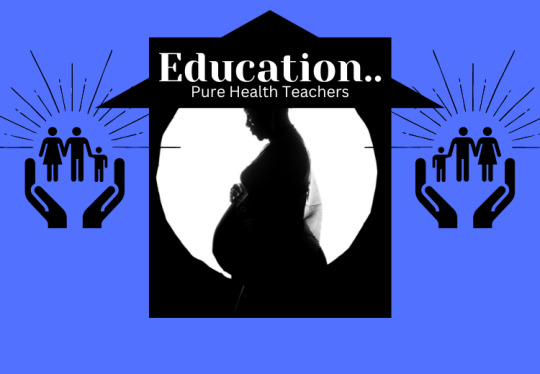
A. Comprehensive Sex Education:
Comprehensive sex education is an essential component of promoting sexual health and awareness. It goes beyond the traditional approach of focusing solely on abstinence and covers a wide range of topics related to sexuality, relationships, and reproductive health. Here's what comprehensive sex education entails:
- Accurate Information: Comprehensive sex education provides scientifically accurate and age-appropriate information about anatomy, contraception, STIs, pregnancy, and sexual orientation.
- Relationships and Communication: It emphasizes healthy communication, consent, and mutual respect in relationships, promoting positive and safe sexual experiences.
- Reproductive Health: The curriculum includes discussions on family planning, fertility awareness, preconception care, and the various contraception options available.
- STI Prevention: Comprehensive sex education educates individuals on ways to prevent STIs, such as the proper use of condoms and regular testing.
B. Addressing Myths and Misconceptions:
Sexual education should address common myths and misconceptions that circulate in society. Dispelling these myths with accurate information is crucial for promoting sexual health and responsible decision-making. Examples of myths include:
- Myth: Contraception is 100% effective. Reality: While contraception is highly effective, no method is foolproof. Combining methods, like condoms and hormonal contraceptives, can enhance protection.
- Myth: Only women are responsible for contraception. Reality: Both partners share responsibility for contraception and should openly discuss family planning.
- Myth: Masturbation is harmful or unnatural. Reality: Masturbation is a normal and healthy aspect of human sexuality and is not harmful.
- Myth: Conceiving is not possible while menstruating. Reality: While the likelihood is lower, it's still possible to conceive during menstruation, especially if the cycle is irregular.
C. The Role of Consent and Boundaries:
Consent and boundaries are foundational elements of healthy sexual relationships and are integral to promoting sexual well-being. Understanding their importance helps prevent sexual coercion and enhances overall sexual experiences.
- Consent: Consent is an enthusiastic and voluntary agreement to engage in sexual activity. It must be continuous and can be withdrawn at any point. Both partners should clearly communicate their desires and limitations.
- Boundaries: Respecting personal boundaries means understanding and acknowledging each other's limits and preferences. Setting and respecting boundaries ensures that sexual encounters are comfortable and consensual.
- Communication: Open communication is key to understanding and honoring each other's consent and boundaries. This includes discussing desires, expectations, and any discomfort openly and honestly.
Examples of Sexual Education and Awareness:
- A school implements a comprehensive sex education program that covers anatomy, contraception, consent, and communication. Students engage in discussions to clarify doubts and misconceptions.
- An online platform creates educational content that addresses common myths about sex and relationships, providing accurate information to dispel misinformation.
- A college organization hosts workshops on consent and boundaries, encouraging students to have open conversations about sexual experiences and expectations in relationships.
- A sexual health clinic offers educational resources and counseling sessions to individuals seeking guidance on sexual health, contraception, and relationship dynamics.
Promoting sexual education and awareness involves providing comprehensive information, debunking myths, and emphasizing the significance of consent and boundaries. Educating individuals about their bodies, relationships, and reproductive health empowers them to make informed decisions and lead healthy, fulfilling sexual lives.
V. Common Sexual and Reproductive Health Issues
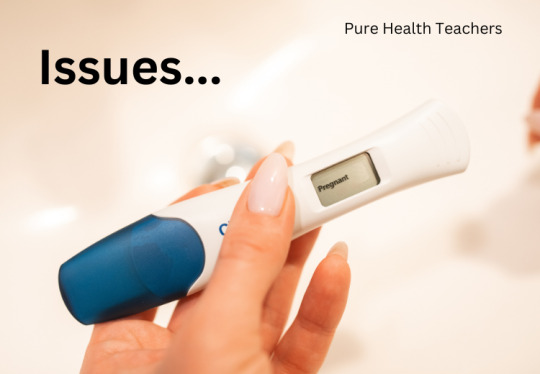
A. Sexually Transmitted Infections (STIs) and Prevention:
STIs (Sexually Transmitted Infections) are infections primarily spread through sexual contact. They pose a significant public health concern and can have serious consequences if left untreated. Here's some relevant information and prevention tips:
- Common STIs: Examples of common STIs include chlamydia, gonorrhea, syphilis, human papillomavirus (HPV), herpes, and HIV.
- Prevention: Practicing safe sex by using condoms or dental dams consistently and correctly during sexual activity can significantly reduce the risk of contracting STIs.
Read the full article
0 notes
Text
Emotional Health: 7 Accurate ways Unlocking Inner Strength

I. Introduction:
Welcome to an enlightening exploration of emotional health—a profound journey into the depths of our inner world. Emotional health refers to the state of balance and harmony in our emotional experiences, encompassing our ability to recognize, understand, and manage our feelings effectively. It goes beyond merely experiencing positive emotions; it entails embracing the entire spectrum of emotions and responding to them in a constructive and empowering manner.

(A) Defining Emotional Health : At its core, emotional health entails a state of emotional well-being where one can navigate life's challenges with resilience and adaptability. It involves acknowledging and expressing emotions authentically, without suppressing or denying them. Understanding the true essence of emotional health empowers us to develop emotional intelligence—a key aspect of thriving in a world of ever-changing emotions and relationships.
(B) Importance of Emotional Well-being : Emotional well-being serves as the cornerstone of a fulfilled and meaningful life. When our emotions are in harmony, we experience heightened self-awareness, empathy for others, and a sense of contentment. Cultivating emotional well-being enables us to build healthier relationships, make sound decisions, and manage stress effectively. It influences our performance at work, academic achievements, and overall life satisfaction.
(C) How Emotional Health Impacts Overall Quality of Life ? : The impact of emotional health extends far beyond our inner world—it ripples throughout every aspect of our existence. A healthy emotional state positively influences our physical health, enhancing our immune system and promoting overall wellness. It also fuels our mental clarity and focus, allowing us to handle challenges with a clear and balanced mindset. Emotionally healthy individuals tend to foster deeper connections with others, enriching their social lives and promoting a sense of belonging and support.
As we embark on this journey of exploring emotional health, let us open our hearts and minds to embrace the transformative power it holds. By nurturing our emotional well-being, we can unlock the door to a more fulfilling, purposeful, and joyful life—a life brimming with compassion, resilience, and inner peace. So, let us delve into the beauty of emotional health and discover the path to a more authentic and vibrant existence.
II. Understanding Emotions:

Emotions, the intricate tapestry of our inner world, guide us through life's myriad experiences and encounters. In this section, we embark on an enlightening journey to understand the depth and significance of emotions and how they shape our daily lives.
(A) Exploring Different Emotions and Their Significance: Emotions form the vivid palette of colors that paint the canvas of our lives. From the exuberance of joy to the tranquility of contentment, and the depths of sadness to the sparks of excitement, each emotion holds a unique purpose and message. We unravel the enigmatic nature of emotions, discovering how they provide invaluable insights into our needs, desires, and experiences. By embracing the full spectrum of emotions, we foster a more profound connection with ourselves and those around us.
(B) The Role of Emotional Intelligence: Emotional intelligence acts as the compass that navigates our emotional landscape with finesse and understanding. By honing our emotional intelligence, we gain the ability to recognize, interpret, and respond to emotions—both within ourselves and others—with sensitivity and empathy. This skill empowers us to forge deeper, more meaningful relationships, resolve conflicts effectively, and become adept at managing stress and pressure. Understanding the vital role of emotional intelligence equips us with the tools to harmonize our emotions and cultivate emotional resilience.
(C) Recognizing and Accepting Emotions : In a world that often urges us to suppress or mask our emotions, learning to recognize and accept them becomes a transformative act of self-compassion. Emotions, whether positive or challenging, serve as essential messengers, offering valuable insights into our inner state and experiences. By embracing these emotions without judgment, we create a safe space for ourselves to process and heal. Moreover, accepting our emotions fosters a profound sense of authenticity, allowing us to show up genuinely in our relationships and embrace our vulnerabilities with courage.
As we embark on this journey of understanding emotions, let us embrace the beauty of this intricate emotional landscape. By exploring the richness of our feelings, honing emotional intelligence, and accepting every emotion as a precious part of our being, we open ourselves to a more profound and compassionate experience of life. So, let us dive into the depths of emotions and unearth the treasure trove of self-discovery and growth that awaits us.
III. Factors Influencing Emotional Health:

Emotional health, like a delicate ecosystem, is influenced by an intricate interplay of various factors that shape our well-being and resilience. In this section, we illuminate the key elements that influence our emotional landscape and provide practical insights into nurturing a harmonious emotional state.
(A) Social Relationships and Support Systems: Human connection, the foundation of emotional health, thrives in the richness of our social relationships and support systems. As social beings, our interactions with family, friends, and community play a profound role in shaping our emotional well-being. We explore the significance of nurturing healthy relationships and cultivating a robust support network that fosters trust, empathy, and belonging. By leaning on these connections during times of joy and adversity, we create a solid foundation for emotional flourishing and a sense of connectedness to the world around us.
(B) Self-Care and Stress Management: Amid the hustle and bustle of modern life, self-care emerges as a vital act of self-compassion and preservation of emotional health. We delve into the art of self-care, embracing practices that nourish our minds, bodies, and souls. From mindfulness exercises and relaxation techniques to engaging in hobbies that bring us joy, self-care becomes an indispensable tool for managing stress and preventing emotional exhaustion. By prioritizing our well-being, we fortify our emotional resilience and build the capacity to thrive in the face of life's challenges.
(C) Mindfulness and Emotional Awareness: In the age of constant distractions, mindfulness becomes a beacon of presence and self-awareness. By practicing mindfulness, we cultivate the ability to be fully present in the moment, acknowledging and accepting our emotions without judgment. This profound self-awareness enables us to respond to our emotions with clarity and understanding, rather than reacting impulsively. As we explore the transformative power of mindfulness, we uncover its potential to enhance our emotional intelligence, foster inner peace, and forge deeper connections with ourselves and others.
(D) The Impact of Physical Health on Emotional Well-being: The mind and body are intimately entwined, and the state of our physical health plays a significant role in our emotional well-being. We examine the fascinating connection between physical health and emotions, understanding how regular exercise, adequate sleep, and a balanced diet positively influence our moods and resilience. Recognizing the importance of nurturing our physical health, we discover the cascading effects it has on our emotional state, empowering us to lead more vibrant and emotionally enriched lives.
In this exploration of the factors influencing emotional health, we come to understand the power we hold to shape our emotional landscape. By nurturing positive social connections, practicing self-care, embracing mindfulness, and prioritizing our physical health, we embark on a transformative journey towards emotional well-being—a journey that empowers us to embrace life's complexities with grace and authenticity.
IV. Strategies for Cultivating Emotional Health:

In our quest for emotional well-being, we uncover a treasure trove of transformative strategies that empower us to build emotional resilience, embrace self-compassion, manage stress, and enhance our emotional intelligence. Let us embark on this enriching journey, arming ourselves with invaluable tools for nurturing our emotional health.
A. Building Emotional Resilience:
- Coping Mechanisms for Life's Challenges: Discover the art of navigating life's ups and downs with grace and strength. We explore effective coping mechanisms that enable us to face adversity with resilience, embracing challenges as opportunities for growth. By developing healthy coping strategies, we equip ourselves to bounce back from setbacks and embrace the journey of self-discovery with unwavering determination.
- Developing a Positive Mindset: Unravel the power of a positive mindset as we delve into the profound impact of thoughts on our emotional well-being. By cultivating optimism and reframing negative thoughts, we nurture a fertile ground for emotional growth and self-empowerment. With a positive mindset as our compass, we forge a path to a more fulfilling and joyful existence.
B. Embracing Self-Compassion and Self-Acceptance:
- Overcoming Self-Criticism: Dive into the depths of self-compassion, learning to silence the inner critic that often undermines our emotional health. We explore the transformative act of offering ourselves kindness and understanding during times of self-doubt. By letting go of self-judgment and embracing self-acceptance, we foster a loving relationship with ourselves and others.
- Practicing Self-Love and Forgiveness: Embrace the healing power of self-love and forgiveness as we embark on a journey of self-discovery and growth. By extending compassion towards our imperfections and learning to forgive ourselves, we liberate our hearts from past burdens and open ourselves to the boundless potential for emotional healing and renewal.
C. Managing Stress and Anxiety:
- Stress-Reduction Techniques: In a fast-paced world, mastering stress-reduction techniques becomes paramount for maintaining emotional balance. We explore practical methods such as mindfulness meditation, deep breathing exercises, and time management to alleviate stress's toll on our emotional well-being. By proactively managing stress, we cultivate an inner sanctuary of calm and serenity.
- Anxiety Coping Strategies: Equip yourself with effective strategies to navigate anxiety's ebbs and flows, empowering yourself to face anxious moments with composure. From grounding techniques to thought challenging, we discover the means to manage anxiety's grip and prevent it from hindering our emotional growth and well-being.
D. Enhancing Emotional Intelligence:
- Empathy and Understanding Others: At the heart of emotional intelligence lies the profound ability to empathize with others. We explore the transformative power of empathy in building deeper connections and nurturing compassionate relationships. By fostering understanding and emotional attunement, we enrich our emotional landscape and create a more harmonious world.
- Effective Communication Skills: Uncover the art of effective communication as a cornerstone of emotional intelligence. By honing active listening and assertiveness, we enrich our relationships and navigate conflicts with greater understanding and empathy. With effective communication as a bridge, we foster emotional intimacy and forge authentic connections with the people around us.
In this journey of cultivating emotional health, we equip ourselves with an arsenal of empowering strategies. By building emotional resilience, embracing self-compassion, managing stress, and enhancing emotional intelligence, we become architects of our emotional landscape—a landscape that blooms with authenticity, joy, and meaningful connections. So, let us embark on this transformative expedition, nurturing the seeds of emotional well-being within ourselves and nurturing the world with compassion and love.
V. The Connection Between Emotional Health and Physical Health:

The intricate connection between emotional health and physical well-being reveals a profound interplay that shapes our overall vitality and resilience. In this section, we delve into the fascinating relationship between our emotions and physical health, uncovering the transformative power it holds.
- Impact of Emotional Well-being on Immune Function: Science unravels the remarkable connection between emotional well-being and our body's immune function. As we explore the mind-body link, we discover how emotions, both positive and negative, influence our immune system's response to infections and diseases. Nurturing emotional health becomes an indispensable tool for bolstering our immune system, ensuring greater protection against illnesses and promoting holistic well-being.
- The Role of Emotional Health in Chronic Illness Management: In the face of chronic illness, emotional health emerges as an essential component of comprehensive care. We shed light on how emotional well-being plays a pivotal role in managing chronic conditions, offering relief from stress, anxiety, and depression that often accompany long-term health challenges. By addressing emotional health alongside medical treatment, individuals can experience a higher quality of life and improved coping abilities during their health journey.
VI. Seeking Professional Support:
Recognizing the transformative power of seeking professional support in nurturing emotional health, we embrace the courage to take this crucial step towards well-being.
- Recognizing When to Seek Help: Understanding when to seek professional support for emotional well-being becomes a crucial aspect of self-awareness. We explore the signs that indicate the need for assistance, such as persistent feelings of sadness, anxiety, or emotional distress. By acknowledging the importance of seeking help, we open doors to a journey of healing and growth.
- Therapeutic Options for Improving Emotional Health: Discover a multitude of therapeutic options available to foster emotional well-being. From talk therapy, cognitive-behavioral therapy (CBT), to mindfulness-based interventions, we explore the diverse approaches that support emotional healing and resilience. Embracing these therapeutic modalities empowers individuals to navigate life's challenges with renewed strength and clarity.
- Breaking the Stigma Surrounding Mental Health: In a world that often stigmatizes mental health issues, breaking down these barriers becomes a collective responsibility. We shed light on the significance of eradicating the stigma surrounding mental health, creating a safe and supportive environment for seeking help. By fostering understanding and empathy, we build a community that prioritizes emotional health and embraces the diverse paths to healing.
As we acknowledge the profound connection between emotional and physical health, we embrace the power we hold to nurture our well-being on multiple levels. By seeking professional support when needed and understanding the pivotal role of emotional health in chronic illness management, we pave the way for a more balanced, fulfilling, and resilient life—a life that harmonizes the mind, body, and soul in beautiful unity.
VII. Promoting Emotional Health in Daily Life:
Incorporating practices that promote emotional health into our daily routines empowers us to lead more vibrant, balanced, and fulfilling lives. Let us explore transformative strategies to enrich our emotional landscape and embrace each day with a renewed sense of purpose and joy.
- Practicing Mindfulness and Meditation: Unravel the transformative power of mindfulness and meditation as vehicles to cultivate inner peace and emotional clarity. By grounding ourselves in the present moment, we foster self-awareness and build resilience in the face of life's challenges. Through mindfulness and meditation, we awaken our senses to the beauty that surrounds us, finding solace in the midst of chaos and fostering a profound sense of well-being.
- Engaging in Creative Outlets and Hobbies: Unlock the doors to self-expression and emotional release through creative outlets and hobbies. Whether it's painting, writing, dancing, or any other form of artistic expression, engaging in creative activities nurtures our souls and allows us to process emotions in a healthy and cathartic manner. Embracing our creative passions enriches our emotional health, promoting a deeper connection with ourselves and fostering a sense of accomplishment and joy.
- Cultivating Healthy Relationships: At the core of emotional well-being lies the richness of healthy relationships. We explore the art of cultivating meaningful connections with family, friends, and our community. By nurturing relationships built on trust, empathy, and open communication, we create a support system that sustains us through life's highs and lows. These relationships become a source of comfort, joy, and a mirror to reflect our emotions, fostering personal growth and emotional resilience.
VIII. Conclusion:
As we draw this journey of exploring emotional health to a close, we come to understand the profound significance of prioritizing our emotional well-being in the fabric of daily life.
- Recapitulation of the Importance of Emotional Health: Emotional health emerges as the cornerstone of a fulfilling life—a vital aspect that influences our physical health, mental clarity, and social interactions. By understanding and nurturing our emotions, we open the doors to self-awareness, resilience, and a deeper connection with ourselves and the world around us.
- Encouragement for Taking Steps to Nurture Emotional Well-being: Empowered with transformative strategies, we are encouraged to take proactive steps to nurture our emotional well-being.
Read the full article
0 notes
Text
Environmental Health: 7 Accurate Ways Balancing Nature and Health

I. Introduction:
- Definition of Environmental Health Environmental health is a multidisciplinary field that focuses on understanding the interactions between the environment and human health. It encompasses the study of various environmental factors, such as air and water quality, hazardous substances, climate, and ecosystem integrity, and how they can affect the well-being of individuals and communities. The goal of environmental health is to identify and mitigate potential hazards, promote sustainable practices, and ensure that human populations can thrive in a clean, safe, and healthy environment.
- Importance of Environmental Health for Human Well-Being Environmental health plays a vital role in safeguarding human well-being on both individual and societal levels. The quality of the air we breathe, the water we drink, and the environment we inhabit directly impacts our health and quality of life. Clean air and water are essential for respiratory and digestive health, while exposure to pollutants and hazardous chemicals can lead to various illnesses and chronic conditions. Beyond direct health impacts, environmental health also influences broader public health challenges. Climate change, for instance, can exacerbate extreme weather events, impacting food security, spreading infectious diseases, and displacing communities. Environmental health initiatives are crucial for preventing outbreaks, ensuring access to safe food and water, and minimizing the health consequences of environmental disasters.
Moreover, environmental health is closely linked to social equity. Vulnerable populations, such as low-income communities and marginalized groups, often bear a disproportionate burden of environmental hazards due to factors like location and lack of resources. Addressing environmental health disparities is essential for promoting health equity and creating a sustainable and just society for all.
By recognizing the importance of environmental health and adopting sustainable practices, we can protect human health, preserve biodiversity, and secure a healthier future for generations to come. Embracing environmental stewardship empowers us to create a harmonious balance between human needs and the preservation of the natural world, ensuring a healthier and more resilient planet for all living beings.
II. Understanding Environmental Hazards:

- Air Quality and Its Impact on Respiratory Health Air quality is a critical aspect of environmental health, and its impact on respiratory health is significant. Poor air quality, characterized by high levels of pollutants like particulate matter, nitrogen dioxide, and ozone, can lead to various respiratory issues. Prolonged exposure to air pollution can exacerbate asthma, chronic obstructive pulmonary disease (COPD), and other respiratory conditions. Additionally, fine particles and pollutants can penetrate deep into the lungs, leading to inflammation, reduced lung function, and increased susceptibility to respiratory infections. Understanding and addressing air quality hazards are essential steps in safeguarding respiratory health and promoting a healthier environment.
- Water Pollution and the Risks to Public Health Water pollution poses significant risks to public health and environmental well-being. Contaminated water sources can harbor harmful pathogens, chemicals, heavy metals, and other pollutants that pose serious health risks when consumed or used for daily activities. Waterborne diseases, such as cholera and dysentery, can spread rapidly through contaminated water, particularly in communities with inadequate access to safe drinking water and sanitation facilities. Addressing water pollution is crucial for preventing waterborne illnesses, protecting ecosystems, and ensuring access to clean and safe water for all.
- Hazardous Chemicals and Their Effects on Human Health Exposure to hazardous chemicals can have detrimental effects on human health. Chemical pollutants from industrial processes, agricultural practices, and consumer products can enter the environment and contaminate air, water, and soil. Prolonged exposure to these chemicals can lead to various health problems, including cancer, neurological disorders, reproductive issues, and respiratory ailments. Understanding the sources, pathways, and potential health impacts of hazardous chemicals is essential for implementing effective regulations, promoting safer alternatives, and safeguarding human health from chemical hazards.
III. The Connection Between Environment and Disease:

- Environmental Factors and Chronic Illnesses The environment plays a significant role in the development and progression of chronic illnesses. Lifestyle factors, exposure to environmental pollutants, and access to green spaces can influence the prevalence of conditions like heart disease, diabetes, and obesity. For example, a sedentary lifestyle, often associated with urbanization and limited access to recreational areas, can contribute to obesity rates. Additionally, exposure to air pollutants and allergens can worsen cardiovascular and respiratory conditions, exacerbating chronic illnesses. Recognizing the link between environmental factors and chronic diseases is crucial for designing public health interventions that promote healthier environments and prevent the onset of chronic illnesses.
- Environmental Contributions to Infectious Diseases Environmental factors can also significantly influence the spread and prevalence of infectious diseases. Changes in climate patterns, deforestation, and urbanization can alter the habitats of disease-carrying vectors, such as mosquitoes and ticks, leading to the expansion of vector-borne diseases like malaria and Lyme disease. Moreover, inadequate sanitation and water quality can facilitate the transmission of waterborne illnesses, including cholera and typhoid fever. Understanding the interplay between the environment and infectious diseases is vital for implementing disease prevention strategies, mitigating outbreaks, and protecting public health.
- Environmental Health Disparities and Vulnerable Populations Environmental health disparities are evident in the disproportionate burden of environmental hazards borne by vulnerable populations. Low-income communities, minority groups, and marginalized populations often experience a higher prevalence of environmental hazards due to factors like proximity to industrial sites, lack of access to clean water, and limited healthcare resources. These disparities contribute to health inequities, as these populations are more likely to face adverse health outcomes from environmental hazards. Addressing environmental health disparities requires a multi-faceted approach that includes promoting environmental justice, providing equitable access to resources, and empowering communities to advocate for healthier environments.
Understanding the intricacies of environmental hazards and their impact on human health is essential for developing comprehensive strategies that promote environmental sustainability, protect public health, and ensure a more equitable and healthier future for all. By acknowledging the connection between the environment and disease and embracing evidence-based practices, we can work towards creating a harmonious balance between human well-being and environmental preservation.
IV. Environmental Health Practices and Initiatives:

- Environmental Conservation and Biodiversity Preservation Environmental conservation and biodiversity preservation are crucial initiatives aimed at protecting the Earth's ecosystems and the multitude of species that inhabit them. Conservation efforts focus on safeguarding natural habitats, promoting sustainable land use, and protecting endangered species from extinction. Biodiversity preservation acknowledges the interconnectedness of all living organisms and recognizes their inherent value. By conserving biodiversity, we not only ensure the survival of unique species but also maintain the delicate balance of ecosystems, which is essential for human well-being, food security, and climate resilience.
- Waste Management and Recycling Efforts Effective waste management and recycling efforts are vital components of environmental health practices. Improper disposal of waste can lead to pollution of land, water bodies, and the atmosphere, posing serious health risks to humans and wildlife. Implementing comprehensive waste management systems, including recycling, reduces the burden on landfills, conserves resources, and decreases pollution. Recycling helps conserve energy and reduces greenhouse gas emissions associated with the production of new materials. By adopting responsible waste management practices, we can mitigate environmental impacts and create a more sustainable future.
- Renewable Energy Sources for a Sustainable Future The transition to renewable energy sources plays a pivotal role in securing a sustainable future. Renewable energy, such as solar, wind, and hydropower, offers clean alternatives to fossil fuels, reducing greenhouse gas emissions and air pollution. Embracing renewable energy technologies not only mitigates climate change but also fosters energy independence and stimulates economic growth in green sectors. By investing in renewable energy infrastructure and advancing sustainable energy policies, we can accelerate the transition to a more resilient, low-carbon, and environmentally friendly energy landscape.
V. The Role of Policy and Advocacy:
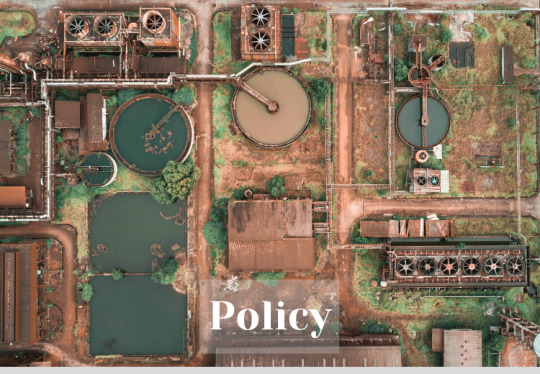
- Government Regulations and Environmental Health Protection Government regulations and policies play a critical role in safeguarding environmental health. Through legislation, governments can establish limits on pollution emissions, set standards for water and air quality, and implement measures to protect natural resources. Environmental health regulations ensure that industries and individuals adopt practices that minimize negative environmental impacts and protect public health. By enforcing these regulations, governments contribute to a cleaner, healthier, and more sustainable environment.
- Promoting Eco-Friendly Practices in Communities and Industries Promoting eco-friendly practices in both communities and industries is essential for creating a culture of sustainability. Communities can adopt environmentally conscious behaviors such as reducing water and energy consumption, using public transportation, and practicing recycling. Similarly, industries can implement eco-friendly technologies, adopt sustainable supply chain practices, and minimize waste generation. Fostering a culture of eco-consciousness requires collective effort and individual responsibility, which, when combined, contribute to significant positive impacts on the environment.
- Advocacy for Environmental Justice and Health Equity Advocacy for environmental justice and health equity seeks to address environmental health disparities and protect vulnerable communities from disproportionate environmental hazards. Environmental justice advocates work towards ensuring that marginalized populations have equitable access to clean air, water, and safe living environments. They champion policies that prioritize the well-being of disadvantaged communities and address the root causes of environmental injustices. By advocating for health equity, we can foster inclusive and sustainable environments that prioritize the health and dignity of all individuals.
Environmental health practices and policy initiatives are essential for creating a sustainable and resilient planet for current and future generations. Through conservation efforts, responsible waste management, and renewable energy adoption, we can minimize our ecological footprint and protect the planet's precious resources. Simultaneously, government regulations, eco-friendly practices, and advocacy for environmental justice reinforce our collective commitment to building a healthier and more equitable world. By embracing these practices and initiatives, we take significant steps towards harmonizing human well-being with the health of our planet.
VI. Impact of Climate Change on Environmental Health:
- Rising Temperatures and Health Implications The impact of climate change on environmental health is evident through rising global temperatures and their far-reaching health implications. Heatwaves, intensified by climate change, pose serious risks to human health, leading to heat-related illnesses such as heatstroke and dehydration. Vulnerable populations, including the elderly and young children, are particularly at risk. Moreover, higher temperatures can exacerbate air pollution, creating smog and ground-level ozone, which can trigger respiratory problems like asthma and worsen cardiovascular conditions. Understanding and addressing the health implications of rising temperatures are crucial for building resilience and protecting human well-being in a changing climate.
- Extreme Weather Events and Public Health Challenges Climate change contributes to the intensification and frequency of extreme weather events, such as hurricanes, floods, and wildfires. These events can have devastating consequences for public health. Floods can lead to waterborne diseases and displacement of communities, while wildfires produce hazardous air quality with respiratory health implications. Extreme weather events can also disrupt healthcare systems and access to essential services, amplifying public health challenges during disasters. Developing adaptive strategies to cope with these events and enhancing disaster preparedness are essential for minimizing the health impacts of extreme weather events.
- Mitigation and Adaptation Strategies for a Changing Climate Mitigating and adapting to climate change are critical components of environmental health strategies. Mitigation focuses on reducing greenhouse gas emissions through sustainable practices, such as transitioning to renewable energy, promoting energy efficiency, and reforestation efforts. By mitigating climate change, we can slow down the progression of environmental health challenges and protect ecosystems. Adaptation strategies involve enhancing resilience to the changes already occurring due to climate change. This includes implementing infrastructure improvements, developing early warning systems for extreme weather events, and promoting climate-resilient agriculture. Combining mitigation and adaptation efforts ensures a comprehensive approach to addressing climate change's impact on environmental health.
VII. Building Resilience and Promoting Environmental Health:
- Individual Actions for a Greener Lifestyle Individual actions play a significant role in building resilience and promoting environmental health. Adopting a greener lifestyle involves making conscious choices, such as reducing personal carbon footprint through energy conservation, using public transportation, and embracing sustainable consumer practices. Recycling, reducing waste, and conserving water also contribute to environmental health. By adopting greener habits, individuals can contribute to collective efforts to combat climate change and protect the environment for future generations.
- Community Engagement and Environmental Education Community engagement and environmental education are instrumental in building resilience and fostering environmental health. Raising awareness about climate change, its impact on environmental health, and potential mitigation and adaptation strategies empowers communities to take informed actions. Environmental education programs can promote sustainable practices, biodiversity conservation, and disaster preparedness within local communities. Engaged communities can collaborate on local initiatives, advocate for environmentally friendly policies, and support each other during extreme weather events, ultimately strengthening environmental health at the grassroots level.
- Collaboration between Health and Environmental Sectors Collaboration between the health and environmental sectors is essential for effective environmental health initiatives. By sharing knowledge and resources, healthcare professionals and environmental experts can develop integrated strategies to address climate change's health impacts. Health practitioners can play a vital role in raising awareness about climate-related health risks and promoting preventive measures. Conversely, environmental experts can provide valuable insights on ecological changes and contribute to designing resilient infrastructure and policies. Collaborative efforts between these sectors create synergy, fostering a holistic approach to environmental health challenges.
Addressing the impact of climate change on environmental health requires comprehensive efforts that encompass mitigation, adaptation, community engagement, and cross-sector collaboration. By understanding the implications of rising temperatures, extreme weather events, and adopting sustainable practices, we can build resilience and foster a greener, healthier future for both humanity and the planet. The collective action of individuals, communities, and institutions is paramount in safeguarding environmental health and ensuring a sustainable and thriving world for generations to come.
VIII. Conclusion
- Recap of the Importance of Environmental Health Throughout this exploration of environmental health, we have delved into its multifaceted significance in shaping the well-being of both the planet and its inhabitants. Environmental health encompasses a wide range of interconnected factors, from air and water quality to climate resilience and biodiversity preservation. We have seen how environmental hazards can impact human health, contributing to respiratory illnesses, infectious diseases, and chronic conditions. Furthermore, the consequences of climate change, including rising temperatures and extreme weather events, pose formidable challenges to public health and necessitate urgent action.
- Empowering Positive Change for a Sustainable Future The journey towards environmental health is one that demands collective responsibility and proactive measures. As we confront the realities of climate change and environmental degradation, we are presented with an opportunity to empower positive change for a sustainable future. Through individual actions like reducing carbon footprints, adopting eco-friendly habits, and supporting renewable energy, we can collectively create a powerful ripple effect of environmental stewardship.
Read the full article
0 notes
Text
Health Technology 365… The Transformative Power: Empowering Lives

I. Introduction:
A. Definition of Health Technology Health technology, often referred to as "healthtech," encompasses a wide range of medical and healthcare innovations that leverage technological advancements to enhance patient care, improve diagnostics, and streamline healthcare processes. It includes medical devices, telemedicine, health apps, artificial intelligence (AI), robotics, wearable devices, and more. By integrating technology into healthcare, health technology aims to revolutionize the way medical services are delivered, ultimately leading to better health outcomes and increased accessibility for patients worldwide.
B. Importance of Health Technology in Advancing Healthcare The importance of health technology in advancing healthcare cannot be overstated. By merging the capabilities of technology with medical expertise, healthtech has paved the way for groundbreaking innovations that have transformed patient care and medical practices. From enabling remote consultations through telemedicine to revolutionizing surgical procedures with robotic assistance, health technology has transcended geographical barriers and revolutionized healthcare delivery. It has empowered healthcare professionals with advanced tools for diagnostics and personalized treatment plans, leading to more accurate diagnoses, effective treatments, and improved patient outcomes.
II. The Evolution of Health Technology:

A. Historical Milestones in Health Technology The evolution of health technology has been marked by significant milestones that have shaped the landscape of modern medicine. From the discovery of X-rays in 1895, which revolutionized medical imaging, to the development of the first pacemaker in the 1950s, which transformed cardiac care, these breakthroughs have laid the foundation for the remarkable advancements seen in healthtech today. The advent of the internet in the 1990s further accelerated the growth of health technology, facilitating the sharing of medical information, telemedicine consultations, and Advancing the creation of health applications that empower individuals to assume control over their well-being.
B. Technological Innovations Driving Healthcare Transformation The rapid pace of technological innovation continues to drive a healthcare transformation that holds immense promise for the future. Artificial intelligence and machine learning have brought forth new possibilities in medical imaging analysis, drug discovery, and personalized treatment plans. Robotics, with its precision and dexterity, has elevated surgical procedures to new heights of accuracy and efficiency. Wearable devices, such as fitness trackers and smartwatches, enable individuals to monitor their health in real-time, fostering a proactive approach to well-being. Telemedicine has bridged the gap between patients and healthcare providers, particularly in remote or underserved areas, improving access to medical expertise and reducing healthcare disparities.
The evolution of health technology is a testament to human ingenuity and the unwavering pursuit of improving healthcare for all. As technology continues to advance, it holds the potential to redefine the boundaries of what is possible in the field of medicine, opening up new frontiers of exploration, discovery, and hope for a healthier and more connected world.
III. Applications of Health Technology:

- Telemedicine and Remote Healthcare Services Telemedicine has emerged as a transformative application of health technology, enabling patients to access medical care remotely. Through virtual consultations, telemedicine connects patients with healthcare professionals regardless of their geographical location. This innovative approach to healthcare delivery has proven particularly valuable in providing timely medical advice, follow-up care, and specialist consultations. Telemedicine's convenience and efficiency have revolutionized the healthcare landscape, ensuring that medical expertise is accessible to individuals, regardless of physical distances, and enhancing healthcare accessibility for all.
- Wearable Devices for Personalized Health Monitoring The advent of wearable devices has ushered in a new era of personalized health monitoring. From fitness trackers to smartwatches, these devices gather real-time data on various health metrics, such as heart rate, sleep patterns, activity levels, and even stress levels. With continuous monitoring, individuals can gain insights into their overall health and make informed lifestyle choices. Wearable devices empower users to take charge of their well-being, encouraging them to stay active, maintain healthy habits, and proactively address potential health concerns.
- Artificial Intelligence in Medical Diagnostics and Treatment Artificial intelligence (AI) has emerged as a groundbreaking tool in medical diagnostics and treatment. AI algorithms can analyze vast amounts of medical data, including imaging studies, genetic information, and patient records, with unprecedented speed and accuracy. In diagnostics, AI assists healthcare professionals in detecting anomalies, predicting disease outcomes, and recommending personalized treatment plans. Moreover, AI-driven robotic surgeries have revolutionized precision and minimally invasive procedures, leading to faster recovery times and reduced risks for patients.
- Health Apps and Digital Health Platforms Health apps and digital health platforms have become invaluable resources for individuals seeking to manage their health proactively. From fitness apps that track exercise routines to nutrition apps that offer personalized meal plans, these digital tools empower users to make informed decisions about their well-being. Moreover, digital health platforms enable patients to access their medical records, schedule appointments, and communicate securely with healthcare providers, enhancing patient engagement and facilitating seamless healthcare management.
- Robotics in Healthcare and Surgery Robotics has found a myriad of applications in the healthcare industry, particularly in surgical procedures. Surgical robots, operated by skilled surgeons, offer enhanced precision and dexterity during complex operations, minimizing the risk of complications and promoting faster recovery for patients. Additionally, robotics plays a role in rehabilitation, assisting individuals with mobility impairments to regain function and independence. The integration of robotics in healthcare has elevated the standard of care, promising new possibilities in medical advancements and improving patient outcomes.
The applications of health technology represent a revolution in healthcare delivery, unlocking new dimensions of accessibility, precision, and patient-centered care. From telemedicine bridging the gap between patients and providers to AI-driven diagnostics revolutionizing medical decision-making, these innovations empower individuals to take an active role in their health journey. Embracing the potential of health technology, healthcare continues to evolve into a more connected, personalized, and transformative field, dedicated to enhancing the well-being of individuals worldwide.
IV. The Benefits of Health Technology:
- Improved Patient Care and Outcomes Health technology has ushered in a new era of improved patient care and outcomes. By leveraging advanced diagnostic tools and real-time monitoring devices, healthcare professionals can swiftly and accurately identify health issues, leading to timely interventions and personalized treatment plans. Moreover, AI-powered algorithms analyze vast datasets to predict disease progression and optimize treatment approaches, contributing to better prognoses and enhanced quality of life for patients. With the integration of health technology, healthcare providers can deliver more targeted and effective care, resulting in improved patient outcomes and overall satisfaction.
- Enhancing Access to Healthcare in Remote Areas One of the most transformative advantages of health technology is its ability to bridge geographical barriers and enhance access to healthcare services in remote and underserved areas. Telemedicine has become a lifeline for individuals in rural communities, enabling them to consult with healthcare professionals, access medical advice, and receive follow-up care from the comfort of their homes. Additionally, wearable devices and mobile health apps empower individuals to monitor their health remotely, sharing vital information with healthcare providers for timely intervention. Through health technology, individuals in remote areas now have unprecedented access to medical expertise and resources that were once out of reach.
- Increased Efficiency and Cost-Effectiveness Health technology has streamlined healthcare processes, resulting in increased efficiency and cost-effectiveness across the healthcare system. Electronic health records (EHRs) have replaced cumbersome paper-based systems, facilitating seamless data sharing among healthcare providers, reducing administrative burden, and minimizing errors. Automation of routine tasks and robotic assistance in surgeries enhance precision, reduce procedure times, and lead to faster patient recovery, optimizing resource utilization and minimizing hospital stays. By embracing health technology, healthcare institutions can achieve greater operational efficiency, ultimately benefiting patients and reducing overall healthcare costs.
- Empowering Patients to Take Control of Their Health Empowerment lies at the heart of health technology, as it equips patients with the tools and knowledge to take control of their own health. Wearable devices, health apps, and online health platforms enable individuals to actively monitor their vital signs, track fitness goals, and manage chronic conditions proactively. With access to personalized health data and educational resources, patients become active participants in their healthcare journey, making informed decisions and adopting healthier lifestyles. The sense of empowerment fosters a stronger patient-provider partnership, leading to better communication, increased adherence to treatment plans, and improved overall well-being.
The benefits of health technology extend far beyond medical facilities, permeating every aspect of healthcare and individual well-being. From improved patient care and outcomes to empowering patients to actively engage in their health, health technology has revolutionized healthcare delivery, transcending boundaries and improving lives worldwide. As technology continues to evolve, the promise of a more connected, accessible, and patient-centric healthcare system remains steadfast, embracing the potential to shape a healthier and more inclusive future for all.
V. Challenges and Concerns in Health Technology Adoption:
- Data Privacy and Security Issues As health technology becomes more prevalent, data privacy and security concerns have surfaced as significant challenges. The collection, storage, and sharing of sensitive medical information raise questions about patient confidentiality and protection against potential data breaches. Healthcare organizations and technology developers must implement robust data encryption, access controls, and secure networks to safeguard patient data. Striking a balance between enabling data-driven insights and maintaining patient privacy remains a crucial challenge in the adoption of health technology.
- Integration and Interoperability Challenges The complex healthcare ecosystem, with its diverse array of medical devices, software systems, and electronic health records, presents challenges in achieving seamless integration and interoperability of health technology. Ensuring that different technologies can communicate and share data effectively is essential for providing comprehensive patient care. Standardization of data formats and interoperability protocols are critical to overcoming this challenge, enabling healthcare providers to access relevant patient information from various sources efficiently.
- Ethical Considerations in AI and Robotics Use The rapid advancement of artificial intelligence (AI) and robotics in healthcare brings ethical considerations to the forefront. As AI algorithms make complex medical decisions and robots become increasingly involved in patient care, concerns around accountability and transparency arise. Ensuring that AI-driven diagnoses are explainable and ethically sound becomes crucial. Additionally, addressing issues such as bias in AI algorithms and establishing guidelines for robotic-assisted procedures are essential steps in promoting ethical health technology adoption.
- Addressing Technological Disparities in Healthcare While health technology holds the potential to revolutionize healthcare, it also highlights the challenge of addressing technological disparities. Inequitable access to health technology in underserved communities and developing regions can exacerbate existing healthcare disparities. Initiatives that promote digital literacy and affordable access to health technology are vital in ensuring that everyone, regardless of socioeconomic status or geographic location, can benefit from its advancements. Bridging the digital divide is essential for a more equitable and inclusive healthcare system.
Navigating these challenges and addressing concerns in health technology adoption is essential to harnessing its full potential for the betterment of global healthcare. By prioritizing data security and privacy, promoting interoperability, adhering to ethical guidelines, and striving for equitable access, the healthcare industry can pave the way for a responsible and transformative integration of health technology into medical practice. As technology continues to evolve, fostering collaboration among healthcare stakeholders, policymakers, and technology developers remains key to overcoming these challenges and fostering a future where health technology serves as a catalyst for positive change in healthcare delivery.
VI. Future Trends in Health Technology:
- Precision Medicine and Personalized Treatments The future of health technology holds the promise of precision medicine and personalized treatments that cater to individual genetic makeup, lifestyle, and specific health needs. Through advancements in genomic sequencing and bioinformatics, healthcare professionals can gain unprecedented insights into an individual's genetic profile, identifying unique disease risks and treatment responses. Personalized therapies, targeted medications, and customized treatment plans will revolutionize medical care, optimizing outcomes and minimizing adverse effects for patients.
- Augmented and Virtual Reality in Healthcare Augmented and virtual reality (AR/VR) are set to transform healthcare experiences for both patients and medical professionals. In medical training, AR/VR simulations offer immersive learning environments, enabling trainees to practice complex procedures without real-life risks. For patients, AR/VR technologies can enhance therapy outcomes through virtual rehabilitation, manage chronic pain, and alleviate anxiety during medical procedures. These immersive technologies hold the potential to revolutionize medical education and patient care, paving the way for a more patient-centric and empathetic healthcare landscape.
- Internet of Things (IoT) for Connected Healthcare The Internet of Things (IoT) is poised to reshape healthcare by connecting medical devices, wearables, and health monitoring systems into a comprehensive network. IoT-enabled devices will gather real-time data on vital signs, chronic conditions, and lifestyle behaviors, providing a holistic view of a patient's health. This continuous flow of information will empower healthcare professionals to offer timely interventions, personalized health recommendations, and preventive care strategies. IoT's seamless integration into healthcare will foster proactive health management and enhance the patient-provider relationship.
- Advancements in Gene Editing and Biotechnology Gene editing and biotechnology are at the forefront of medical breakthroughs, offering the potential to treat previously incurable genetic diseases. Techniques like CRISPR-Cas9 allow for precise manipulation of DNA, correcting faulty genes and preventing the progression of hereditary conditions. Additionally, biotechnological advancements, such as regenerative medicine and organ transplantation, hold the promise of regenerating tissues and organs to restore health. As gene editing and biotechnology continue to evolve, they present exciting possibilities for revolutionary treatments and life-changing medical interventions.
The future of health technology is rife with transformative possibilities that will reshape the landscape of healthcare, empowering both patients and healthcare providers with cutting-edge tools and therapies. Precision medicine will unlock tailored treatments, while AR/VR technologies will revolutionize medical education and patient experiences. IoT will connect healthcare ecosystems, enabling proactive health management, and gene editing and biotechnology will hold the keys to curing genetic diseases. Embracing these future trends in health technology will usher in a new era of precision, compassion, and hope, charting a path towards a healthier and more resilient world.
VII. Health Technology and Global Health Initiatives:
- Health Technology in Pandemic Response and Preparedness Health technology has emerged as a critical ally in the global response to pandemics, demonstrating its ability to bolster preparedness and containment efforts. During the COVID-19 pandemic, telemedicine played a pivotal role in enabling remote consultations, alleviating the burden on healthcare facilities, and minimizing the risk of virus transmission. AI-powered tools aided in tracking the spread of the virus, predicting hotspots, and accelerating drug discovery. Furthermore, wearable devices and health apps facilitated contact tracing and self-monitoring, empowering individuals to play an active role in preventing the virus's spread. The pandemic has underscored the value of health technology in crisis management and has paved the way for future pandemic preparedness initiatives.
- Bridging Healthcare Gaps in Developing Nations Health technology holds immense potential in bridging healthcare gaps and addressing challenges faced by developing nations. Telemedicine has the capacity to extend medical expertise to remote and underserved areas, connecting patients with specialists and reducing healthcare disparities. Low-cost wearable devices can enable proactive health monitoring and early disease detection, empowering individuals to take charge of their health.
Read the full article
0 notes
Text
Senior Health and Aging: Always Thriving in the Golden 100 Years
I. Introduction:
A. Significance of Senior Health:
As we enter the golden years of life, prioritizing senior health becomes paramount. This stage of life offers new opportunities for growth, learning, and cherishing the memories we have created. Maintaining optimal physical, mental, and emotional well-being empowers seniors to embrace life with vitality and enjoy each moment to the fullest. Recognizing the significance of senior health allows us to support our aging loved ones in living a fulfilling and enriching life.
B. Challenges and Opportunities in Aging:
Aging presents a unique blend of challenges and opportunities. While it may come with certain health concerns and changes in lifestyle, it also opens doors to explore new passions, deepen connections with family and friends, and contribute wisdom and experience to the community. Understanding and addressing the challenges of aging with proactive healthcare, adaptive living spaces, and emotional support can help seniors seize the opportunities that come with this phase of life, allowing them to thrive and savor the golden years.
II. Physical Well-being:
senior health
A. Importance of Regular Exercise:
- Benefits of Physical Activity for Seniors Regular exercise is a cornerstone of senior health, offering an array of remarkable benefits. Engaging in physical activity enhances cardiovascular health, strengthens muscles and bones, and improves balance and flexibility, reducing the risk of falls. Exercise also boosts mood, cognitive function, and overall well-being, promoting a positive outlook on life. Whether it's a brisk walk, gentle yoga, or water aerobics, seniors can discover a world of joy and vitality through staying active.
- Safe and Effective Exercise Options Tailoring exercise routines to suit the needs and abilities of seniors is essential to ensure safety and effectiveness. Low-impact exercises like swimming or cycling are gentle on joints, while strength training helps preserve muscle mass and bone density. Group classes and supervised programs provide social interaction and professional guidance, making exercise an enjoyable and secure experience for seniors of all fitness levels.
B. Nourishing the Body with a Balanced Diet:
- Essential Nutrients for Senior Health A balanced diet rich in essential nutrients is a key aspect of maintaining senior health. Seniors need adequate intake of vitamins, minerals, and protein to support their body's functions and stay strong. Calcium and vitamin D are vital for bone health, while antioxidants protect against cellular damage. A diet that includes a variety of colorful fruits, vegetables, lean proteins, whole grains, and healthy fats can provide the nourishment seniors need to thrive.
- Meal Planning for Optimal Nutrition Meal planning plays a vital role in ensuring seniors receive the necessary nutrients for optimal health. Creating balanced meals that cater to individual dietary preferences and any specific health conditions is essential. By consulting with healthcare professionals or nutritionists, seniors and their caregivers can develop meal plans that accommodate their nutritional needs while still savoring the flavors of wholesome, delicious foods.
Prioritizing physical well-being through regular exercise and a balanced diet allows seniors to enjoy the golden years with vitality and vigor. With personalized exercise routines and nourishing meals, seniors can continue to explore life's wonders and embrace the joys of aging gracefully.
III. Mental and Emotional Health:

senior health
A. Promoting Cognitive Wellness:
- Brain-Boosting Activities and Exercises Nurturing cognitive wellness is vital for seniors to maintain mental sharpness and cognitive function. Engaging in brain-boosting activities, such as puzzles, crosswords, and memory games, stimulates the mind and challenges cognitive abilities. Additionally, incorporating regular mental exercises, like learning a new language or picking up a musical instrument, can enhance cognitive resilience and contribute to a fulfilling, intellectually enriched life.
- Strategies for Memory Enhancement As we age, memory retention can become a concern. Adopting strategies for memory enhancement can help seniors manage forgetfulness and stay mentally agile. Techniques like mnemonic devices, mindfulness practices, and maintaining a daily routine can aid in memory retention. By proactively embracing memory-enhancing strategies, seniors can continue to cherish and create memories with clarity and confidence.
B. Addressing Emotional Well-being:
- Coping with Loss and Life Transitions Navigating life transitions and coping with loss are significant aspects of emotional well-being for seniors. Whether it's retirement, loss of a loved one, or changes in living arrangements, emotions can be complex and overwhelming. Encouraging open communication, seeking support from friends, family, or professional counselors, and engaging in meaningful activities can facilitate the healing process and foster emotional resilience during times of change.
- Embracing Social Connections and Support Social connections play a pivotal role in emotional well-being for seniors. Staying socially active and maintaining friendships can alleviate feelings of loneliness and isolation. Engaging in community activities, joining clubs or senior centers, and participating in group events offer opportunities to form new connections and enrich existing relationships. Embracing social support provides a sense of belonging and strengthens emotional bonds, promoting a sense of fulfillment and happiness.
Prioritizing mental and emotional health allows seniors to embrace the golden years with confidence and joy. By engaging in brain-boosting activities, adopting memory-enhancing strategies, and addressing emotional needs through support and social connections, seniors can lead emotionally fulfilling lives and cherish each moment with a heart full of contentment.
IV. Managing Common Health Conditions:
A. Understanding Age-Related Health Concerns:
- Common Chronic Conditions in Seniors As we age, certain health conditions become more prevalent. Chronic conditions such as arthritis, hypertension, diabetes, and heart disease can impact seniors' quality of life. Understanding the symptoms, risk factors, and management of these conditions is crucial for proactive healthcare. Regular check-ups, early detection, and lifestyle modifications are essential in managing these age-related health concerns effectively.
- Tips for Prevention and Management Prevention is key to managing age-related health concerns. Encouraging seniors to lead a healthy lifestyle through regular exercise, a balanced diet, and stress management can reduce the risk of developing chronic conditions. Equipping them with knowledge about risk factors and self-care measures empowers seniors to take charge of their health, fostering a sense of control and well-being.
B. Medication Management and Safety:
- Ensuring Adherence to Medication Regimens Seniors often have multiple medications to manage various health conditions. Adhering to medication regimens is critical for controlling symptoms and preventing complications. Setting up pill organizers, establishing medication routines, and using reminder systems can help seniors stay on track with their medications. Regular communication with healthcare providers about medication management is also essential to ensure effectiveness and safety.
- Reducing Risks of Medication Interactions Polypharmacy, the use of multiple medications, can lead to potential interactions and adverse effects. Seniors must keep a comprehensive list of all medications they are taking, including over-the-counter and herbal supplements, to avoid interactions. Regular medication reviews with healthcare professionals can identify potential issues and optimize drug therapies. By staying vigilant about medication safety, seniors can minimize risks and enjoy better health outcomes.
Managing common health conditions in seniors requires a proactive approach that includes prevention, education, and adherence to treatment plans. Empowering seniors with knowledge about their health concerns and promoting medication safety are essential steps in ensuring their well-being and enabling them to live fulfilling lives as they age gracefully.
V. Creating a Safe and Accessible Environment:
A. Senior-Friendly Home Modifications:
- Ensuring Home Safety and Fall Prevention Creating a safe living environment is essential to protect seniors from potential hazards and reduce the risk of falls. Simple modifications, such as installing handrails and grab bars in bathrooms and stairways, can provide much-needed support. Removing tripping hazards, ensuring adequate lighting, and securing rugs and carpets also contribute to a safer home environment. By prioritizing home safety, we can enhance seniors' independence and confidence in their living spaces.
- Adapting Living Spaces for Comfort and Mobility Adapting living spaces to accommodate seniors' changing needs is crucial for ensuring comfort and mobility. Widening doorways to accommodate walkers or wheelchairs, installing ramps for seamless access, and arranging furniture for ease of movement all contribute to a more accessible home. By creating an environment that suits their physical capabilities, we empower seniors to navigate their living spaces with ease and enjoy a higher quality of life.
B. Navigating Healthcare and Support Services:
- Understanding Medicare and Senior Care Options Navigating the complexities of healthcare and support services can be overwhelming for seniors and their families. Understanding Medicare benefits, coverage options, and eligibility criteria is essential for accessing appropriate healthcare resources. Additionally, exploring different senior care options, such as home care, assisted living, or skilled nursing facilities, allows seniors to make informed decisions about their long-term care needs.
- Accessing Community Resources and Support Communities often offer a wealth of resources and support services for seniors. From meal delivery programs and transportation services to senior centers and social activities, these resources play a significant role in enhancing seniors' well-being. By tapping into community support networks, seniors can maintain social connections, engage in meaningful activities, and receive the assistance they need to age in place comfortably.
Creating a safe and accessible environment for seniors is a testament to our commitment to their well-being and dignity. By making home modifications to enhance safety and mobility, as well as navigating healthcare and community support services, we ensure that seniors can live with comfort, independence, and confidence in their surroundings. This thoughtful approach to their living environment enriches their lives and allows them to cherish the golden years with peace of mind.
VI. Maintaining a Fulfilling Lifestyle:
A. Pursuing Hobbies and Interests:
- Engaging in Enriching Activities Maintaining a fulfilling lifestyle in the golden years involves engaging in enriching activities that bring joy and fulfillment. Seniors can rediscover hobbies they have enjoyed throughout their lives or explore new interests they never had the time to pursue. Whether it's painting, gardening, dancing, or learning a musical instrument, immersing oneself in creative and intellectually stimulating activities enhances well-being and adds vibrancy to later life.
- Exploring New Passions in Retirement Retirement offers a unique opportunity for seniors to embrace new passions and experiences. Exploring uncharted territories, such as taking up cooking classes, volunteering for a cause they are passionate about, or traveling to new destinations, enriches their lives with adventure and discovery. Embracing the spirit of curiosity and openness to learning ensures that the golden years are filled with a sense of wonder and excitement.
B. Cultivating Positive Attitudes and Outlook:
- Embracing Aging with Gratitude and Optimism Maintaining a positive attitude towards aging is a powerful way to embrace the golden years. Seniors can focus on the wisdom they have gained over time and appreciate the life experiences that have shaped them. Embracing gratitude for the present and optimism for the future fosters emotional resilience and empowers seniors to face life's challenges with grace and confidence.
- Finding Purpose and Meaning in Later Life Finding purpose and meaning in later life contributes to a sense of fulfillment and contentment. Seniors can engage in activities that make a positive impact on their community or mentor others with their life experiences. Volunteering, starting a new venture, or sharing their knowledge and skills with others creates a sense of purpose and leaves a lasting legacy, enriching their own lives and the lives of those around them.
Maintaining a fulfilling lifestyle in the golden years involves embracing new opportunities and cultivating a positive mindset. By pursuing hobbies and interests, exploring new passions, and finding purpose in later life, seniors can lead lives filled with joy, meaning, and a deep sense of contentment. This enriching approach to life ensures that every moment of the golden years is cherished and celebrated with a heart full of fulfillment.
VII. Family Involvement and Caregiver Support:
A. Fostering Family Connections:
- Strengthening Relationships with Loved Ones Family connections are the bedrock of support and love for seniors. Strengthening relationships with loved ones, be it children, grandchildren, or extended family, enriches seniors' lives with joy and emotional well-being. Regular communication, spending quality time together, and celebrating special occasions create cherished memories that uplift spirits and foster a sense of belonging.
- Encouraging Intergenerational Bonding Encouraging intergenerational bonding nurtures meaningful connections between seniors and younger family members. Seniors can share their wisdom, life experiences, and values with the younger generation, creating a sense of continuity and passing down cherished traditions. Intergenerational activities and gatherings offer opportunities for mutual learning, bridging the generation gap with understanding and appreciation.
B. Recognizing and Addressing Caregiver Needs:
- Supporting Caregivers in Their Vital Role Caregivers play a crucial role in providing support and care to seniors. Recognizing and supporting caregivers in their efforts is essential to ensure the well-being of both the seniors and the caregivers themselves. Offering emotional support, respite care options, and access to caregiver support groups acknowledges their dedication and empowers them to continue providing compassionate care.
- Self-Care and Resources for Caregivers Taking care of caregivers' well-being is vital for their ability to provide effective care. Encouraging self-care practices, such as setting aside time for relaxation, exercise, and pursuing personal interests, helps caregivers maintain their own health and resilience. Providing access to resources, such as caregiver training, educational materials, and assistance with caregiving tasks, equips caregivers with the tools they need to navigate their caregiving journey successfully.
VIII. Conclusion:
- Embracing the Journey of Aging and Senior Health Embracing the journey of aging and senior health involves celebrating the richness of life's experiences and the wisdom that comes with it. Seniors can approach this phase with gratitude for the memories they've created and the opportunities that lie ahead. By embracing the changes and challenges that come with aging, seniors can lead lives filled with resilience, grace, and a deep appreciation for the present moment.
- Empowering Seniors to Lead Happy, Healthy Lives Empowering seniors to lead happy, healthy lives is a collective effort that involves families, caregivers, and communities. By prioritizing senior health, providing a supportive environment, and nurturing meaningful connections, we create a foundation for seniors to flourish. As we champion senior well-being, we enable them to embrace the golden years with confidence, vitality, and the knowledge that they are valued and cherished in every stage of life.
FAQs on Aging and Senior Health
Q1: What are some common senior health concerns that seniors may face?
A: Seniors may encounter various health concerns, including chronic conditions like arthritis, hypertension, diabetes, and heart disease. Additionally, age-related issues such as memory decline, reduced bone density, and vision/hearing changes are common. Regular health check-ups and proactive lifestyle choices can help manage these concerns effectively.
Q2: How can seniors stay physically active and fit?
A: Seniors can maintain physical health by engaging in regular exercise suited to their abilities. Activities like walking, swimming, yoga, and strength training can improve cardiovascular health, flexibility, and muscle strength. Before embarking on any new exercise routine, it is vital to seek guidance from a qualified healthcare professional.
Q3: What steps can seniors take to promote mental well-being?
A: To promote mental well-being, seniors can engage in brain-boosting activities like puzzles, reading, and learning new skills. Staying socially active, connecting with loved ones, and seeking emotional support are equally important for mental health.
Q4: How can family members support aging loved ones effectively?
A: Family members can offer support by staying involved in their loved one's life, engaging in meaningful conversations, and being attentive to their needs. Providing emotional support, assisting with medical appointments, and offering respite care can be valuable contributions.
Q5: What are some ways to create a safe home environment for seniors?
Read the full article
0 notes
Text
Spiritual Health: Harnessing the Energy… Always Revitalize Your Soul 24X7

I. Introduction:
A. Definition of Spiritual Health:
Spiritual health refers to the well-being of the inner self, the essence of our being beyond the physical and mental aspects. It encompasses the connection with something greater than ourselves, such as a higher power, nature, or a sense of universal energy. Spiritual health goes beyond religious affiliations and rituals; it is about finding meaning, purpose, and harmony in life. It involves exploring our beliefs, values, and inner truths, and how they shape our actions and interactions with the world.
- Example: Individuals with strong spiritual health may experience a profound sense of peace and fulfillment, even during challenging times, as they draw strength from their inner beliefs and connection to the universe.
B. Importance of Spiritual Well-Being:
Spiritual well-being is an integral part of overall wellness, contributing to a balanced and fulfilling life. It complements physical and mental health, adding depth and meaning to our experiences. When we nurture our spiritual health, we develop resilience and find solace during life's trials. It also enhances our ability to cultivate positive relationships and a compassionate outlook on life.
- Example: Research has shown that individuals who prioritize their spiritual well-being often experience reduced stress levels, improved emotional stability, and a greater sense of purpose compared to those who neglect their spiritual needs.
C. How Spiritual Health Affects Overall Wellness:
- Emotional Resilience: Spiritual health provides a foundation for emotional resilience, allowing individuals to cope better with adversity. By embracing a sense of purpose and understanding that life's challenges are part of a greater journey, one can maintain emotional balance and bounce back from setbacks.
- Example: A person with strong spiritual health may find comfort in the belief that difficult times serve as opportunities for growth and learning.
- Mental Clarity and Focus: Spiritual practices like meditation and mindfulness can enhance mental clarity and focus. By quieting the mind and connecting with inner wisdom, individuals can improve decision-making and problem-solving skills.
- Example: Regular meditation can help individuals become more present and attentive, leading to better concentration in their daily tasks.
- Strengthening Relationships: Spiritual health often involves fostering a sense of interconnectedness and empathy for others. This compassion can lead to healthier and more fulfilling relationships, as individuals treat others with kindness and understanding.
- Example: A person with strong spiritual health may be more forgiving and understanding of others' perspectives, leading to stronger bonds with family, friends, and colleagues.
- Physical Benefits: Although spiritual health primarily concerns the non-physical aspects of well-being, research suggests that it can indirectly impact physical health. Reduced stress, better emotional regulation, and positive lifestyle choices influenced by spirituality can contribute to overall physical health.
- Example: Engaging in regular spiritual practices like yoga or prayer may lead to lower blood pressure and a strengthened immune system.
- Sense of Purpose: Spiritual health helps individuals discover and live in alignment with their life's purpose. It provides a guiding compass, allowing them to make choices that are congruent with their values and aspirations.
- Example: When someone's actions are guided by their spiritual values, they may experience a profound sense of fulfillment and contentment, knowing they are living authentically.
By understanding the significance of spiritual health and its impact on overall well-being, individuals can embark on a journey of self-discovery and personal growth, leading to a more meaningful and balanced life.
II. The Pillars of Spiritual Health:

A. Self-Reflection and Awareness:
- Understanding One's Beliefs and Values: Self-reflection is the cornerstone of spiritual health, as it involves examining our inner beliefs and values. This process requires taking the time to introspect and understand what truly matters to us. By exploring our beliefs, we can identify the principles that guide our lives and make conscious choices in alignment with them.
- Example: Someone engaging in self-reflection might realize that compassion is a core value, leading them to volunteer at a local charity or extend a helping hand to those in need.
- Practicing Mindfulness and Meditation: Mindfulness and meditation are powerful tools for cultivating spiritual health. Mindfulness entails embracing the present moment with complete awareness, observing thoughts and emotions without passing judgment. Meditation helps quiet the mind, fostering a deeper connection with the self and the surrounding world. Both practices enable individuals to tap into their inner wisdom and experience a sense of inner peace.
- Example: A person who practices mindfulness and meditation regularly might find that they become more attuned to their emotions, respond to stress more calmly, and approach challenges with greater clarity.
B. Building Meaningful Connections:
- Nurturing Relationships with Others: Building and nurturing meaningful relationships with others is vital for spiritual health. Genuine connections foster a sense of belonging and provide support during both joyful and challenging times. Engaging in open, compassionate, and empathetic communication with loved ones fosters deeper connections and a greater appreciation for the interconnectedness of all beings.
- Example: A person dedicated to nurturing relationships might prioritize spending quality time with loved ones, actively listening to their concerns, and offering emotional support when needed.
- Finding Community and Support: Seeking and engaging with like-minded individuals in spiritual communities can be enriching for one's spiritual health. Being part of a supportive community provides a space for shared experiences, wisdom, and collective growth. Such communities often offer guidance, inspiration, and a sense of belonging, fostering a deeper connection with oneself and others.
- Example: Joining a meditation group or a spiritual book club can offer opportunities for individuals to connect with others who share similar interests and values.
C. Finding Purpose and Fulfillment:
- Discovering Personal Passions and Goals: Discovering and pursuing personal passions and goals are essential aspects of spiritual health. When individuals engage in activities that bring them joy and fulfillment, they experience a deeper connection with their true selves. These pursuits can be creative expressions, hobbies, or endeavors that align with their interests and values.
- Example: Someone passionate about environmental conservation might actively participate in initiatives and projects to protect the environment and create a more sustainable world.
- Aligning Actions with Core Values: Living in alignment with one's core values is a transformative aspect of spiritual health. When individuals intentionally align their actions with their beliefs, they experience a sense of integrity and purpose in their lives. This alignment empowers them to make decisions that resonate with their true selves, leading to a more authentic and fulfilling existence.
- Example: If someone values honesty and transparency, they will prioritize honest communication in their personal and professional relationships, fostering trust and deeper connections.
By embracing these pillars of spiritual health, individuals can embark on a journey of self-discovery and growth, leading to a more profound sense of purpose, fulfillment, and overall well-being.
III. The Benefits of Spiritual Health:

A. Reducing Stress and Anxiety:
Spiritual health plays a significant role in reducing stress and anxiety by providing individuals with coping mechanisms and a sense of inner peace. Engaging in spiritual practices such as meditation, prayer, or spending time in nature can help quiet the mind and promote relaxation. Through these practices, individuals learn to detach from the pressures of daily life, reducing the impact of stressors and cultivating a calmer state of mind.
- Example: A person who practices meditation regularly may find that they are better able to manage stress at work, as they have developed a greater ability to stay present and not get overwhelmed by external pressures.
B. Enhancing Emotional Resilience:
Spiritual health fosters emotional resilience, empowering individuals to navigate life's challenges with grace and strength. By cultivating a sense of purpose and connection to something greater than themselves, they develop a deeper understanding of the transient nature of emotions. This awareness allows them to acknowledge and process their emotions without being overwhelmed by them, leading to greater emotional stability.
- Example: During a difficult life transition, a person with strong spiritual health may experience sadness or grief but will also recognize that this is part of their journey and that they have the inner resources to cope and grow through the experience.
C. Fostering a Positive Outlook on Life:
Spiritual health often leads to a more positive outlook on life. When individuals develop a deeper connection with their inner selves and embrace a sense of purpose and meaning, they become more optimistic and hopeful about the future. This positive mindset allows them to approach challenges as opportunities for growth, fostering a sense of gratitude and contentment.
- Example: A person who practices gratitude as part of their spiritual health routine may start noticing and appreciating the small joys in life, such as a beautiful sunset or a heartfelt conversation with a friend, which enhances their overall happiness.
D. Boosting Overall Mental and Physical Health:
Studies have shown that spiritual health can have a positive impact on both mental and physical well-being. Engaging in spiritual practices has been linked to reduced symptoms of depression, anxiety, and other mental health issues. Additionally, the sense of purpose and meaning derived from spiritual beliefs can lead to healthier lifestyle choices, such as maintaining a balanced diet, engaging in regular exercise, and avoiding harmful habits.
- Example: A person who finds purpose and fulfillment in their spiritual practice may be motivated to take care of their body by eating nutritious foods and engaging in activities that promote physical well-being.
Furthermore, a strong spiritual foundation can positively influence the body's physiological responses to stress. Lower stress levels can, in turn, lead to improved cardiovascular health and a strengthened immune system.
- Example: Regularly engaging in meditation and mindfulness practices can help regulate stress hormones, contributing to better heart health and a stronger immune response.
In summary, embracing spiritual health offers a range of benefits, from reducing stress and anxiety to enhancing emotional well-being and promoting a more positive and purposeful approach to life. By nurturing their spiritual well-being, individuals can experience profound improvements in their overall mental, emotional, and physical health.
IV. Practices for Cultivating Spiritual Health:

A. Meditation and Mindfulness Exercises:
Meditation and mindfulness exercises are foundational practices for cultivating spiritual health. Meditation involves directing attention inward, focusing on breath, a mantra, or a specific thought to achieve mental clarity and heightened awareness. Mindfulness, on the other hand, entails being fully present in the moment, observing thoughts and sensations without judgment.
- Example: Practicing mindfulness while eating allows an individual to savor each bite fully, engaging their senses and appreciating the nourishment provided by the food.
B. Gratitude and Journaling:
Practicing gratitude and journaling are effective ways to foster spiritual health. Expressing gratitude for the blessings in life cultivates a positive mindset and a deeper appreciation for the simple joys. Journaling provides an outlet for introspection, allowing individuals to explore their thoughts, feelings, and experiences, leading to self-discovery and personal growth.
- Example: Keeping a gratitude journal, where one writes down three things they are grateful for each day, helps shift their focus from what they lack to what they have, enhancing their overall sense of well-being.
C. Engaging in Acts of Kindness and Compassion:
Engaging in acts of kindness and compassion towards oneself and others is a powerful way to nurture spiritual health. Acts of kindness can range from offering support to a friend in need to practicing self-compassion by treating oneself with the same kindness they would extend to others.
- Example: Volunteering at a local shelter or donating to a charitable cause allows an individual to extend their compassion beyond their immediate circle and make a positive impact on the lives of others.
D. Spending Time in Nature:
Connecting with nature is a profound practice that rejuvenates the spirit and promotes spiritual well-being. Spending time in natural settings, such as forests, mountains, or the ocean, fosters a sense of awe and wonder, providing a deeper understanding of one's place in the universe.
- Example: Going for a hike or simply sitting by a tranquil lake allows a person to detach from the demands of modern life and reconnect with the beauty and harmony of the natural world.
E. Exploring Art, Music, and Creativity:
Engaging in creative expressions, such as art, music, or any form of artistic expression, can be a transformative practice for spiritual health. Creative endeavors enable individuals to tap into their inner selves and access emotions and insights that may otherwise remain dormant.
- Example: Engaging in a painting or writing a song can be a cathartic experience, allowing a person to express their thoughts and emotions in a non-verbal and deeply meaningful way.
By incorporating these practices into their daily lives, individuals can experience enhanced spiritual health, leading to greater inner peace, self-awareness, and a more profound connection to the world around them. It's essential to remember that each person's spiritual journey is unique, and exploring different practices can help individuals discover what resonates most with them on their path to spiritual growth.
V. Integrating Spiritual Health into Daily Life:
A. Creating a Personalized Spiritual Routine:
Integrating spiritual health into daily life involves creating a personalized spiritual routine that aligns with an individual's beliefs and values. This routine can be flexible and adaptable, catering to one's lifestyle and preferences. Consistency is key to making the spiritual practice a habit that becomes an integral part of daily life.
- Example: A personalized spiritual routine might include starting the day with a few minutes of meditation, followed by reading inspirational texts, and ending the day with a gratitude reflection.
B. Overcoming Challenges and Obstacles:
Incorporating spiritual health into daily life may encounter challenges or obstacles, such as time constraints, distractions, or periods of self-doubt. Recognizing and addressing these challenges is essential to maintain a steady practice.
- Example: If time is limited, a person can find brief moments throughout the day to practice mindfulness, such as taking a few deep breaths during a work break or while waiting in line.
C. Seeking Guidance from Spiritual Teachers or Mentors:
Seeking guidance from spiritual teachers or mentors can provide valuable support and insights on the spiritual journey. These experienced individuals can offer wisdom, answer questions, and provide guidance on specific practices or challenges.
- Example: Joining a spiritual study group or seeking one-on-one mentoring sessions with an experienced practitioner can offer personalized guidance and enrich the spiritual growth process.
Moreover, integrating spiritual health into daily life goes beyond specific practices. It involves imbuing every aspect of life with spiritual consciousness, finding meaning in mundane activities, and recognizing the interconnectedness of all experiences.
- Example: A person may bring mindfulness to everyday tasks like cooking or cleaning, fully immersing themselves in the process and finding joy in the simple act of nurturing their home and body.
Incorporating spiritual health into daily life is not about creating an additional burden or rigid structure. Instead, it should be a liberating and empowering process that brings greater meaning and fulfillment to each day. As individuals embrace their spiritual practice with authenticity and an open heart, they can experience a profound transformation that positively impacts their thoughts, actions, and relationships with others.
VI. Connecting Spiritual Health and Purposeful Living:
A. Aligning Spiritual Values with Life Choices:
Connecting spiritual health with purposeful living involves aligning one's daily life choices with their spiritual values and beliefs. This alignment allows individuals to live authentically and make decisions that resonate with their inner selves, leading to a greater sense of integrity and fulfillment.
- Example: If a person values environmental sustainability, they may choose to adopt eco-friendly practices in their lifestyle, such as reducing waste, using reusable items, and supporting sustainable businesses.
B. Finding Fulfillment in Everyday Activities:
Spiritual health encourages individuals to find fulfillment and purpose in their everyday activities, no matter how small or seemingly insignificant. By staying present and fully engaged in each task, individuals can discover meaning in even routine or repetitive actions.
- Example: Someone may find joy and fulfillment in cooking by embracing it as an opportunity to nourish their body and express creativity through the preparation of delicious and nutritious meals.
C.
Read the full article
0 notes